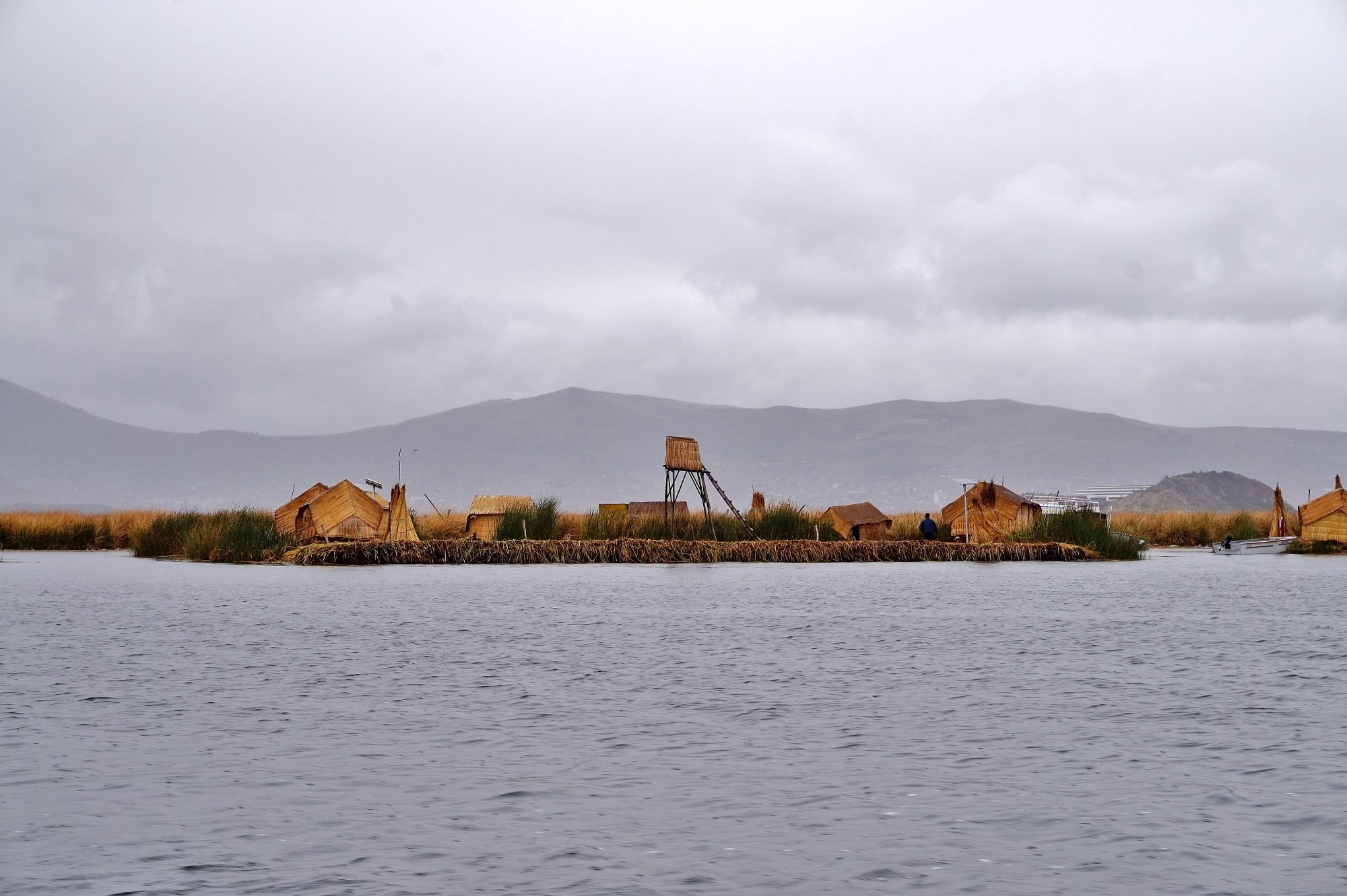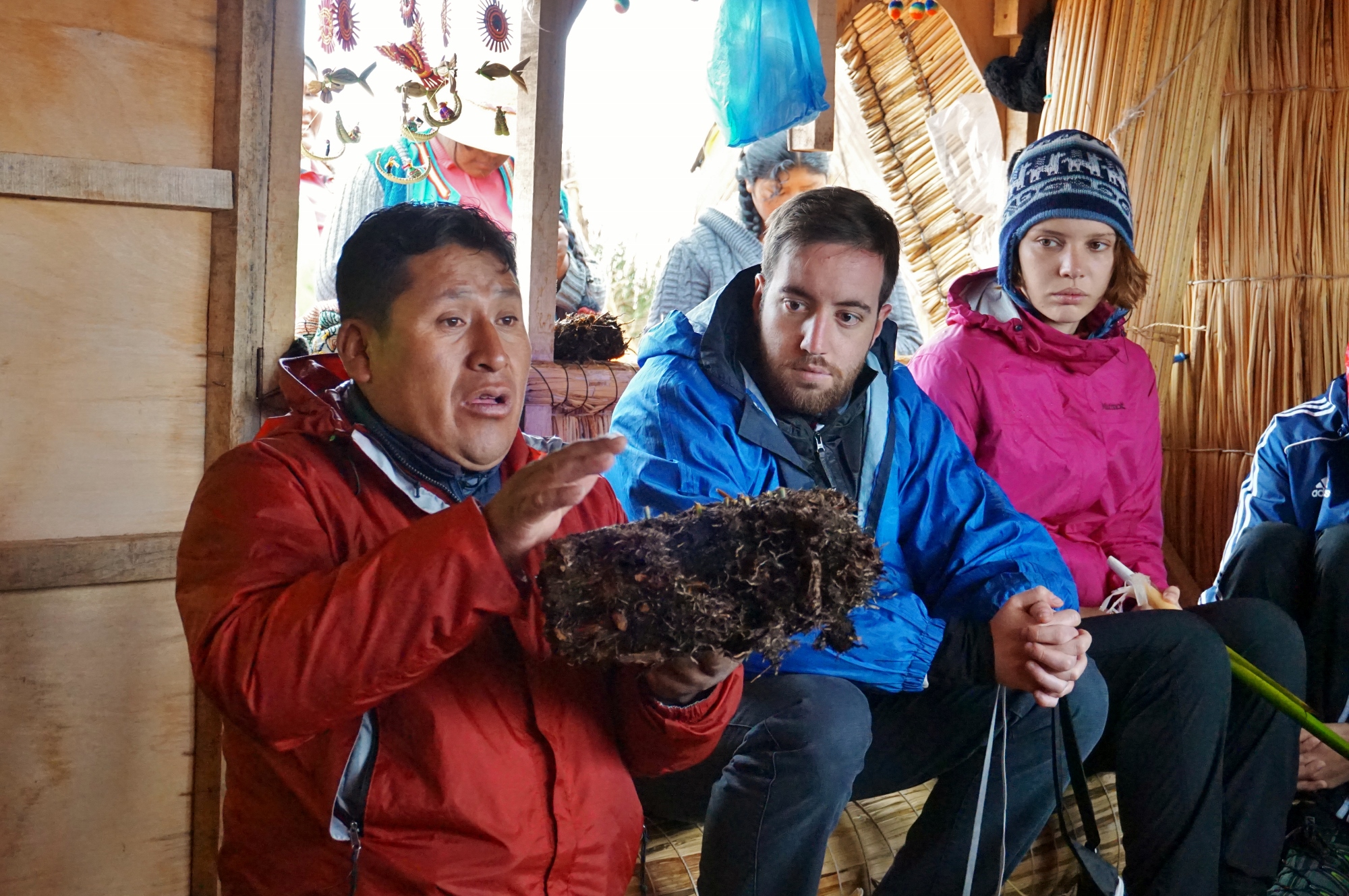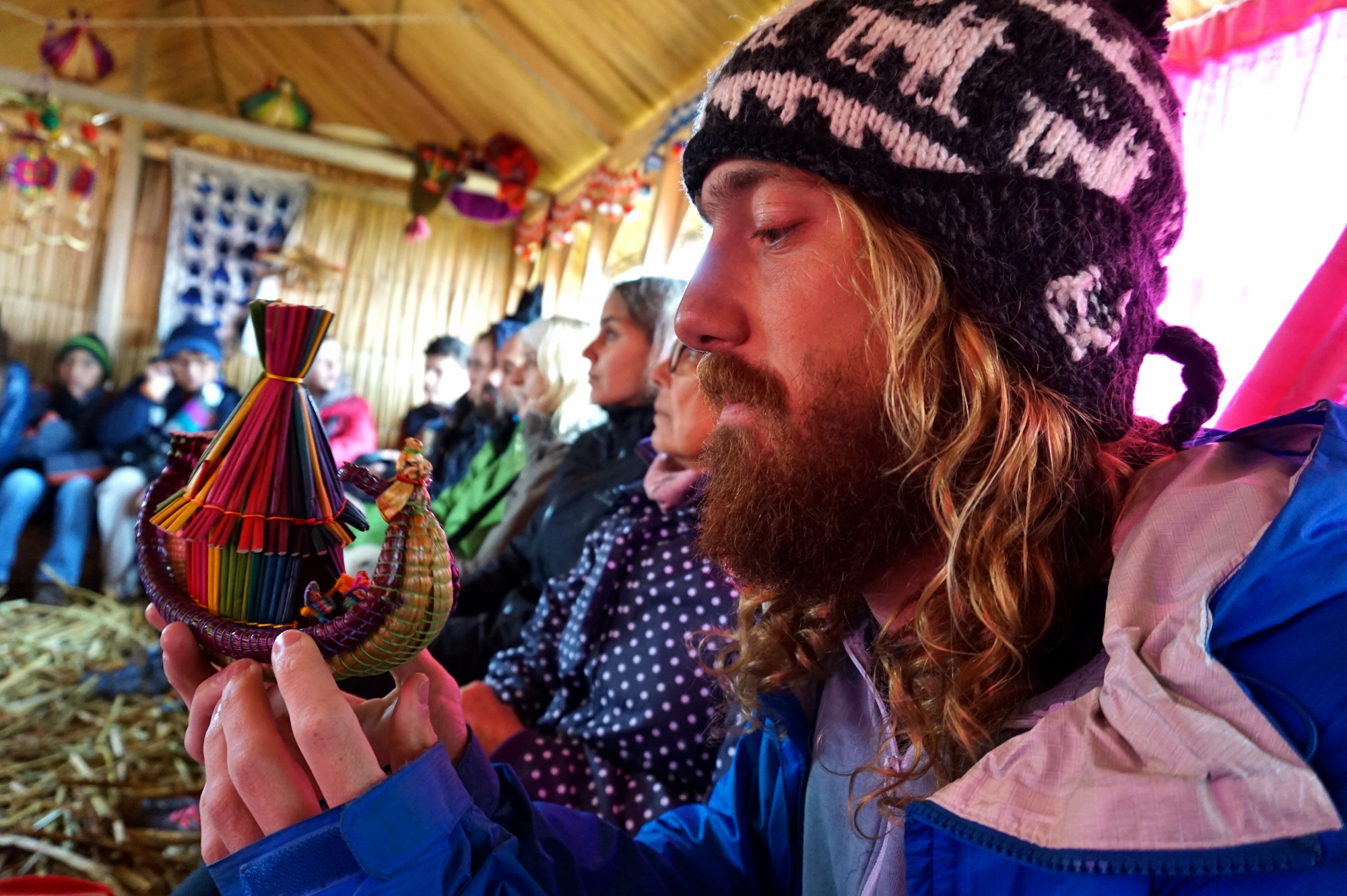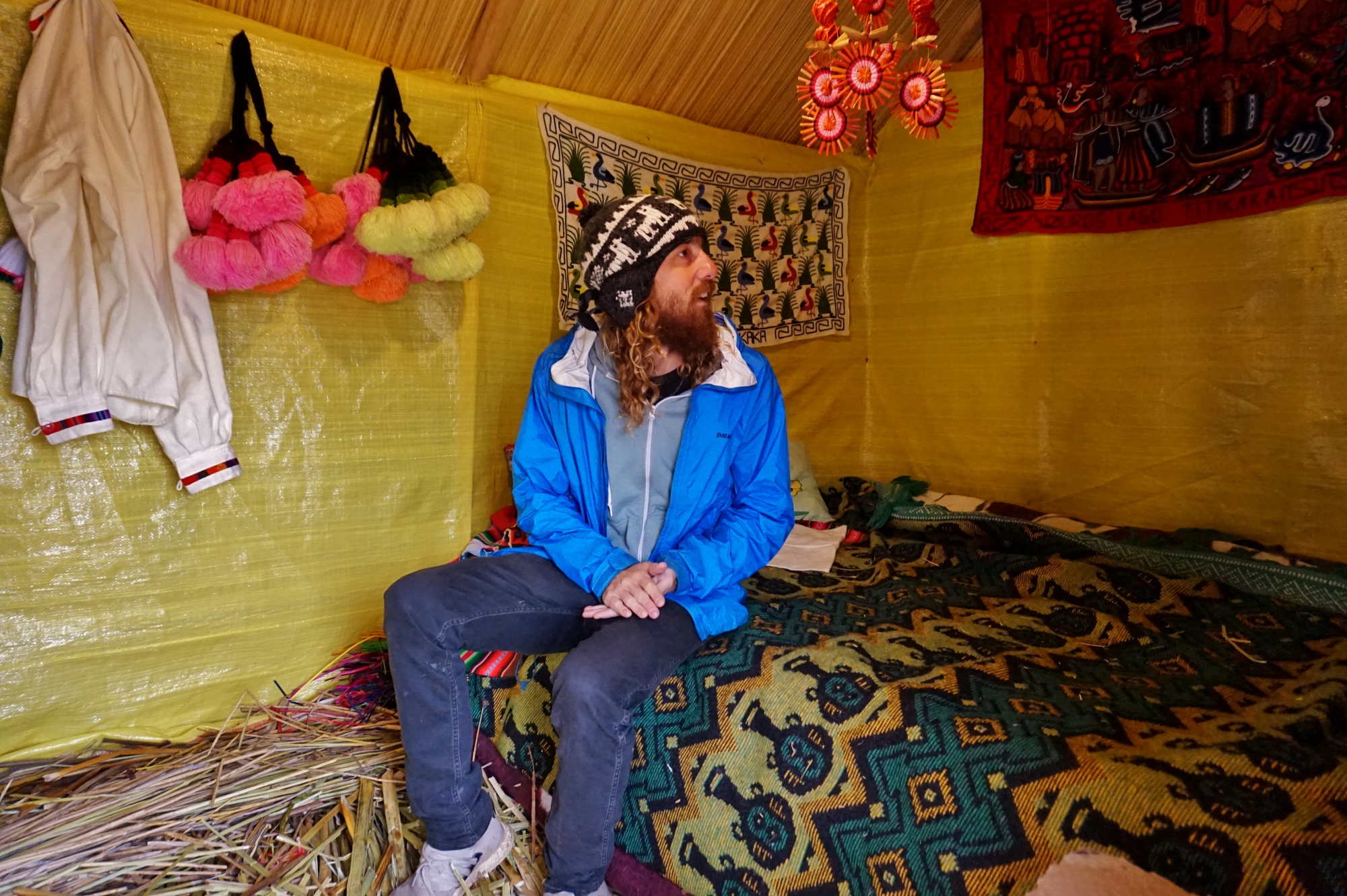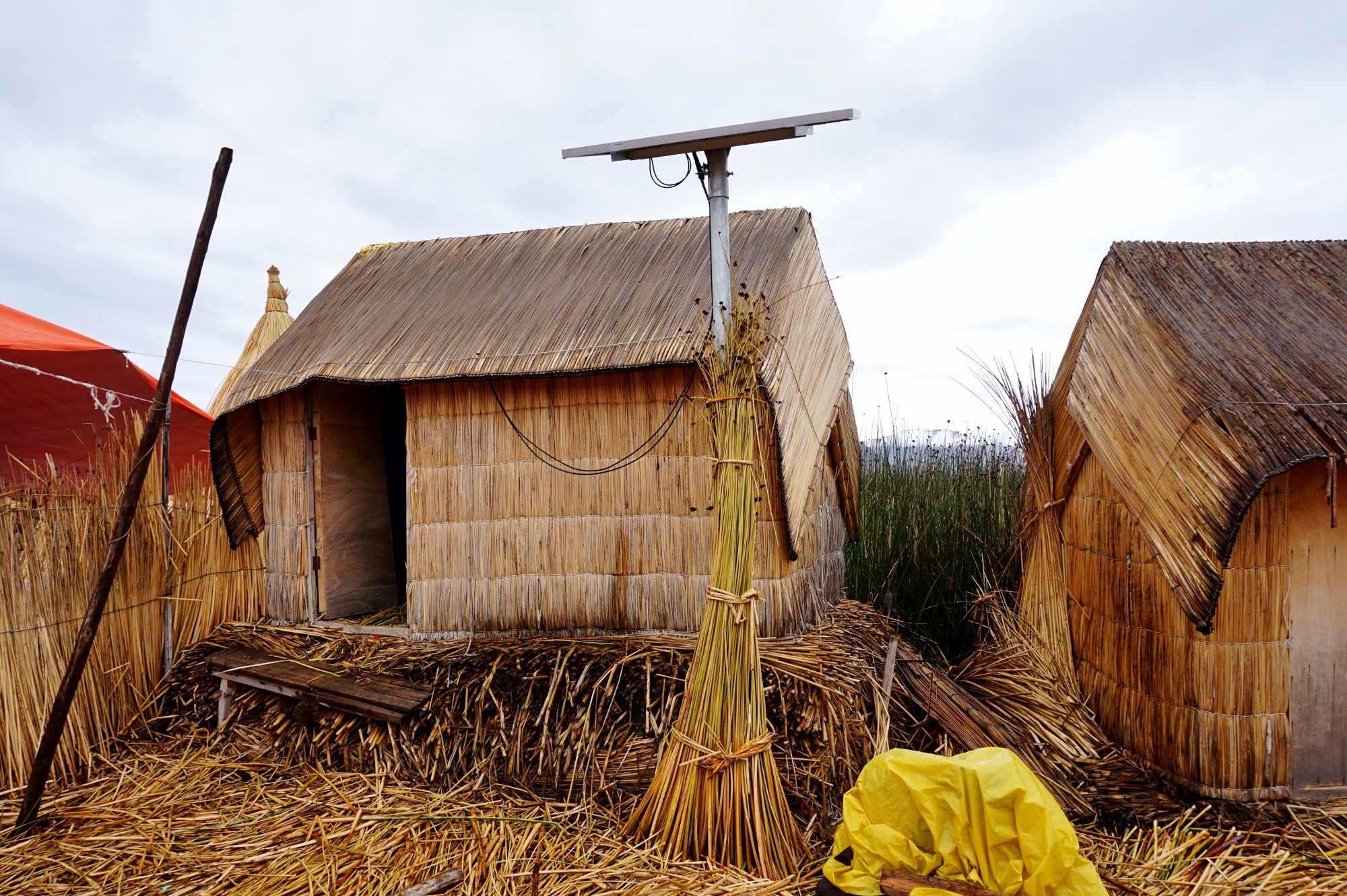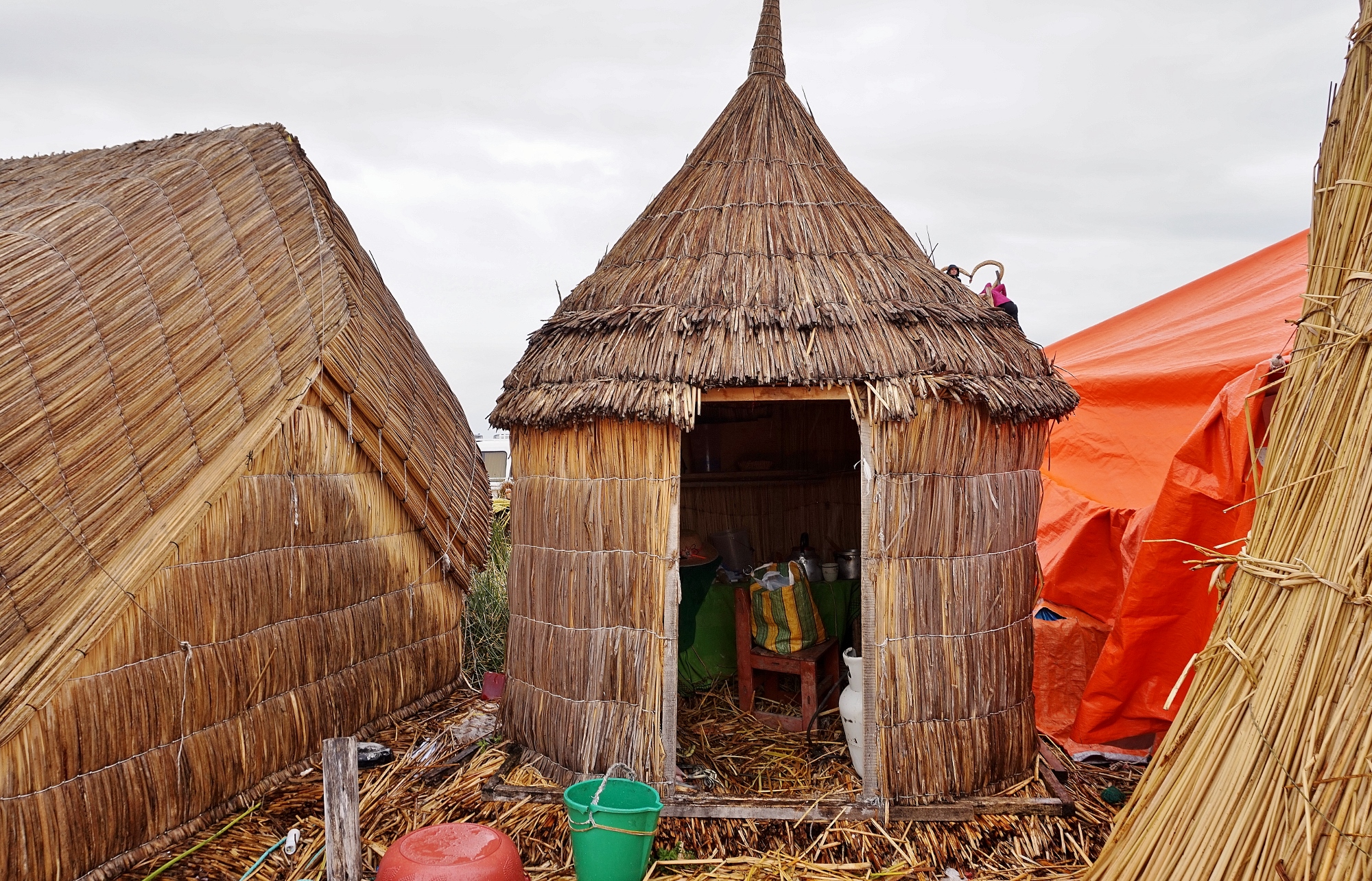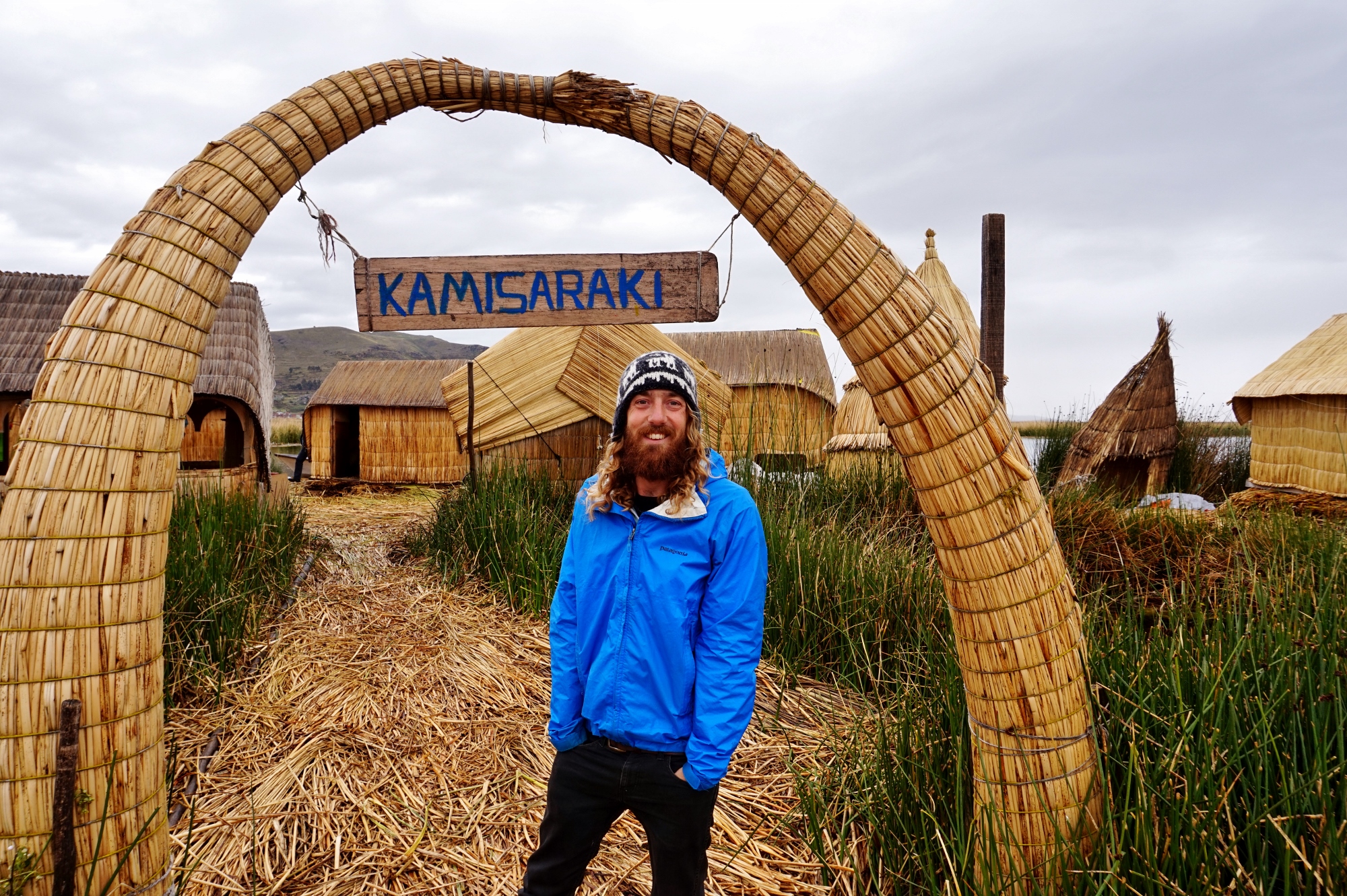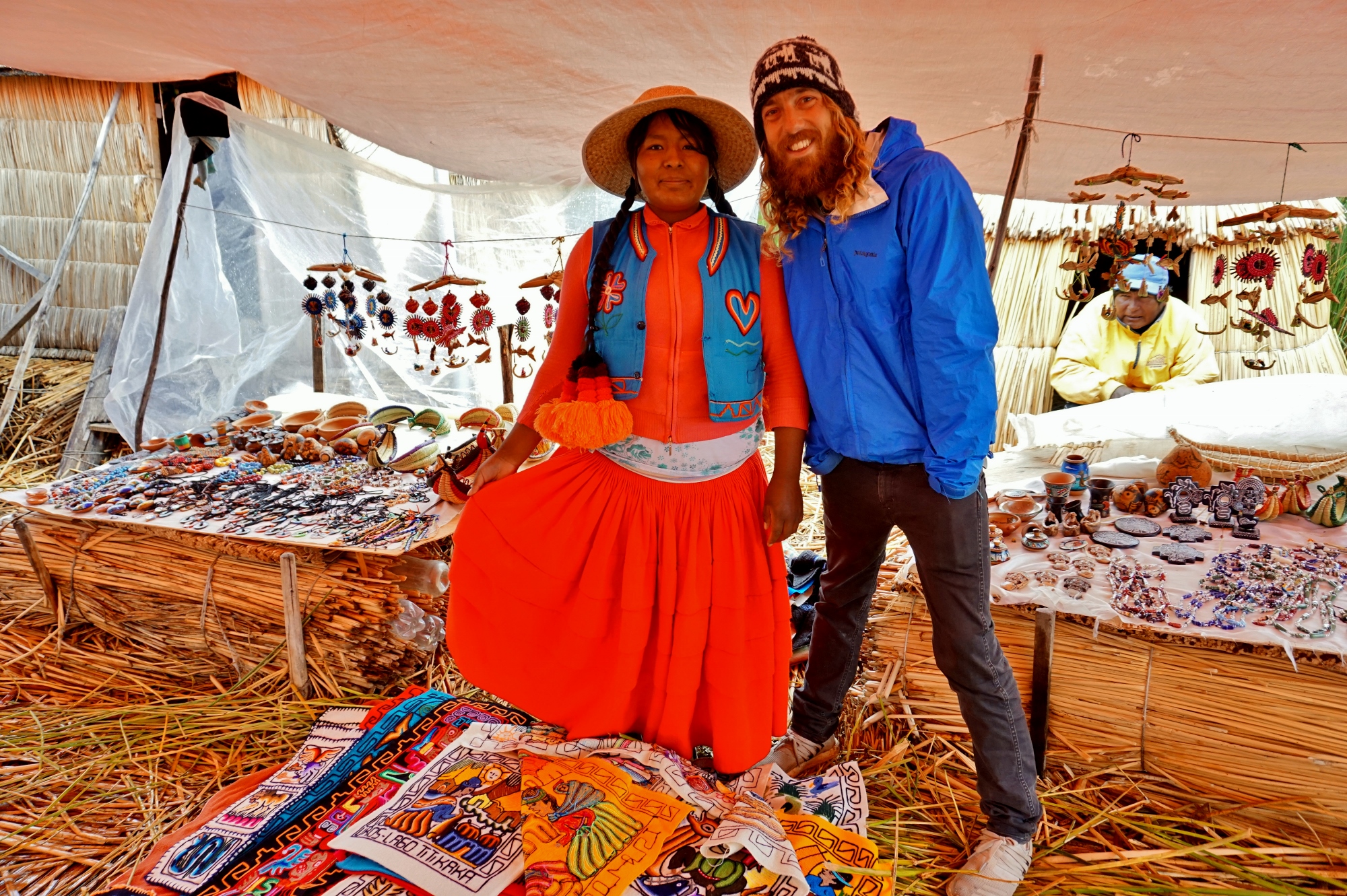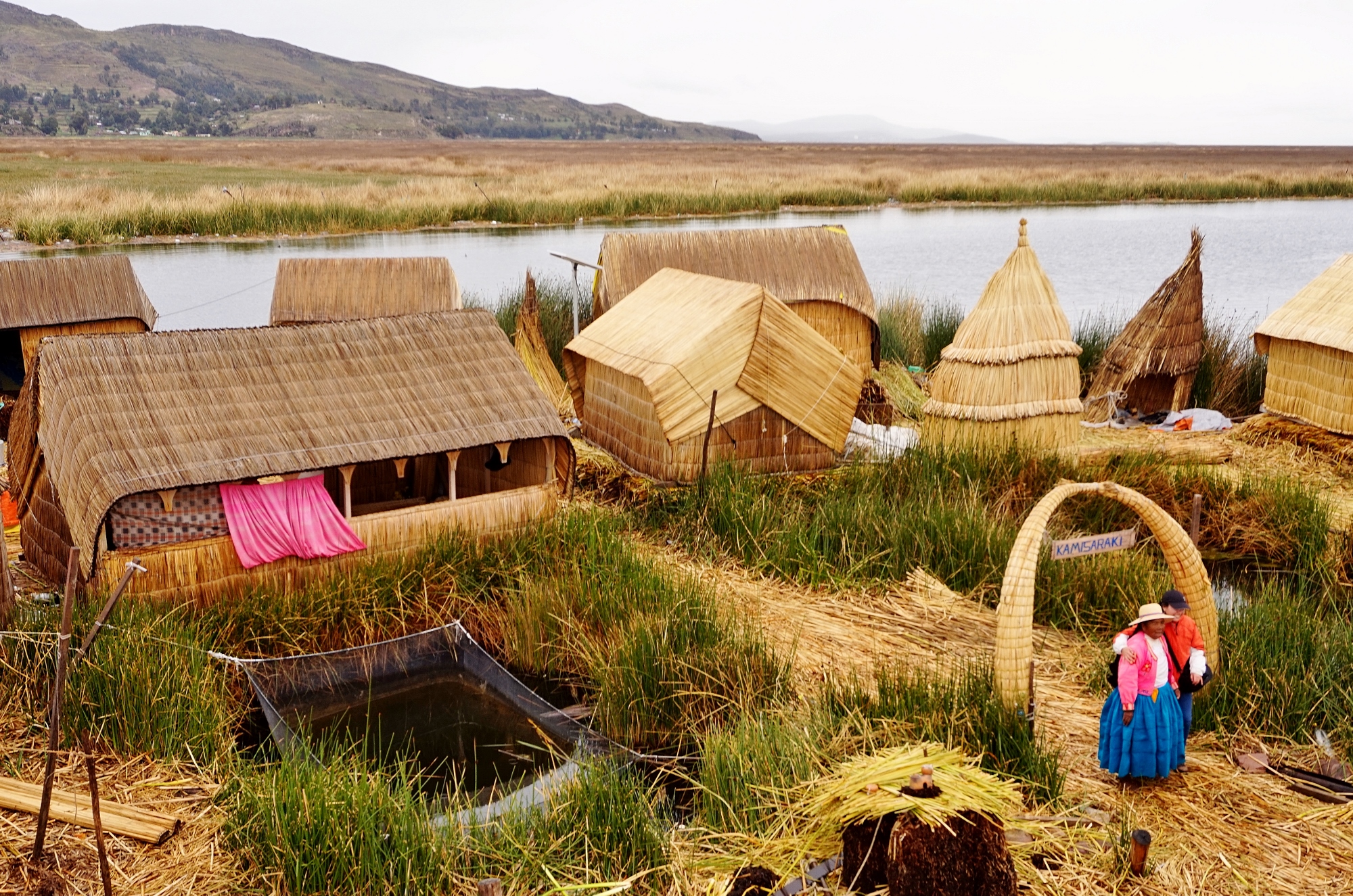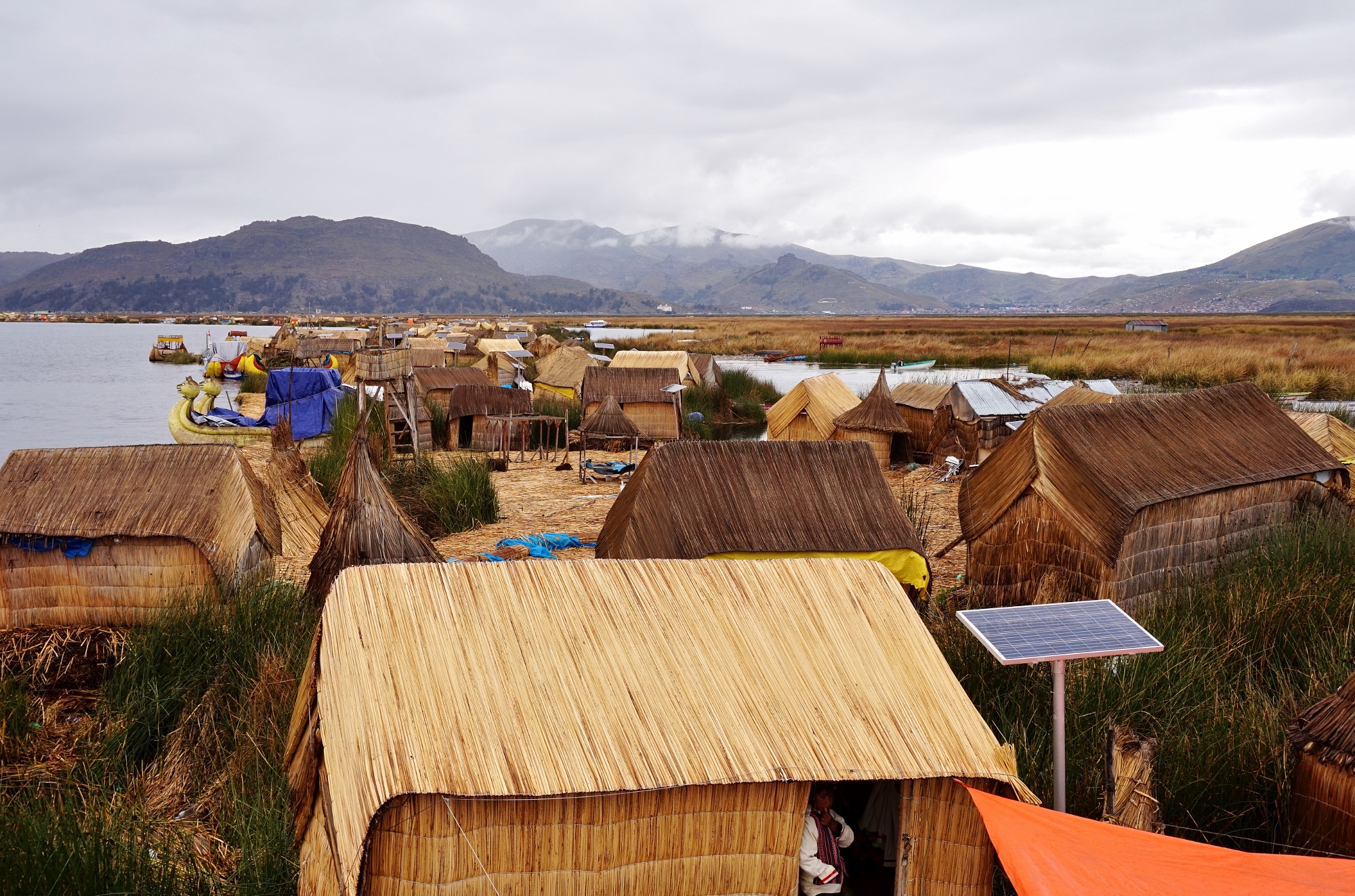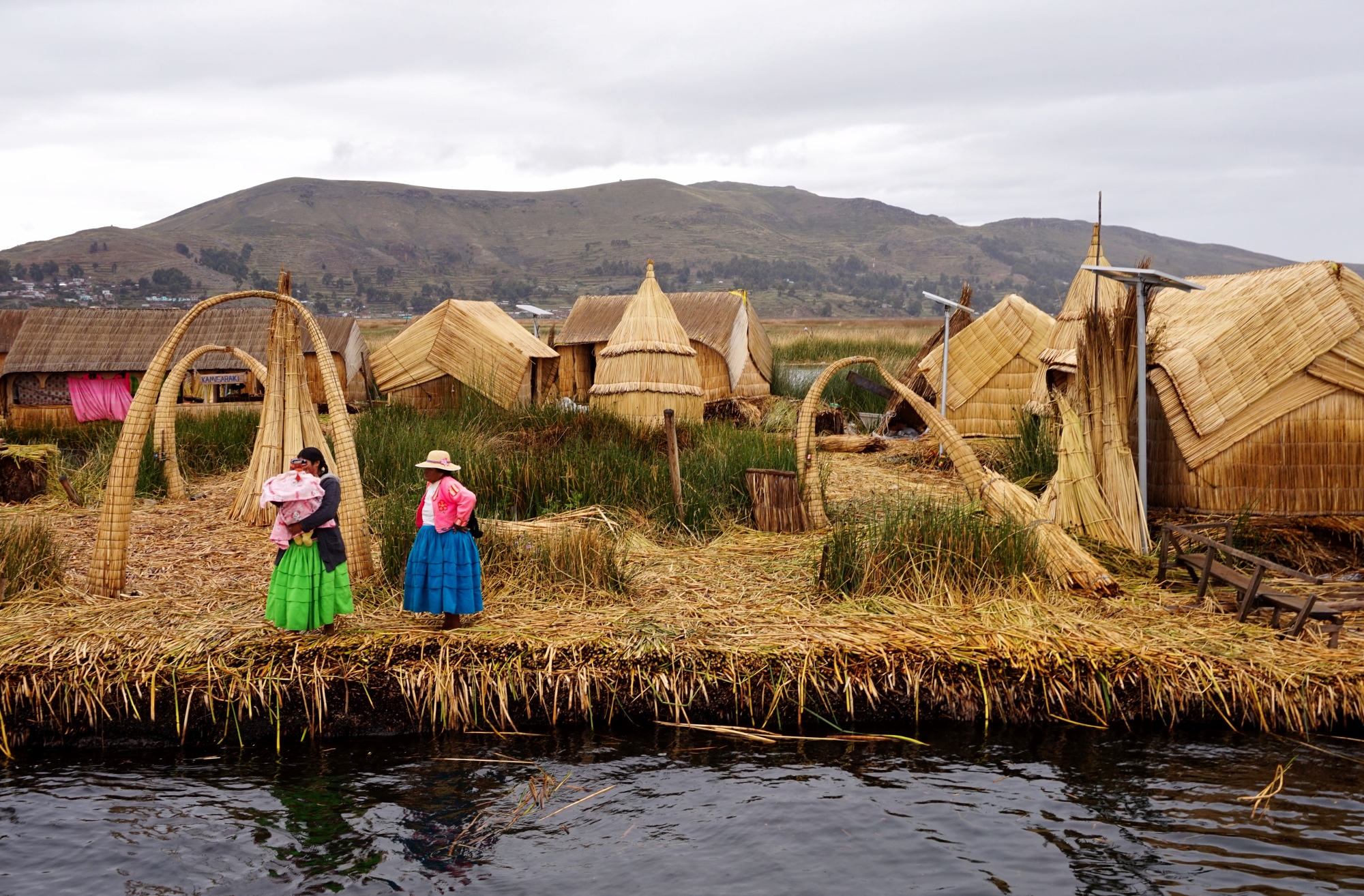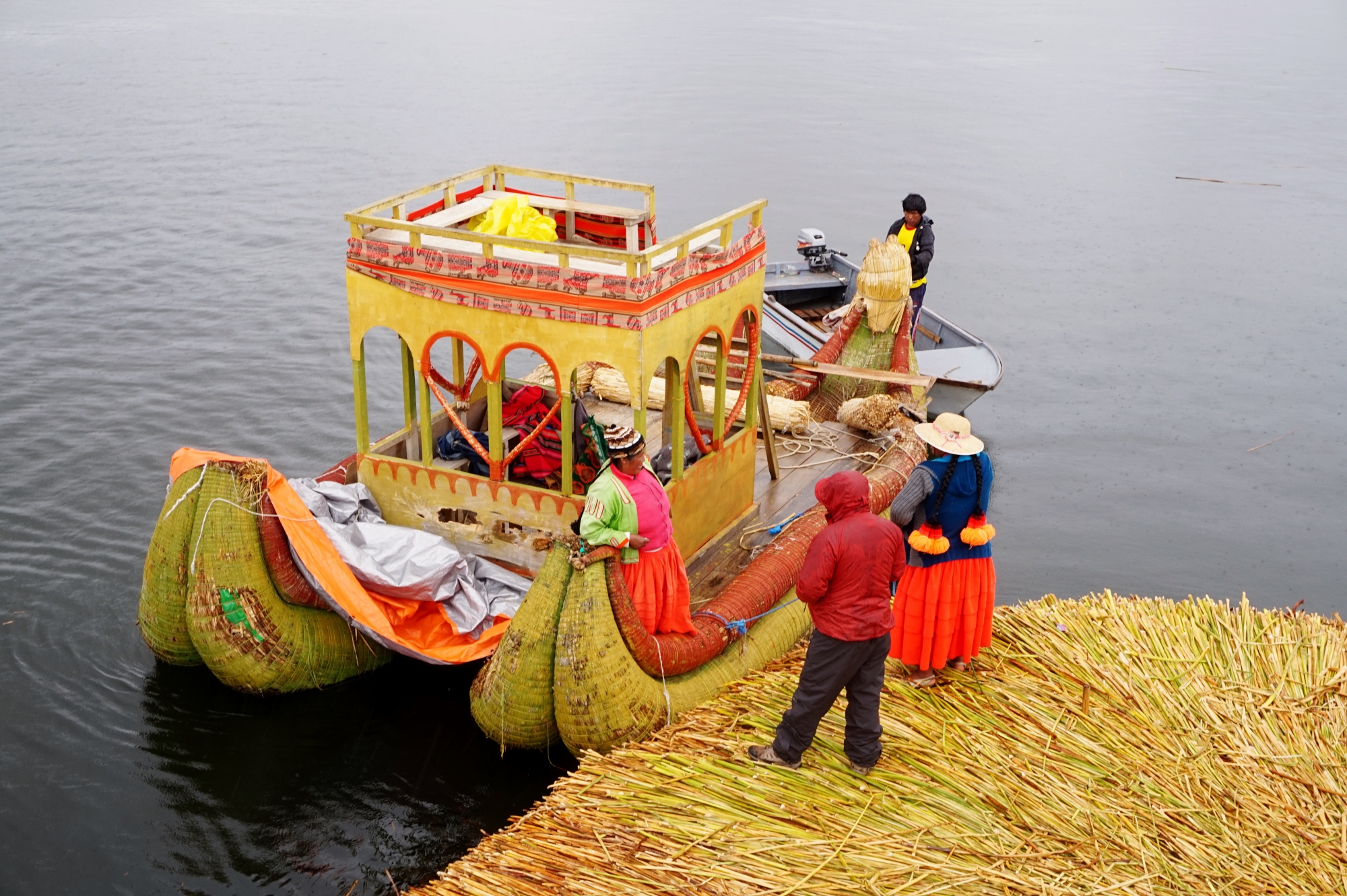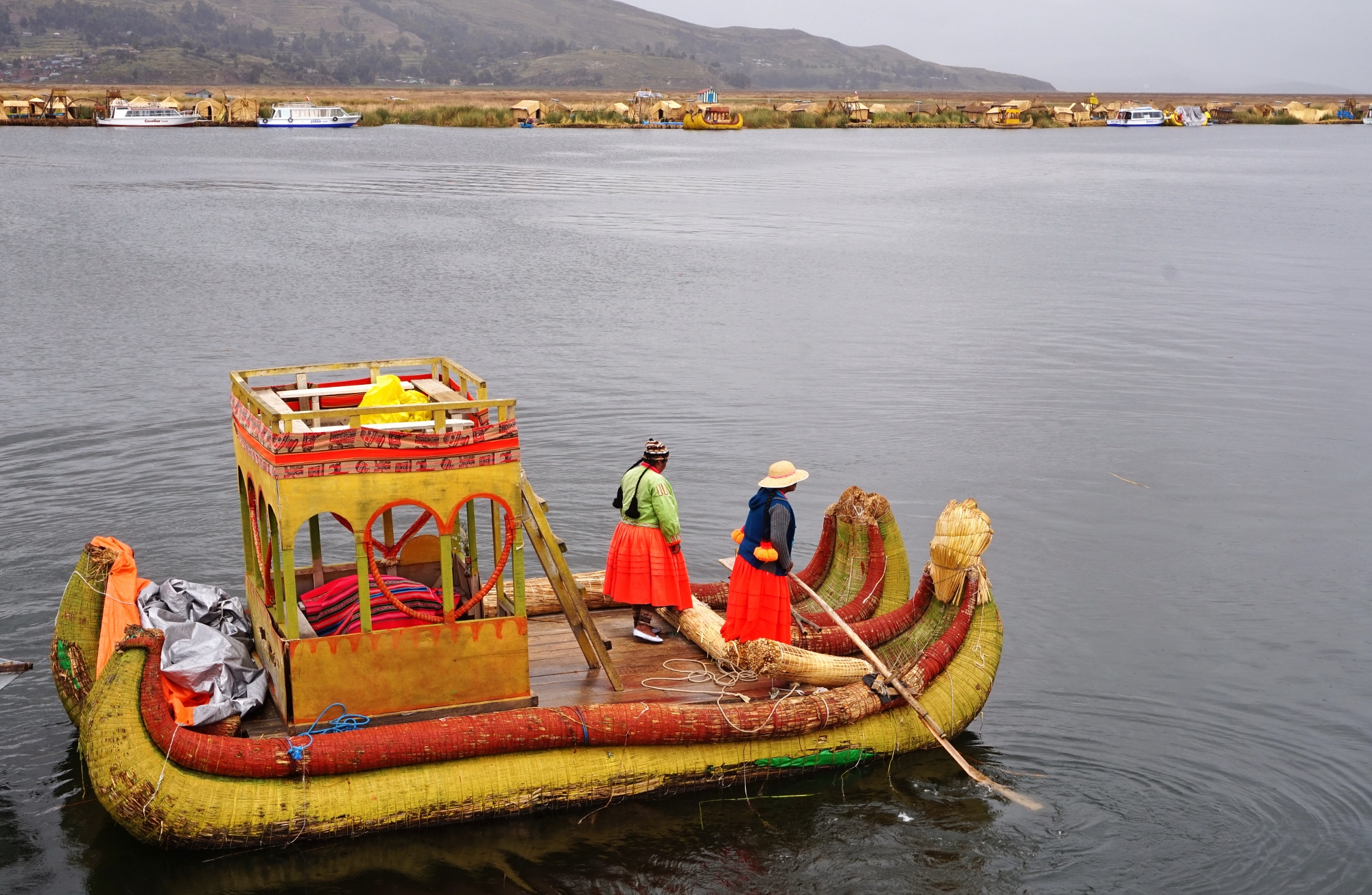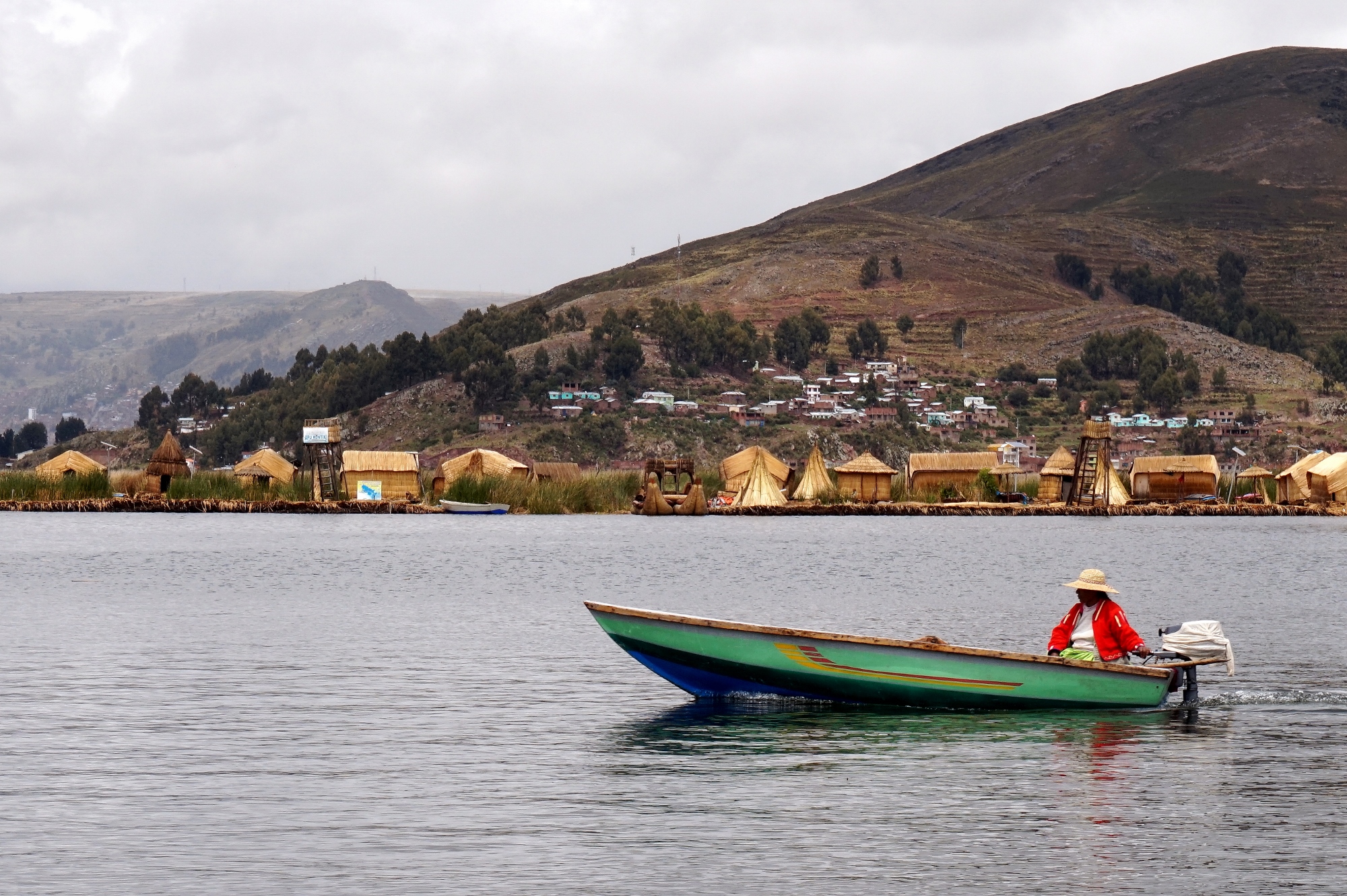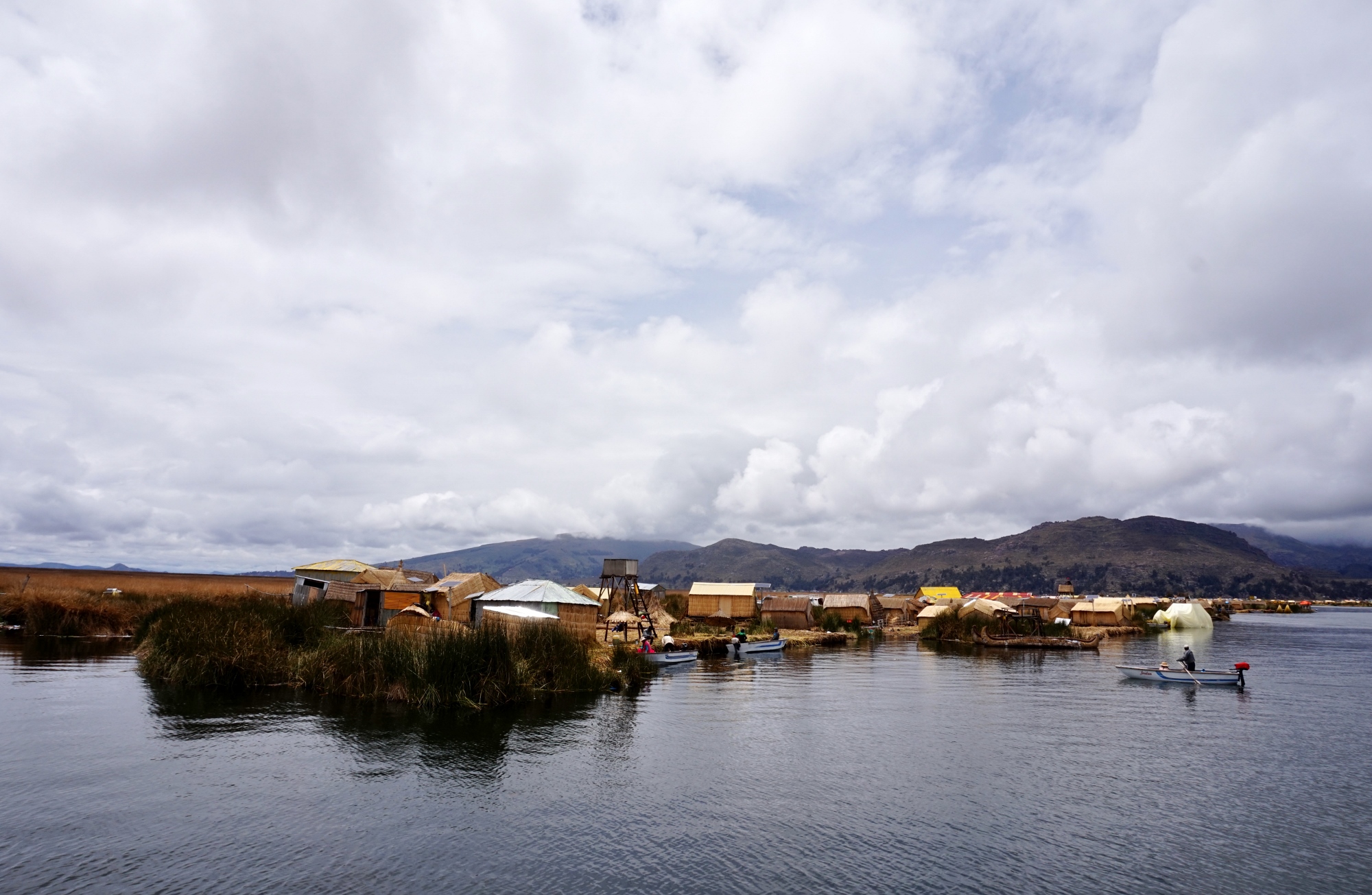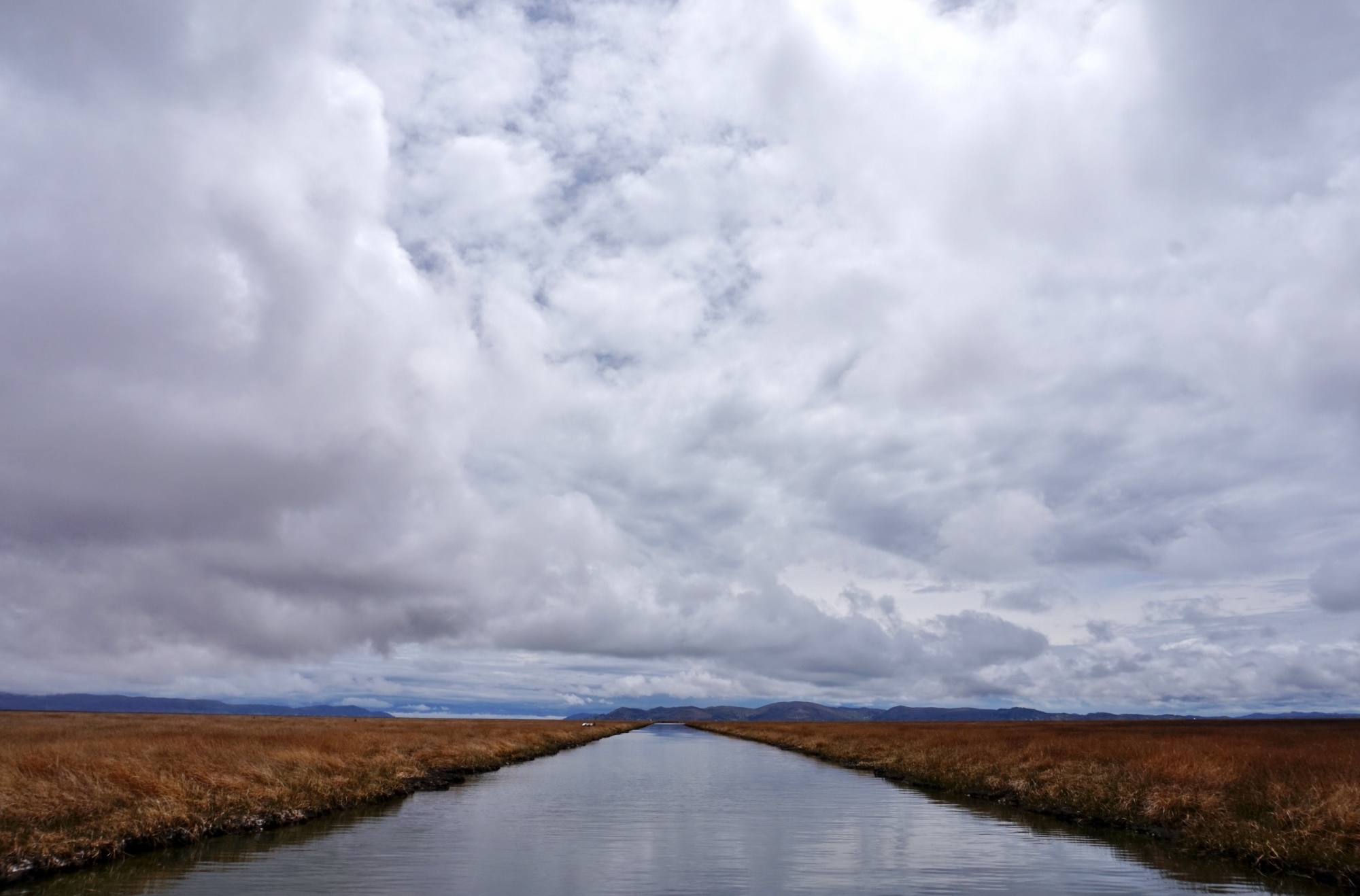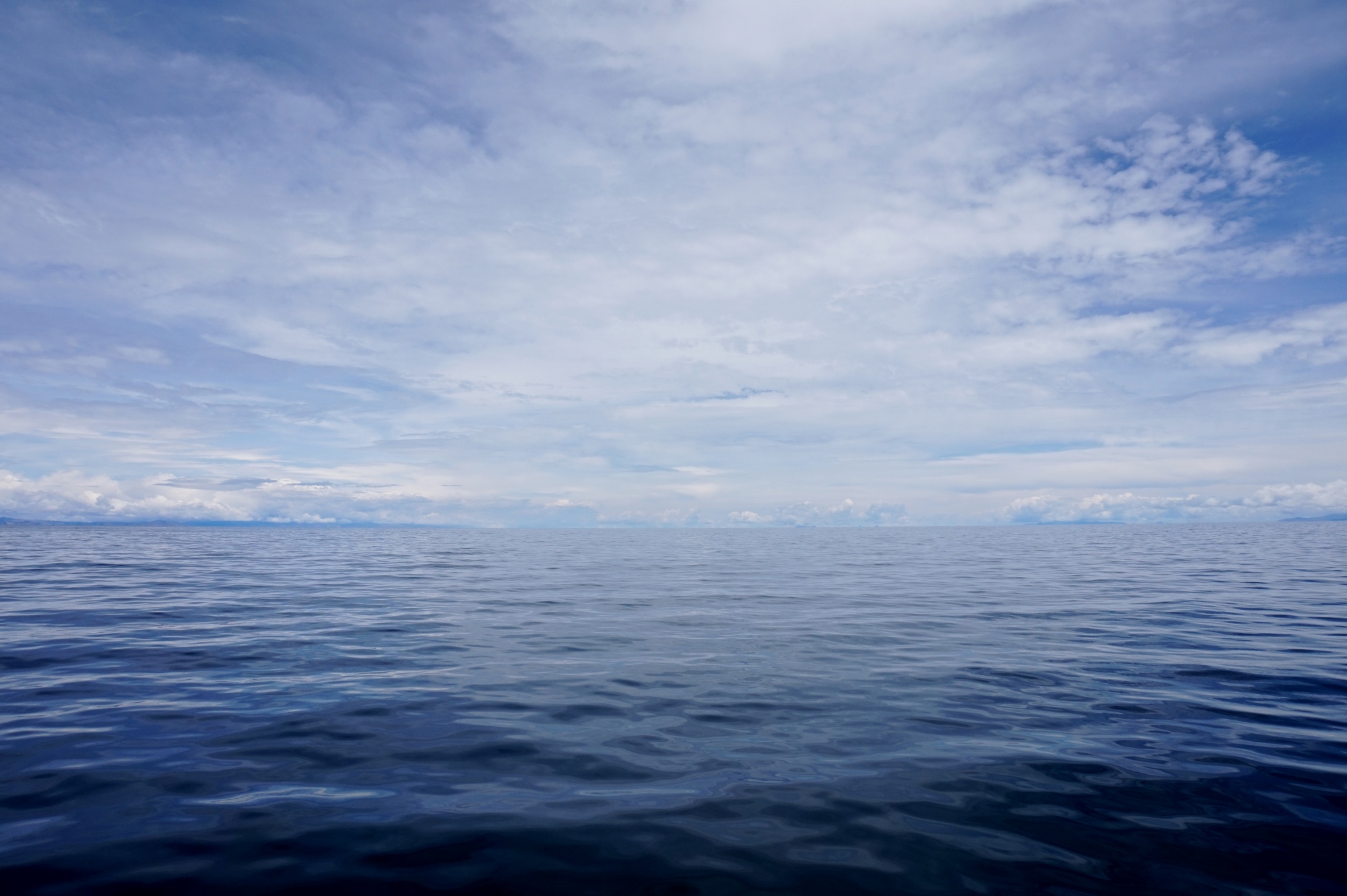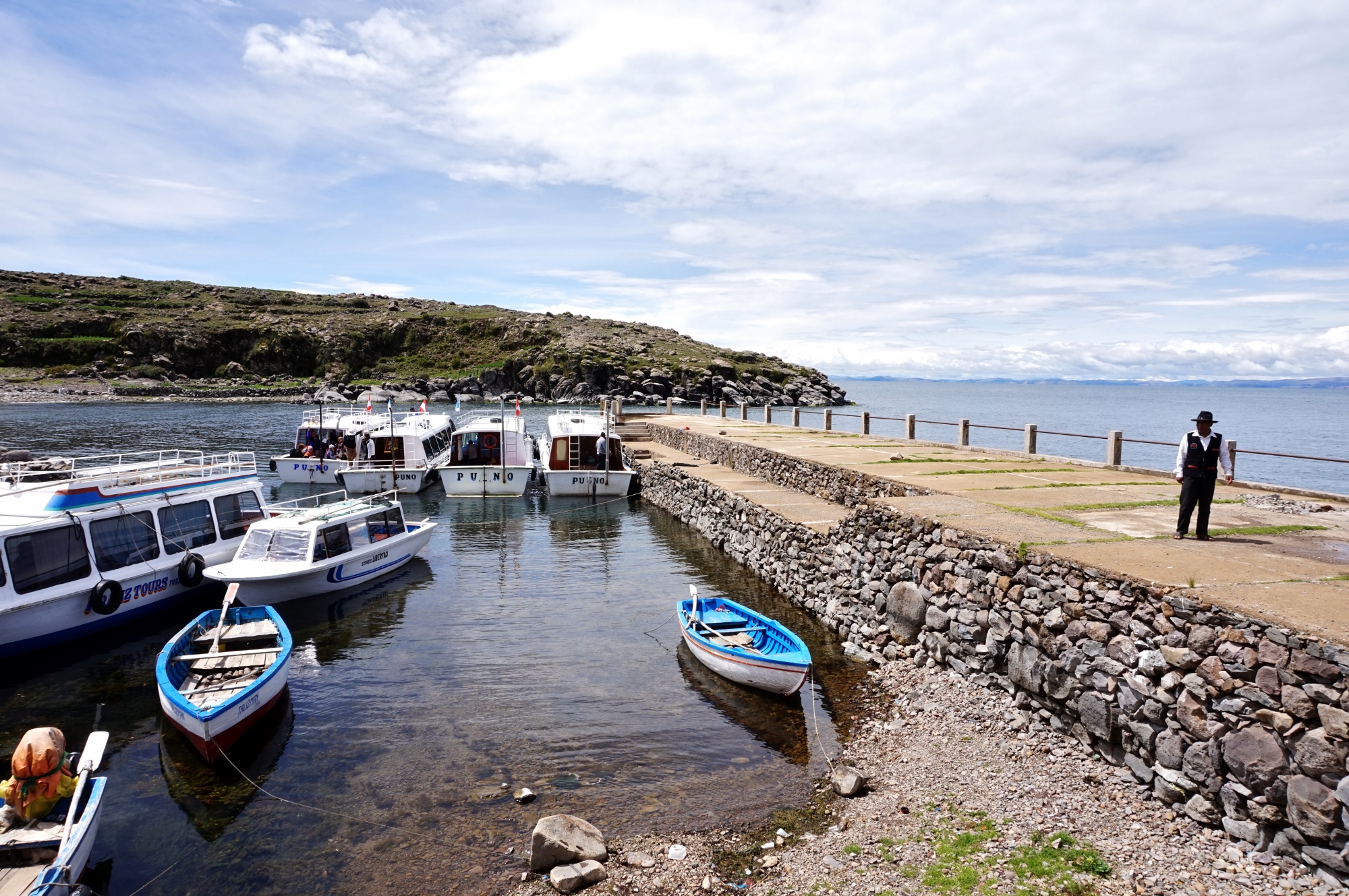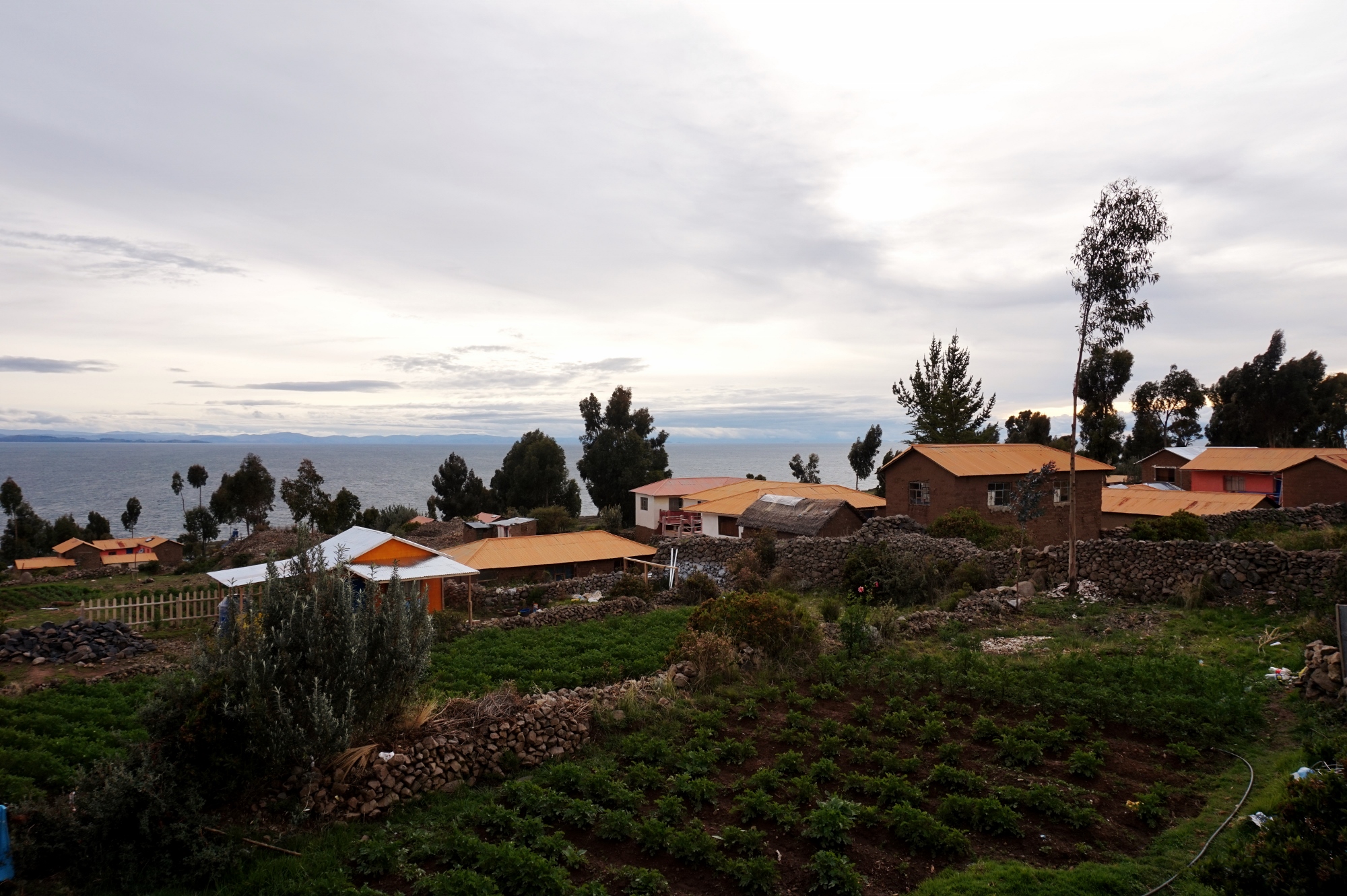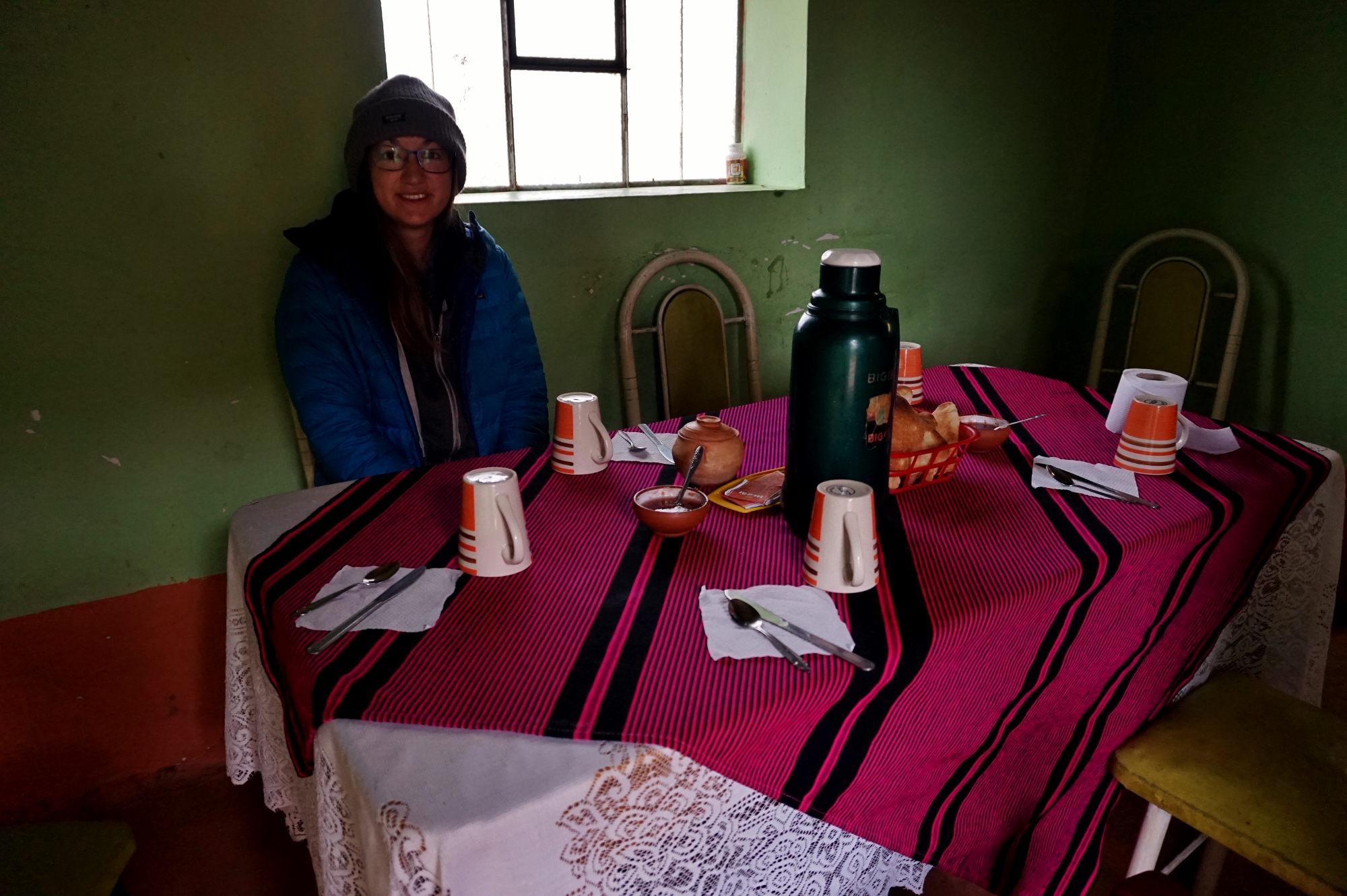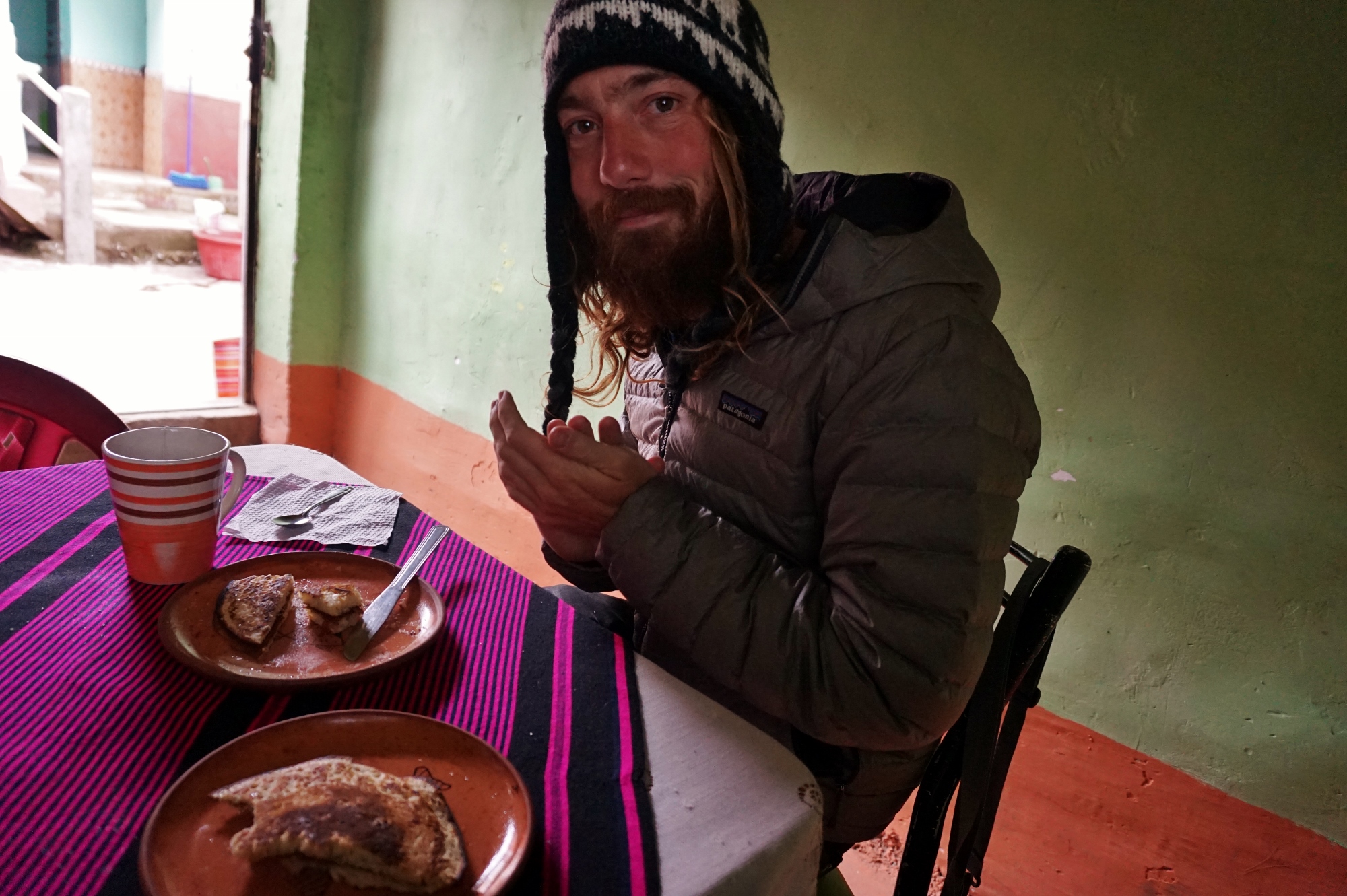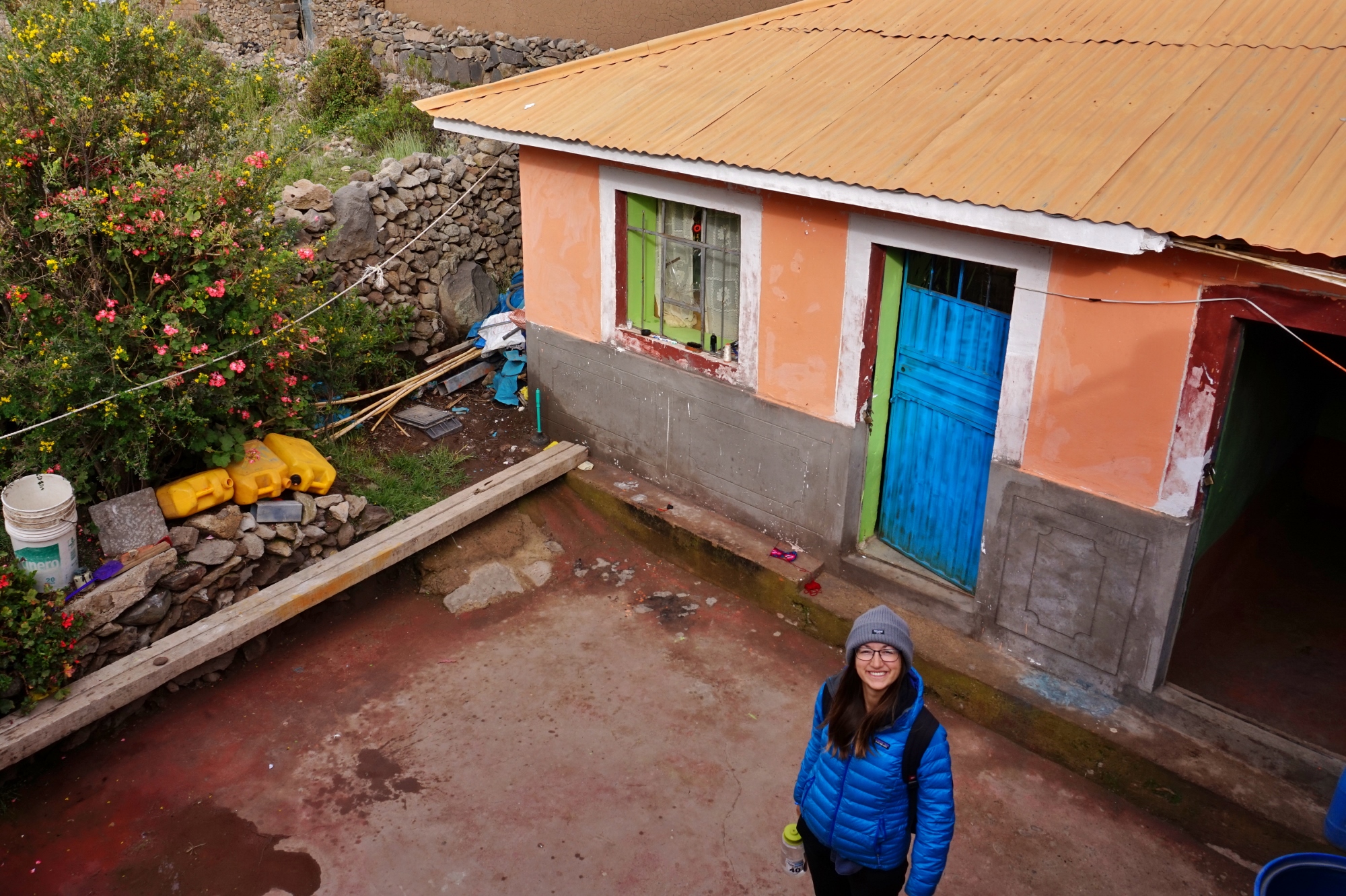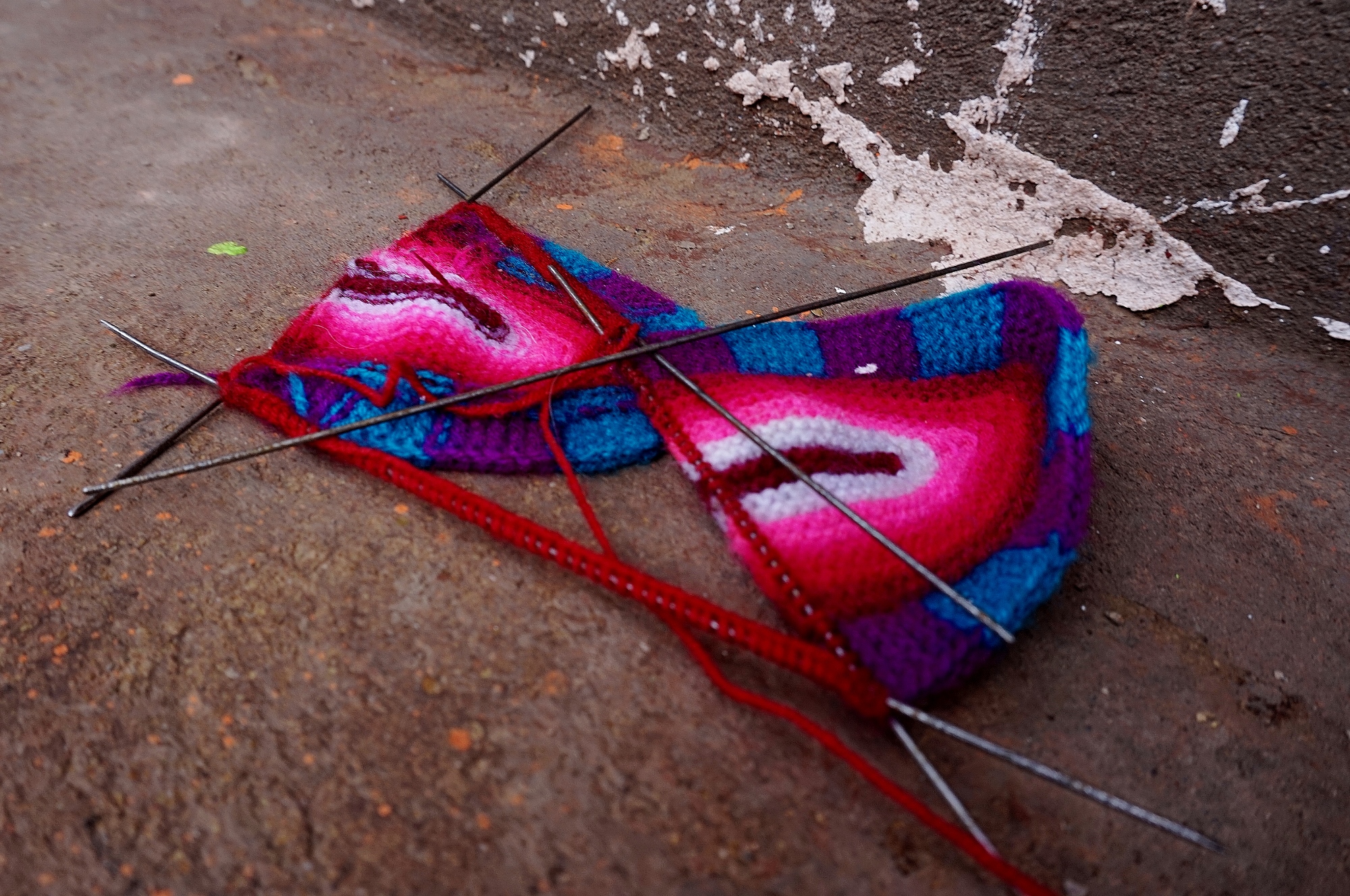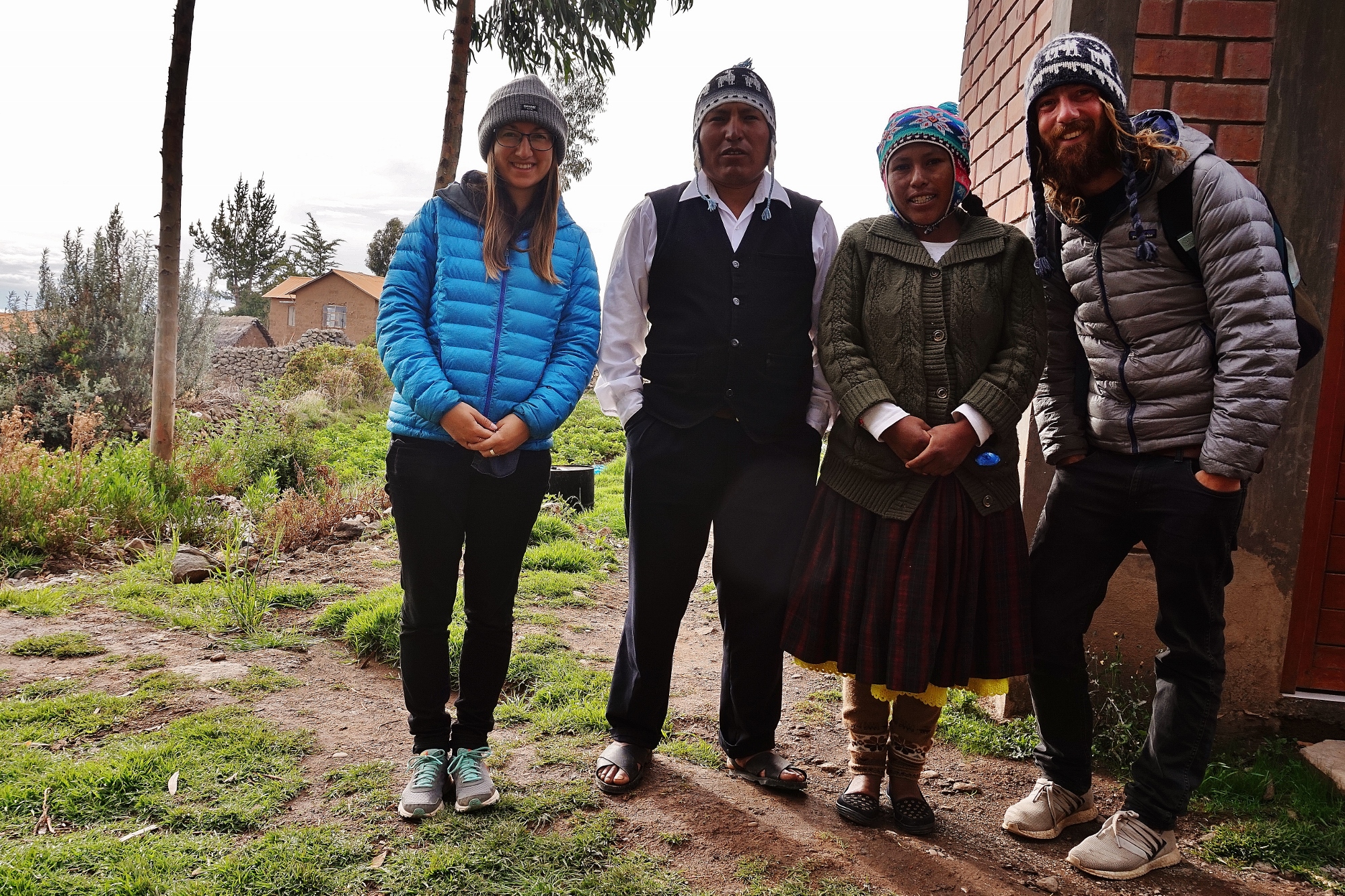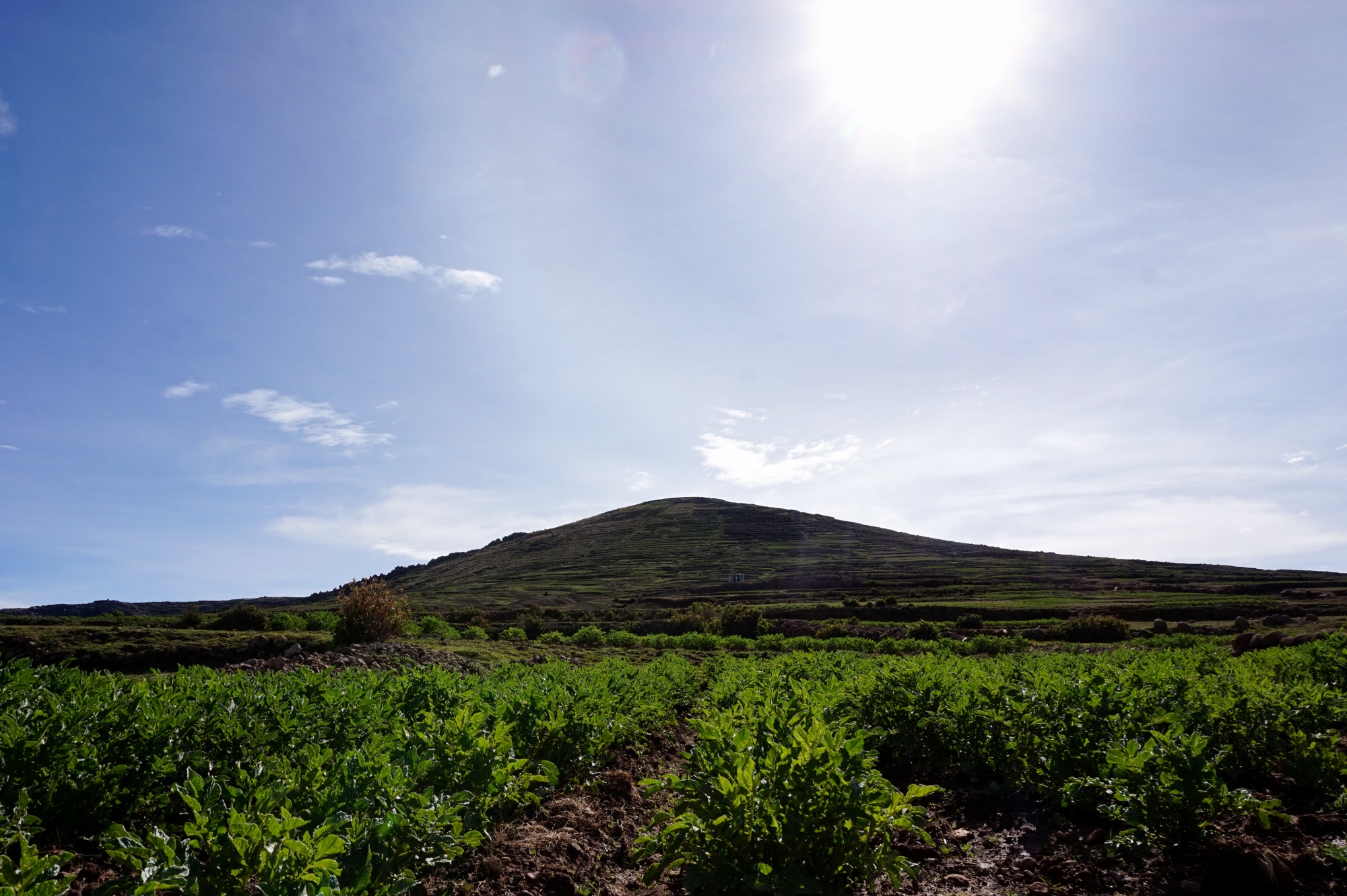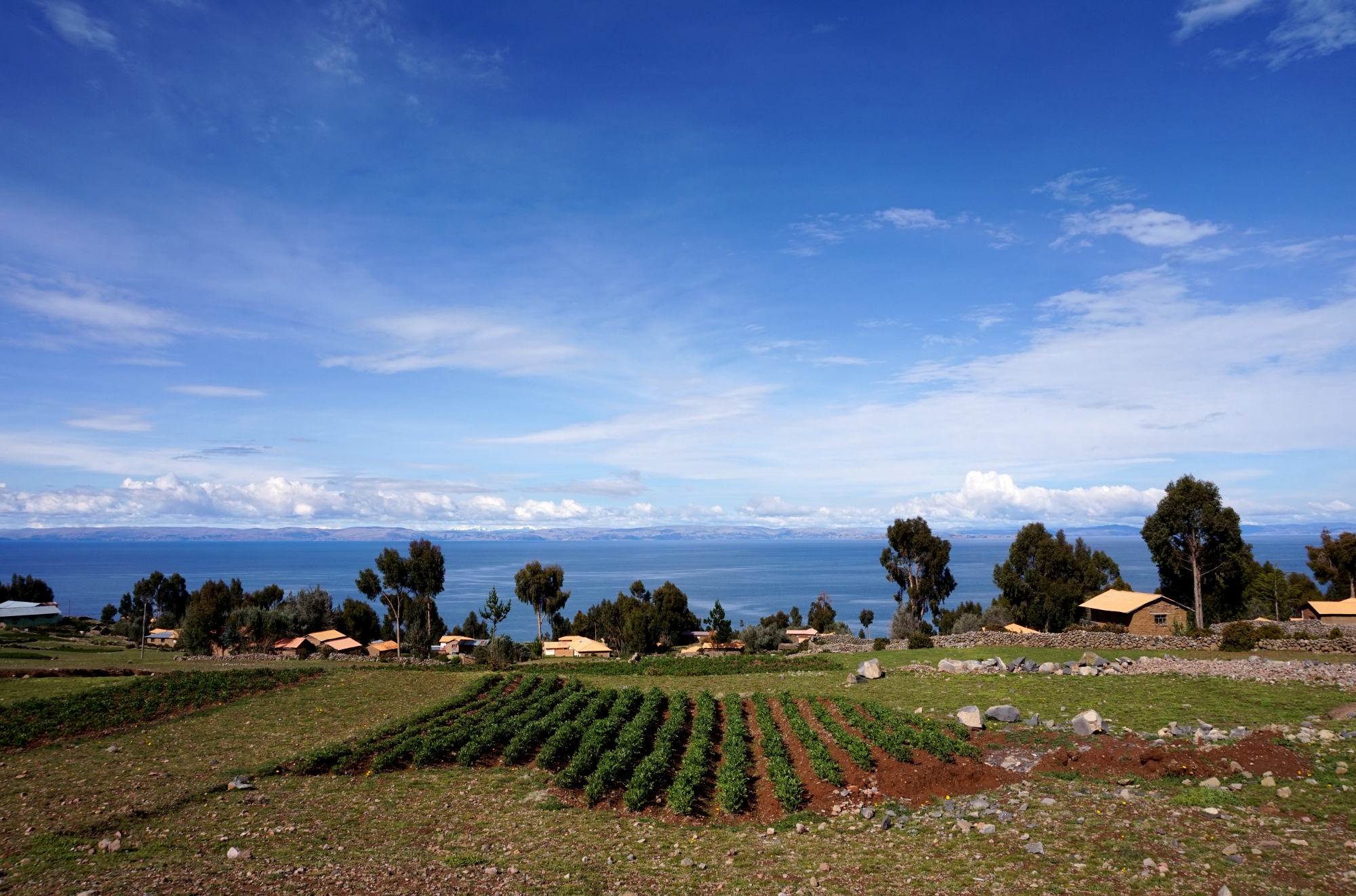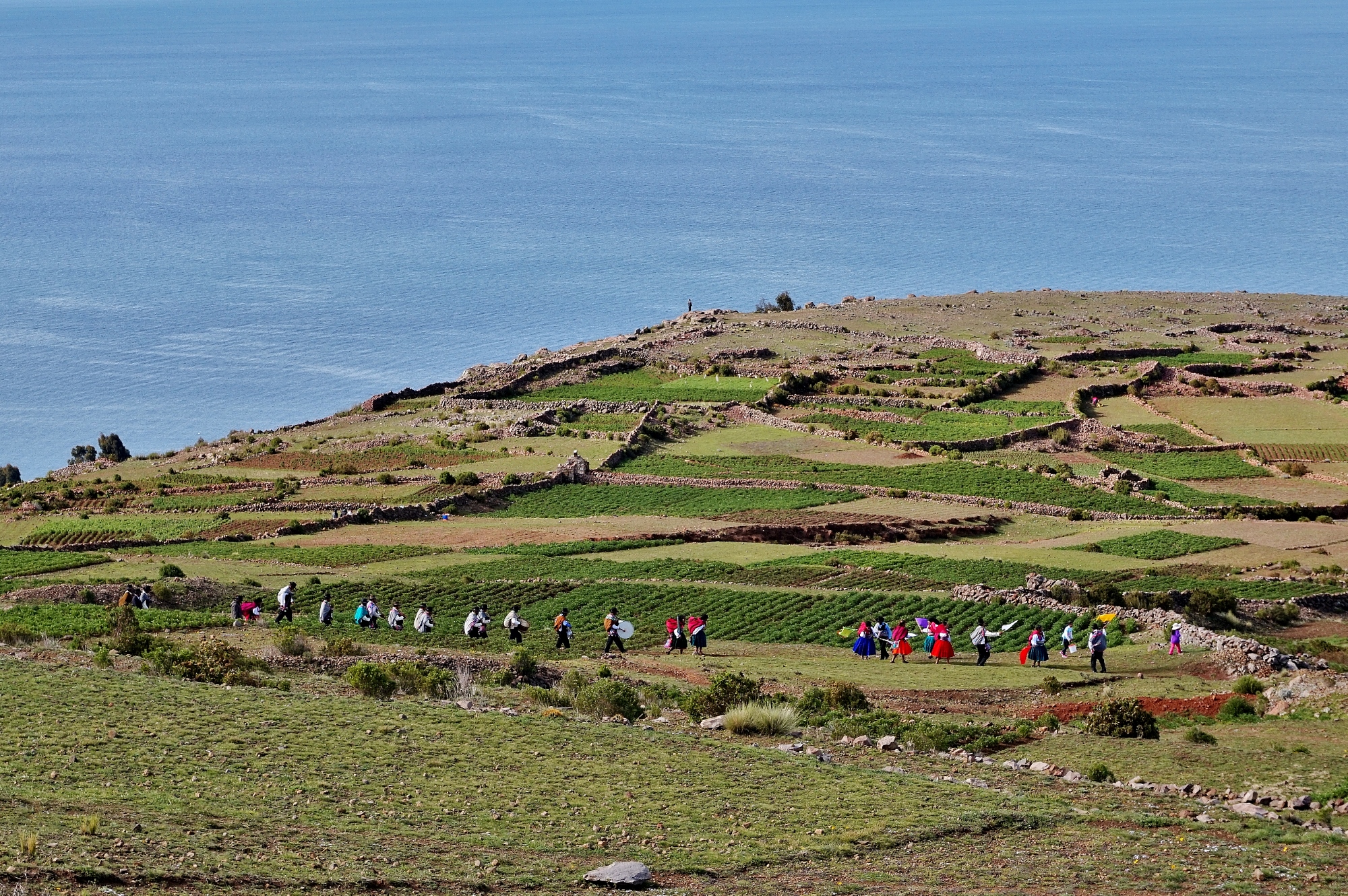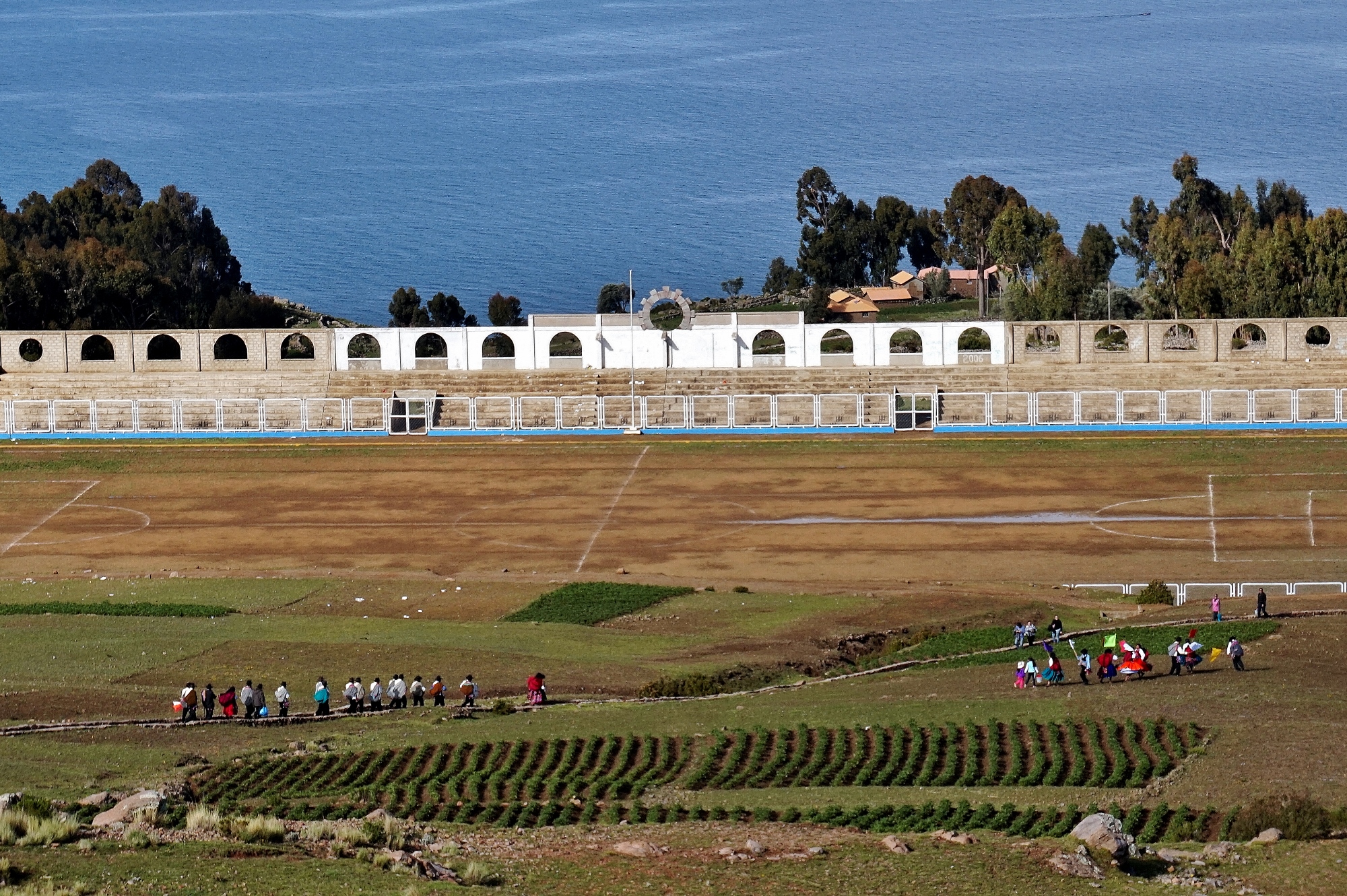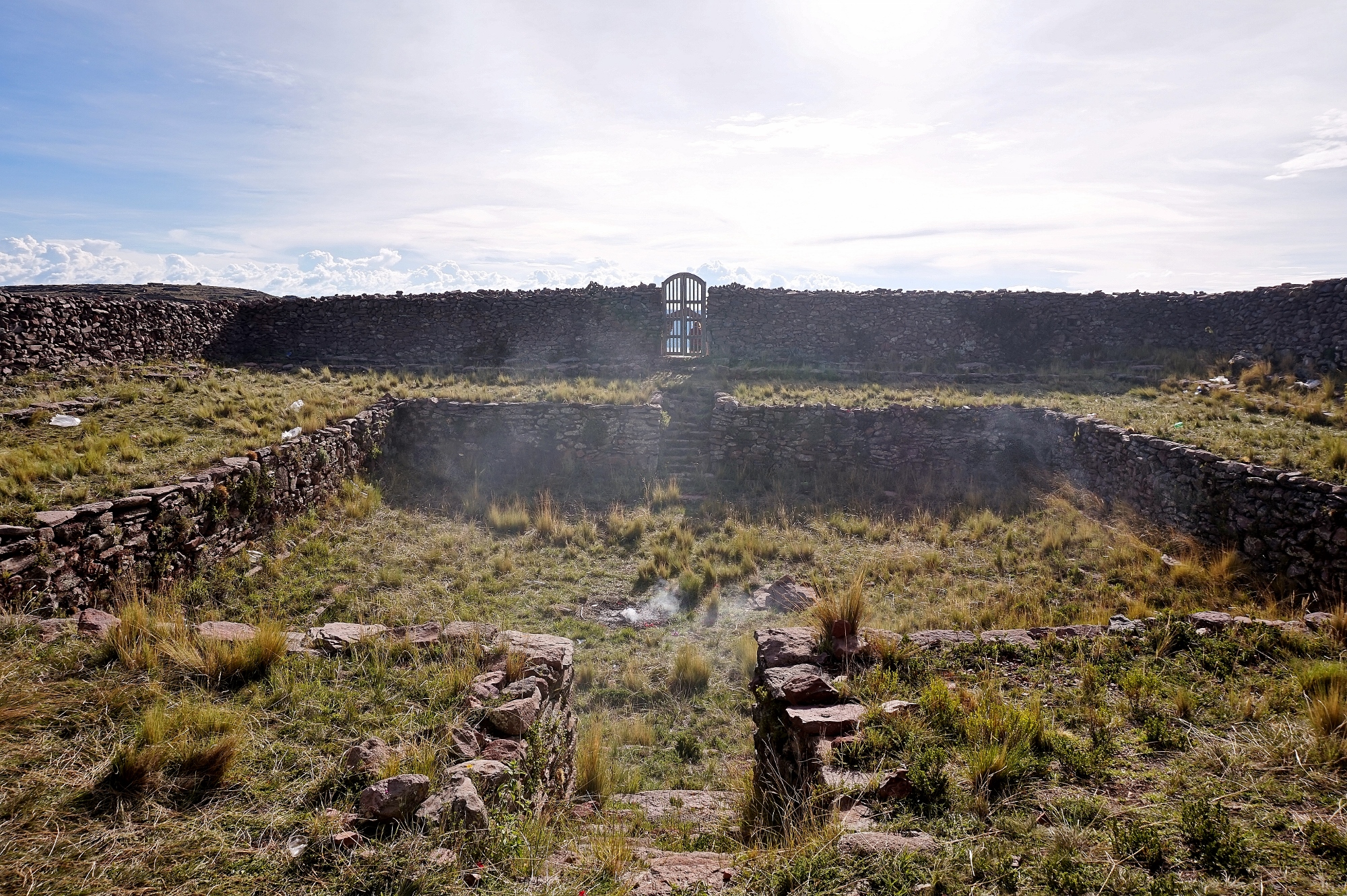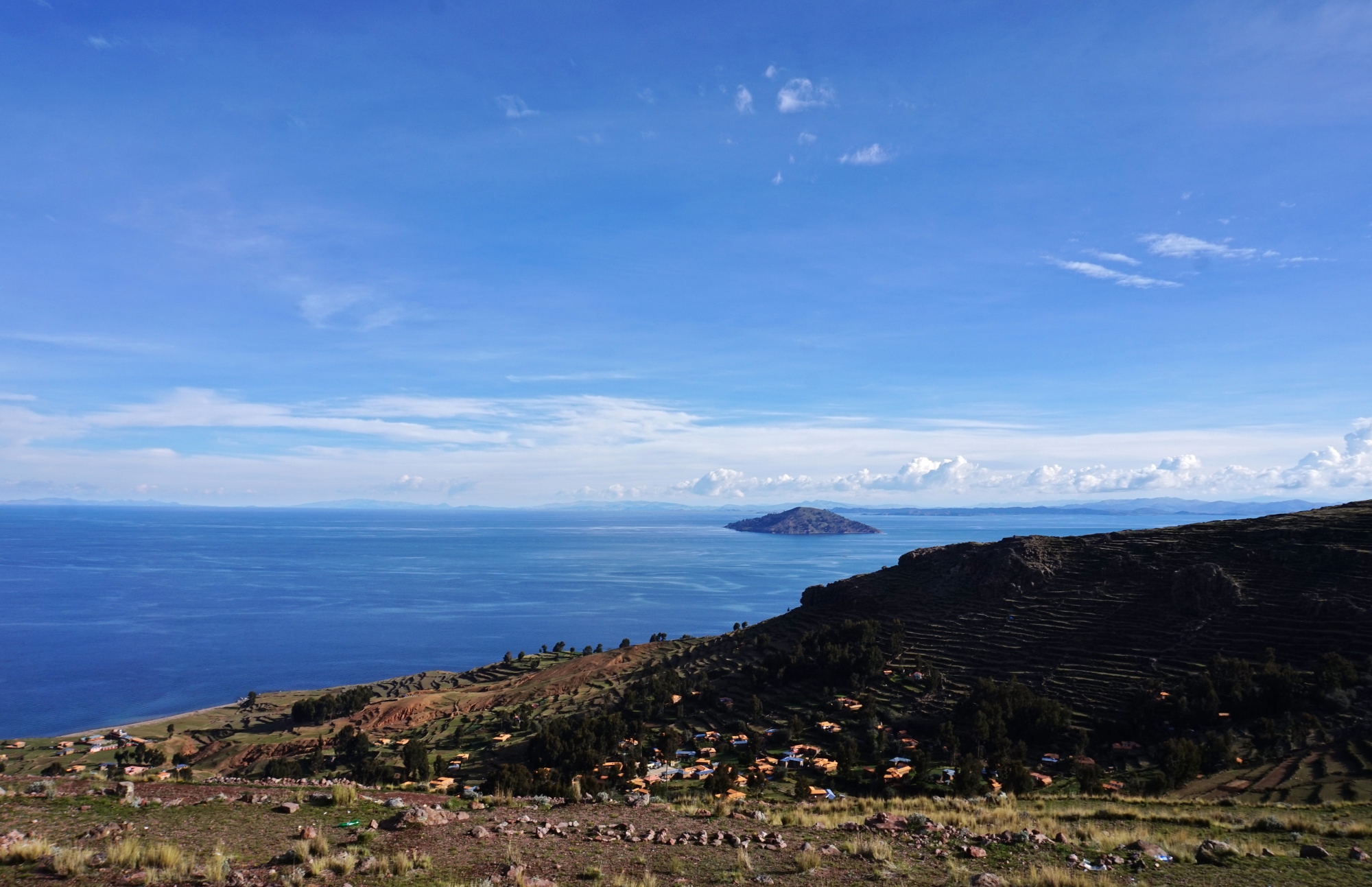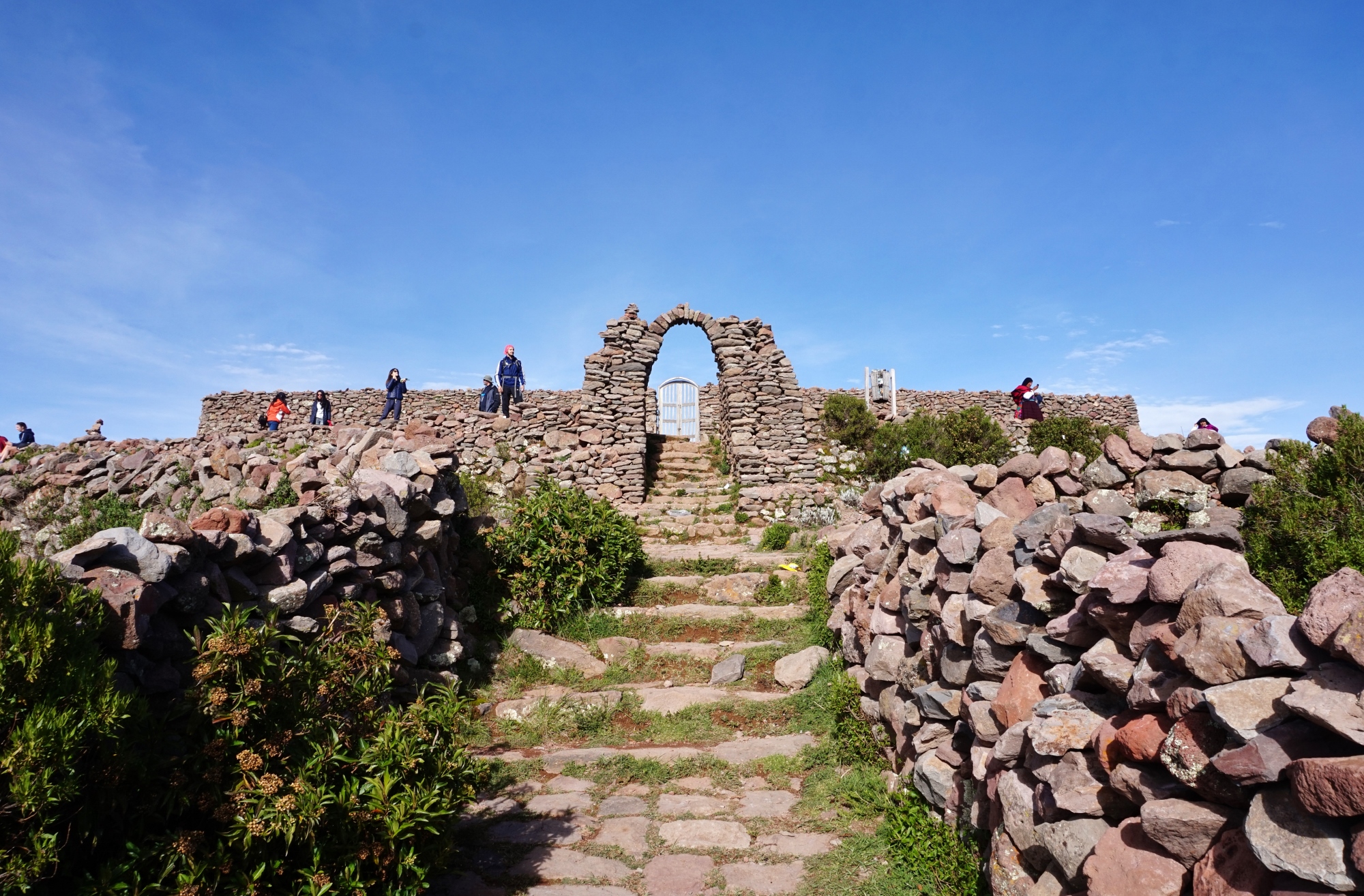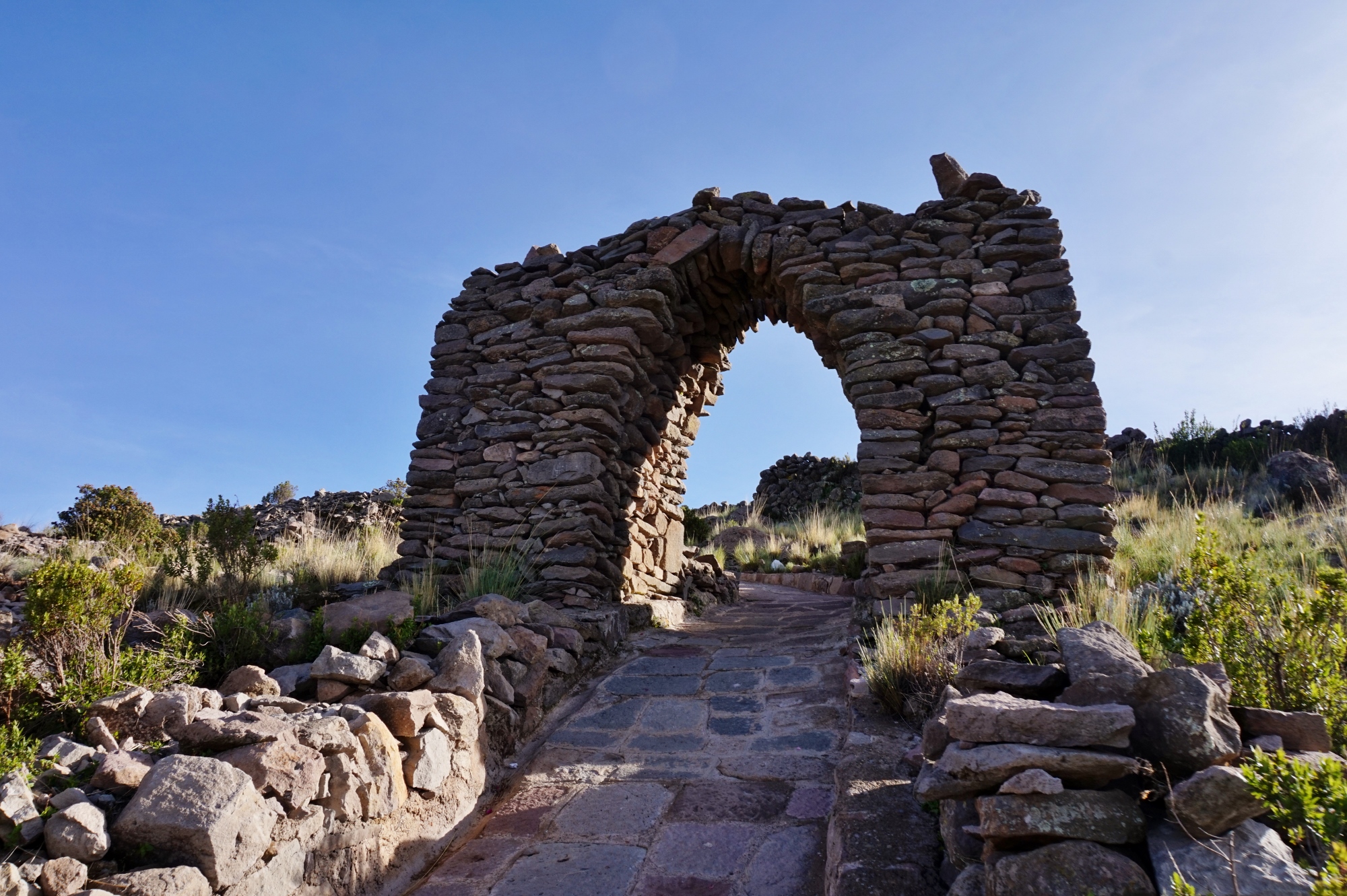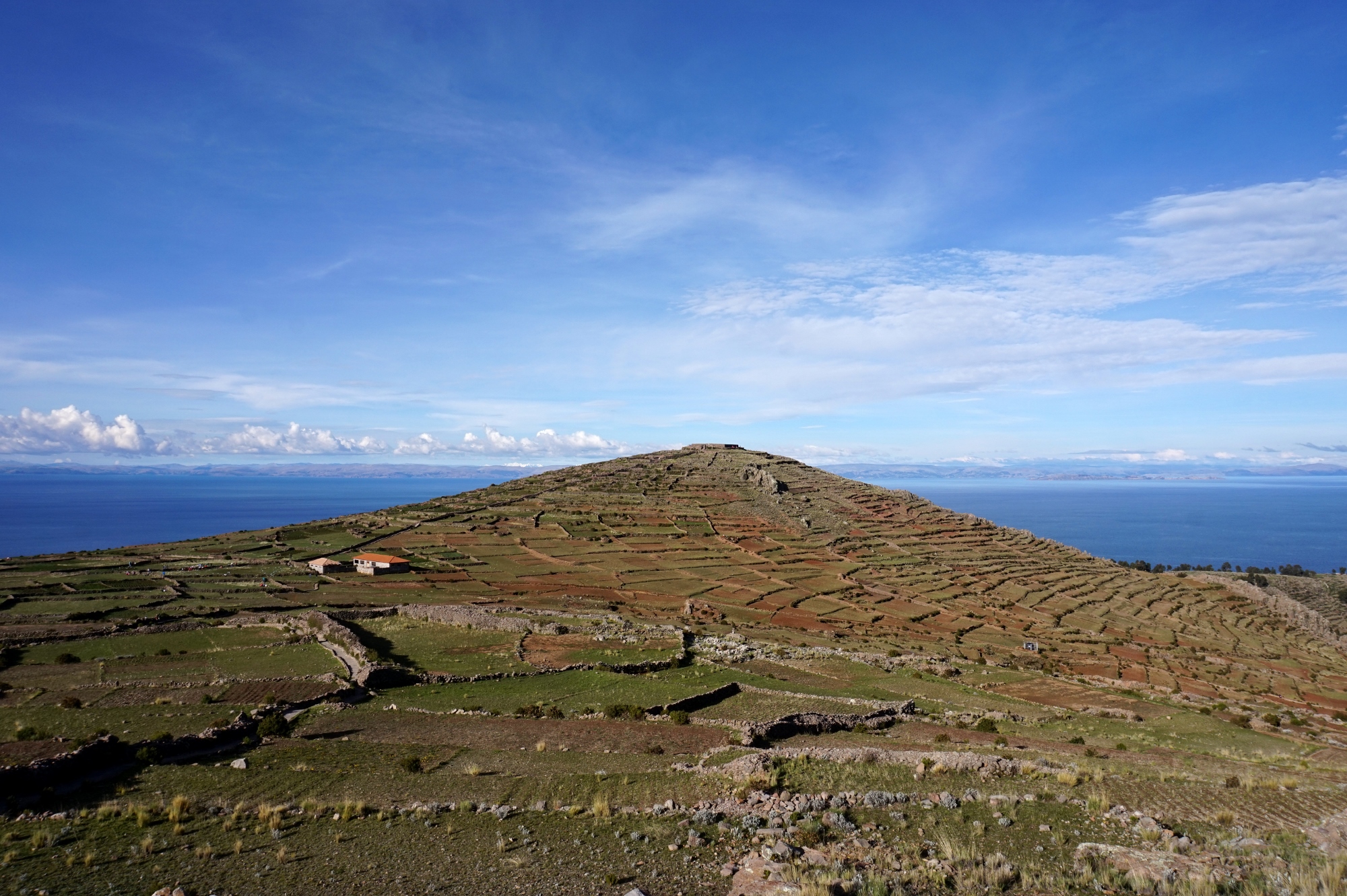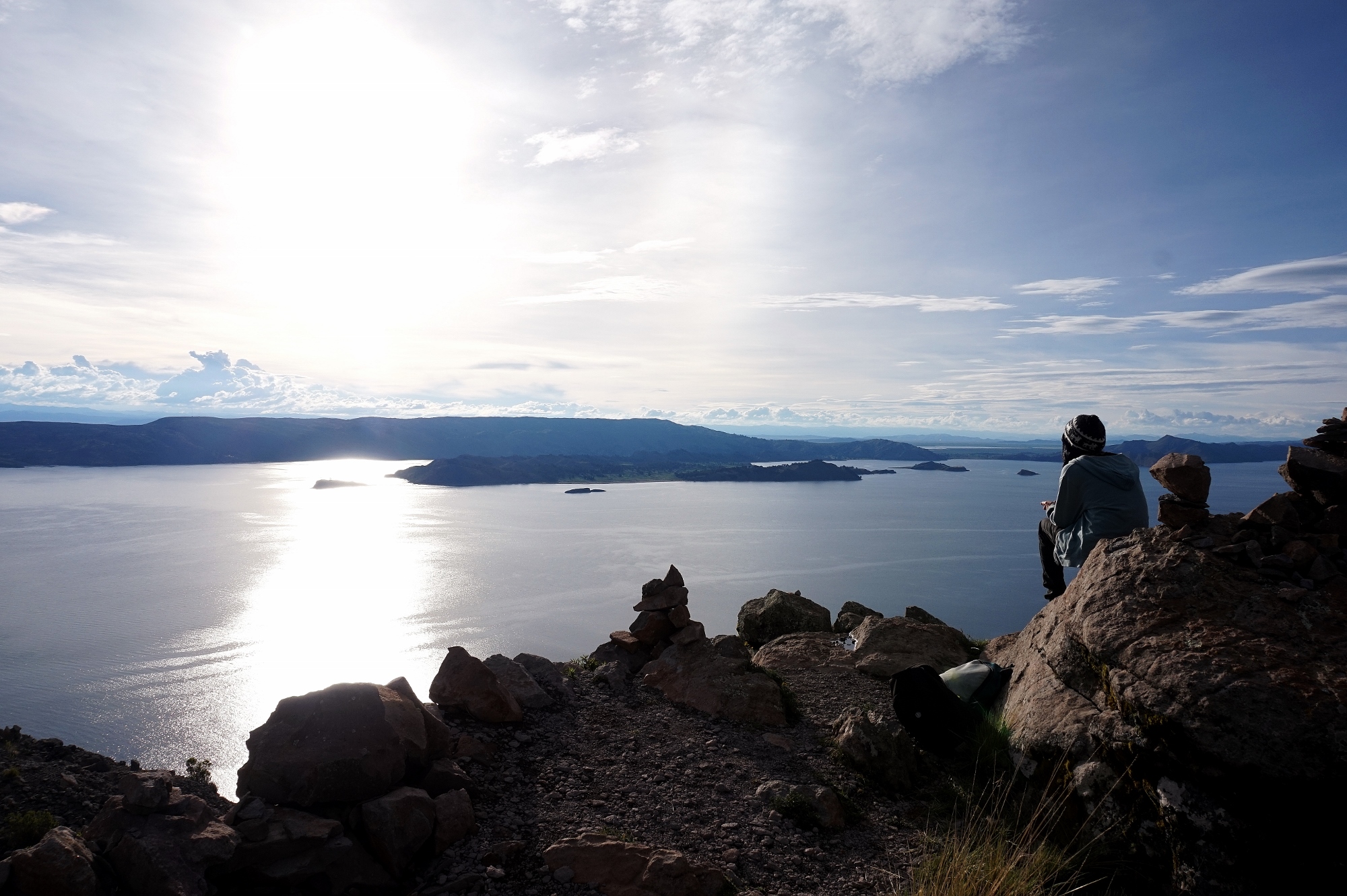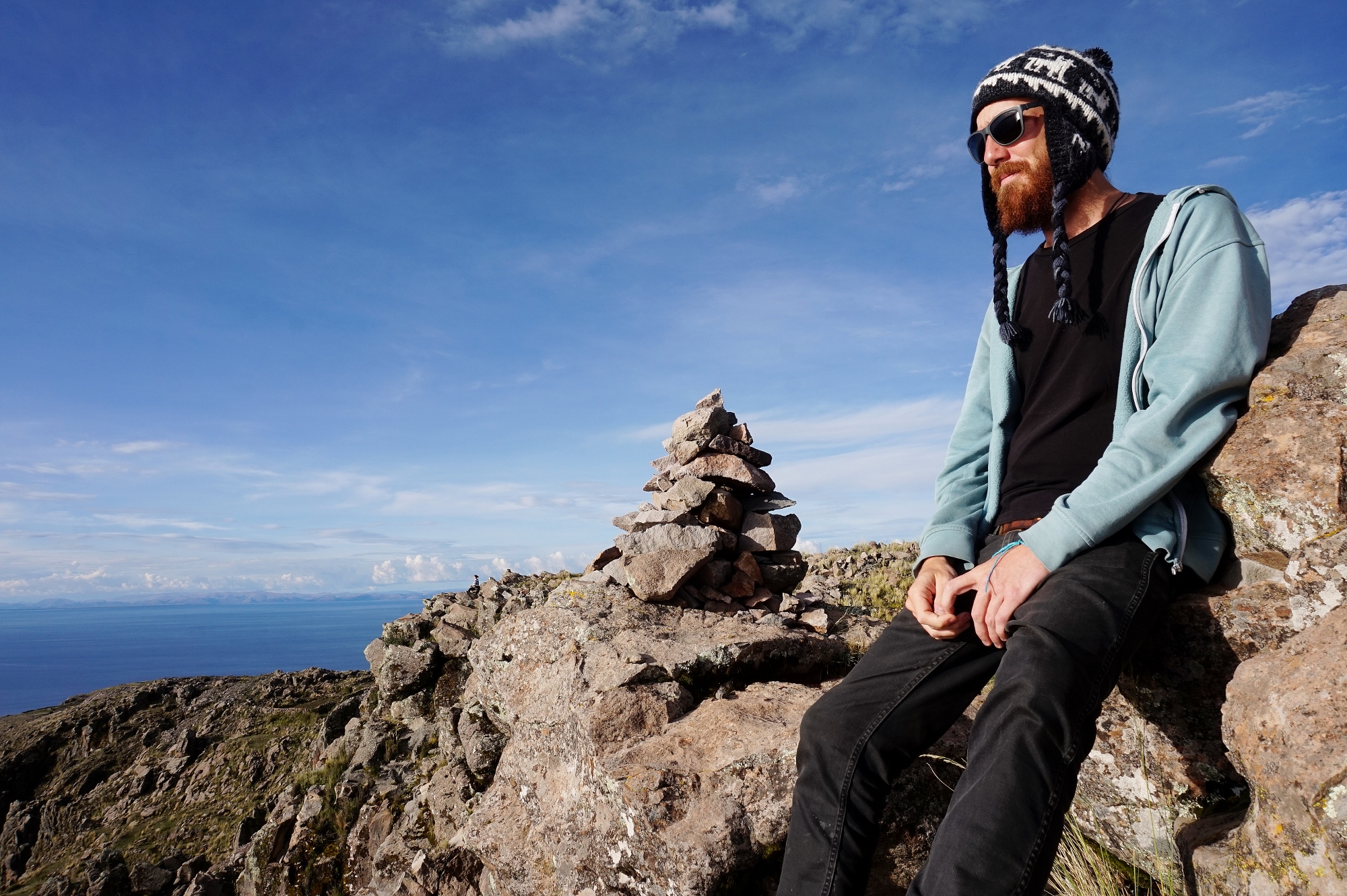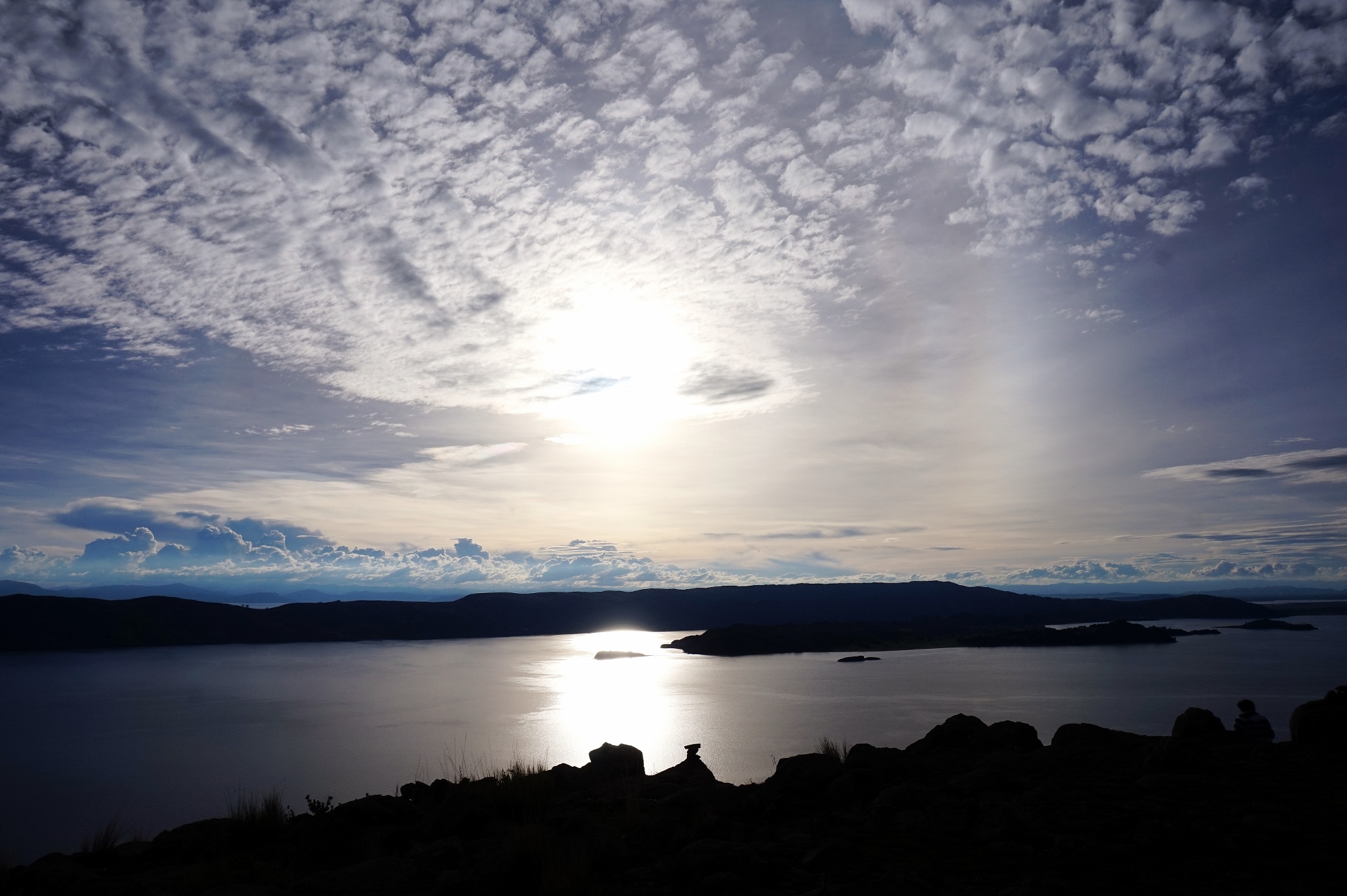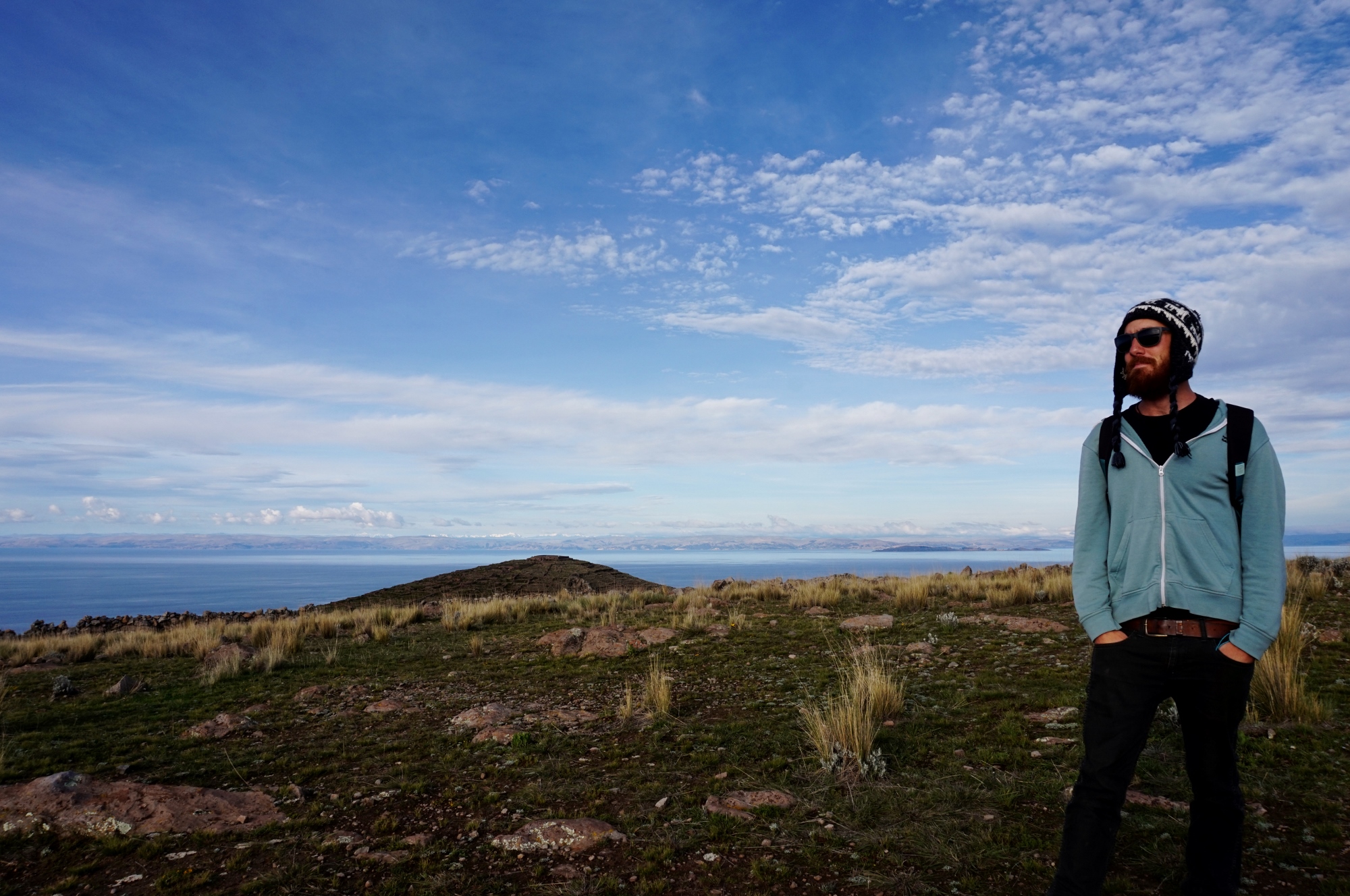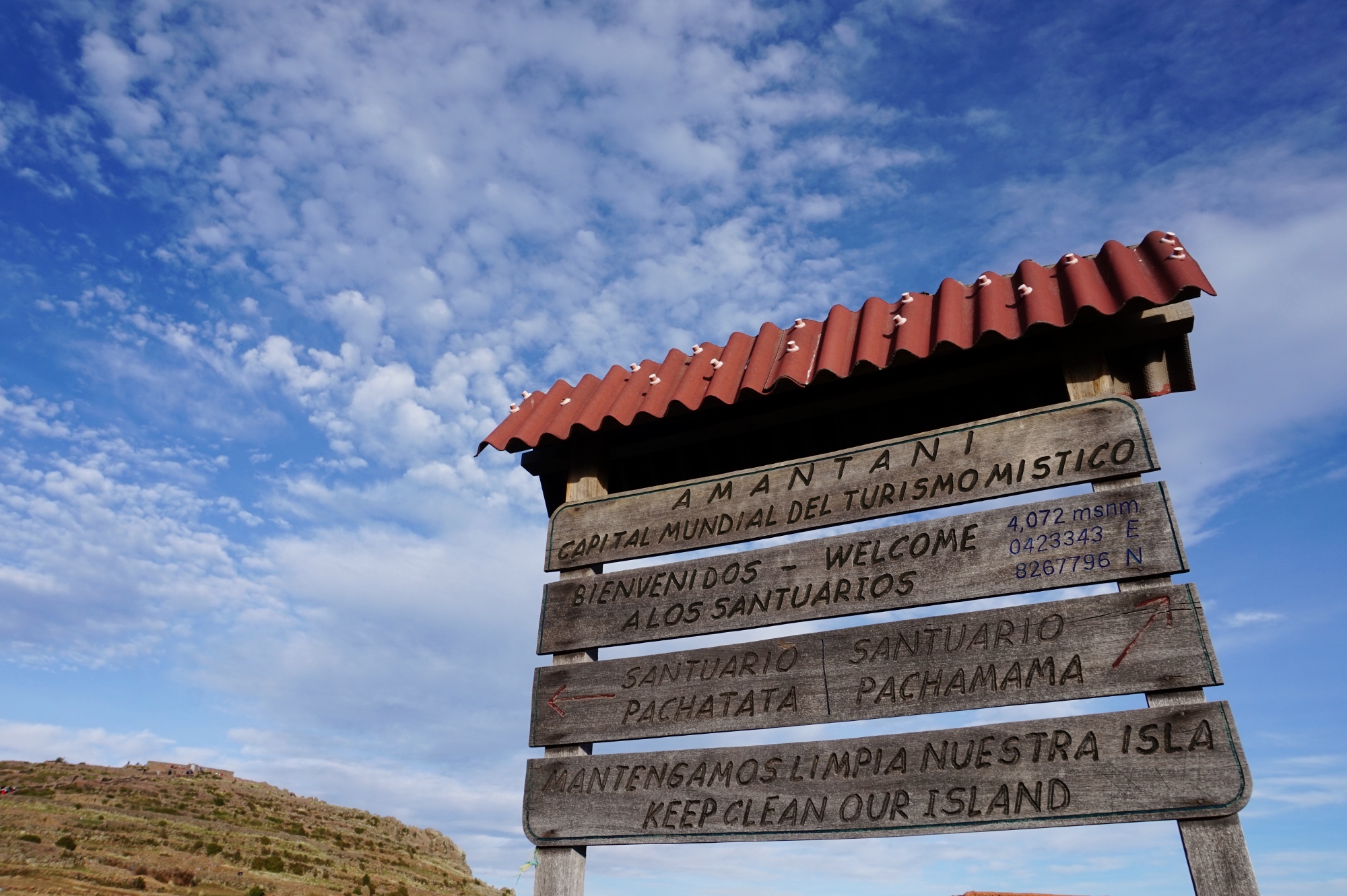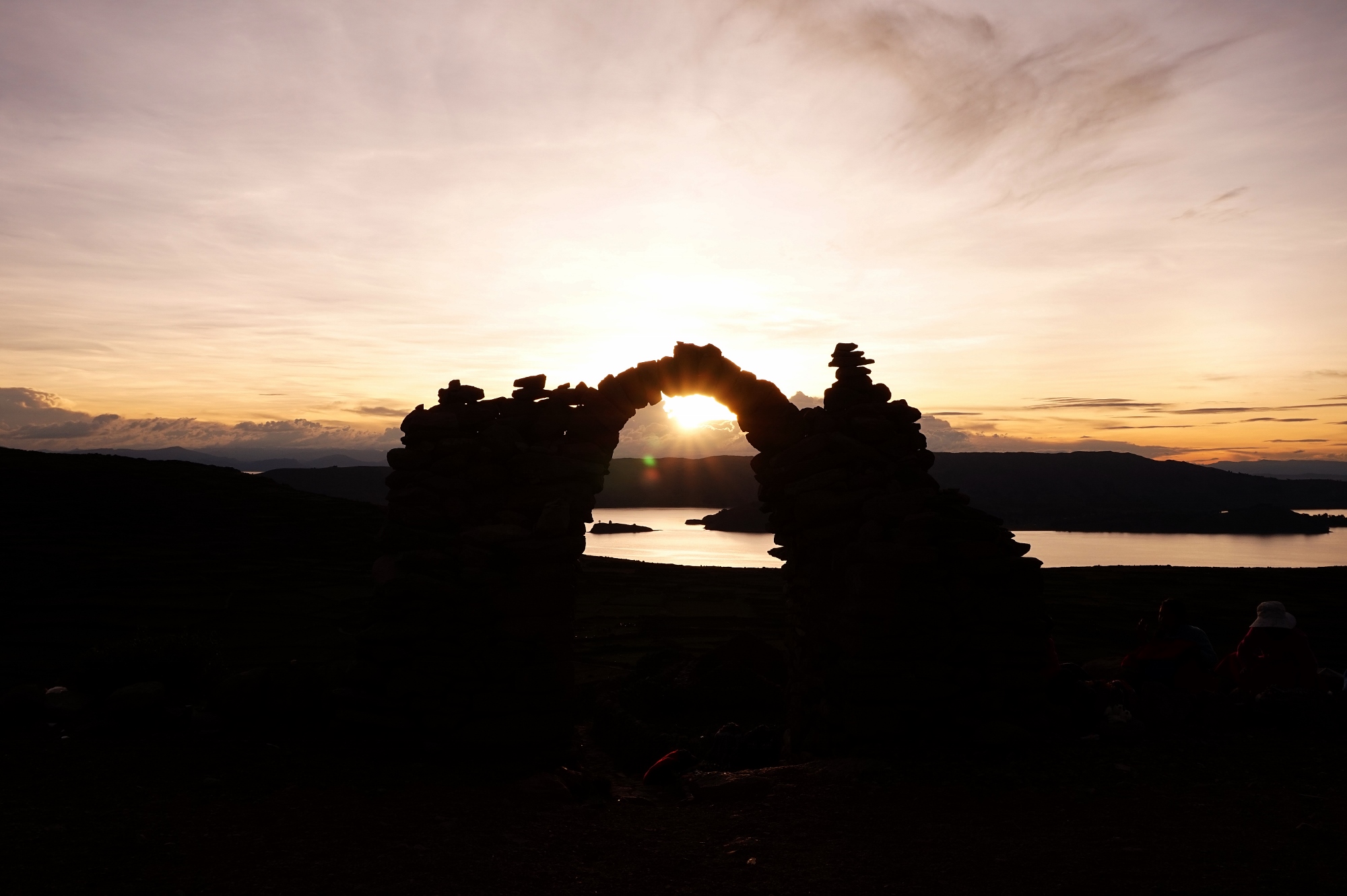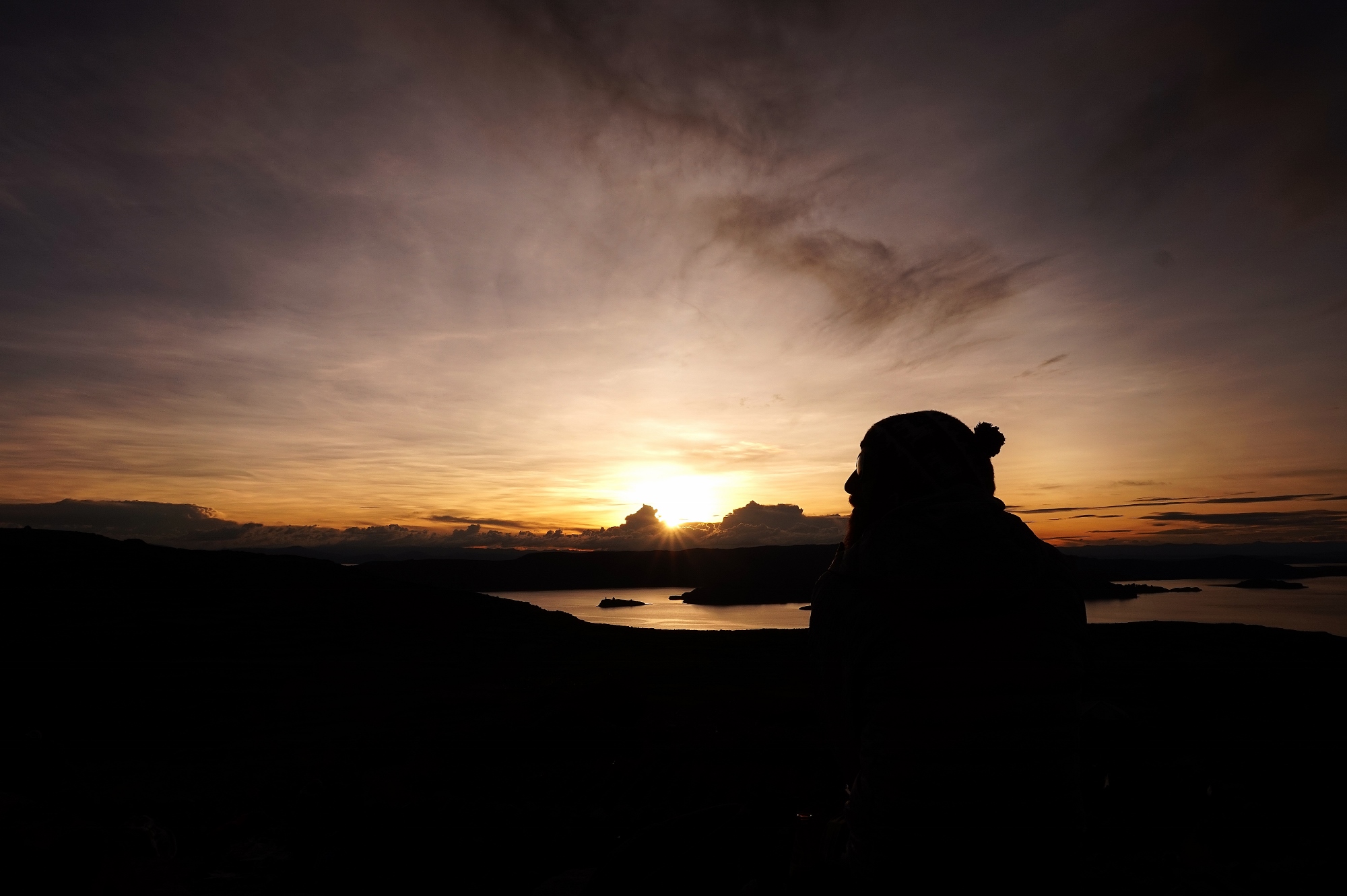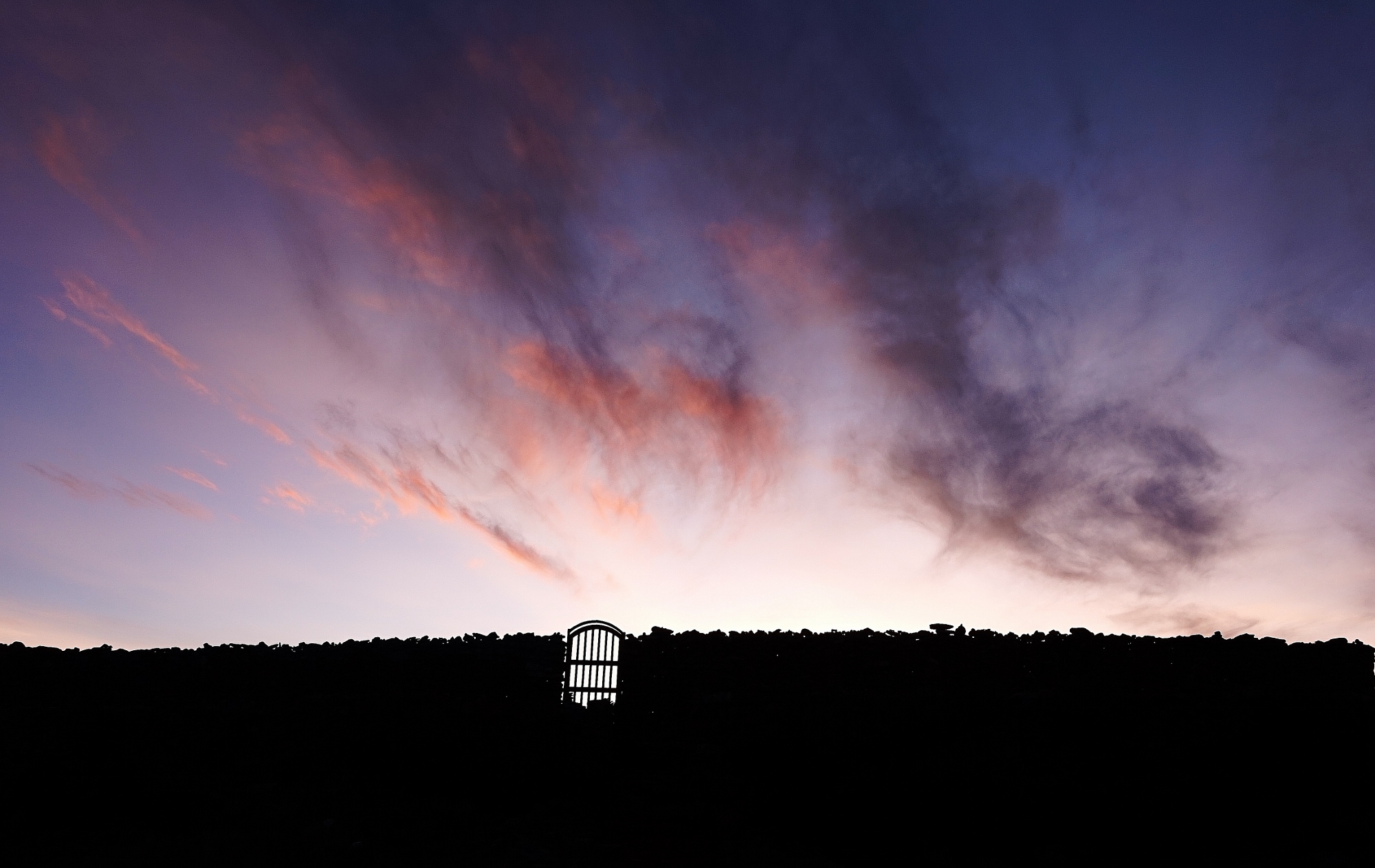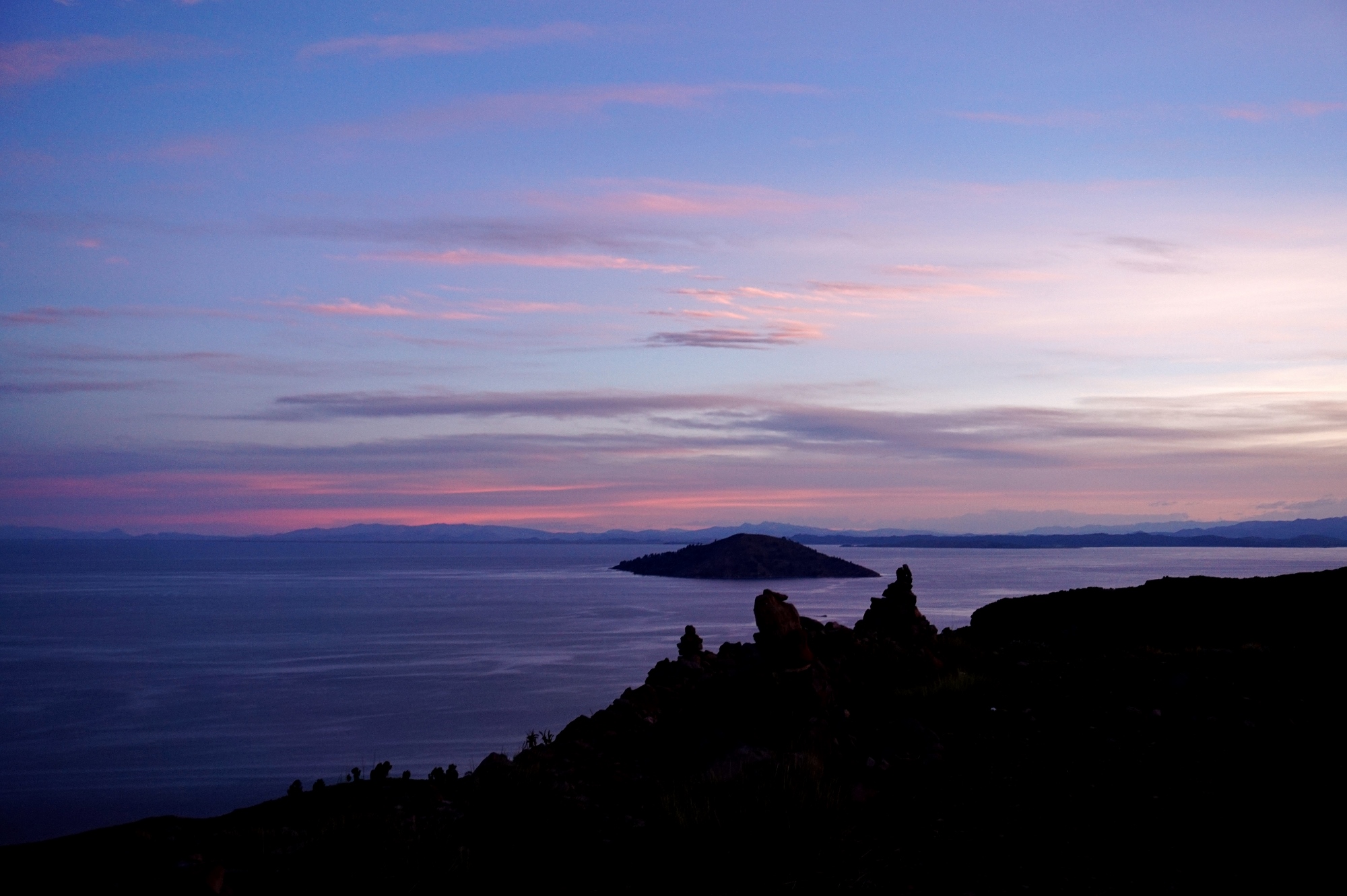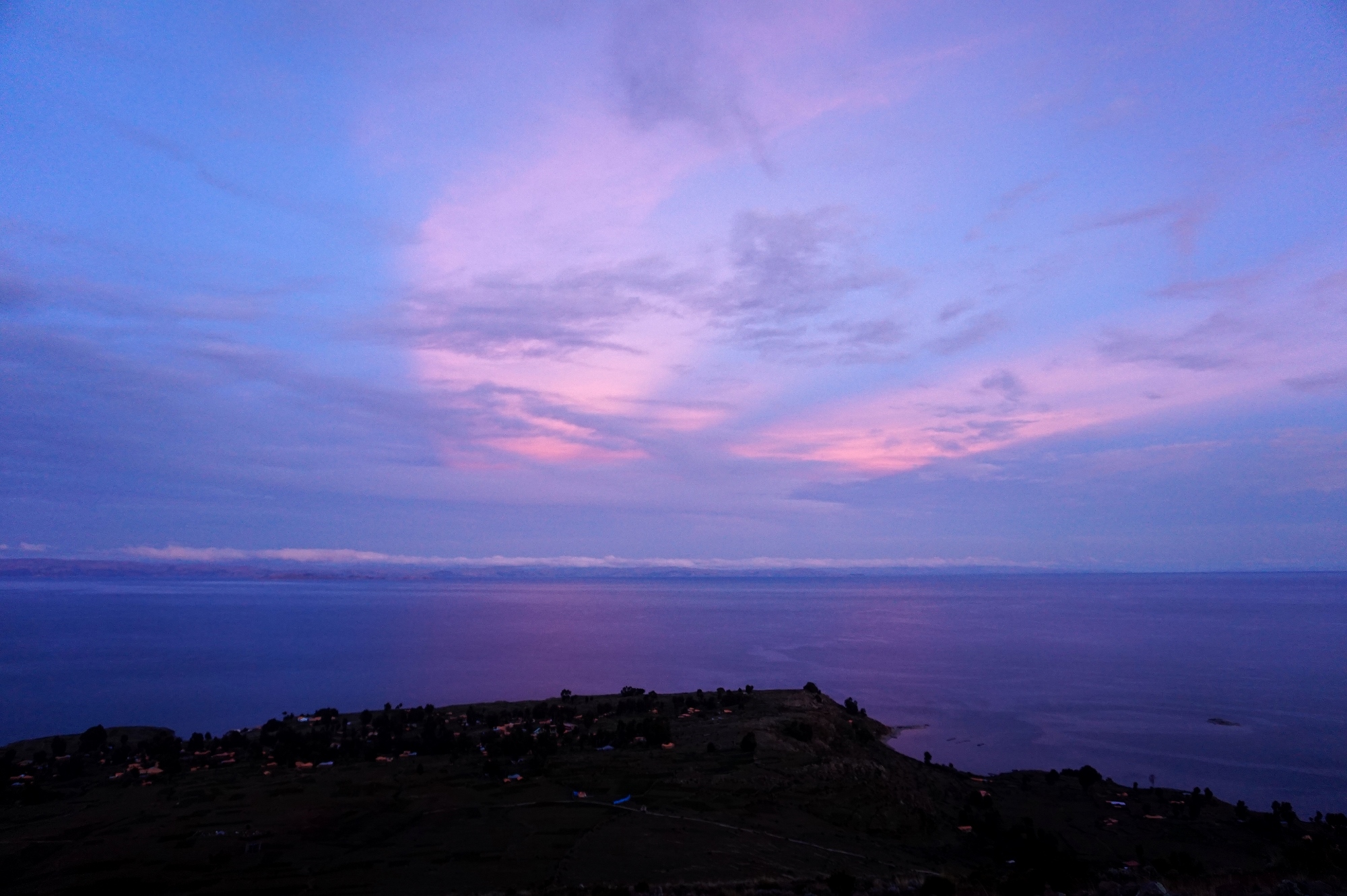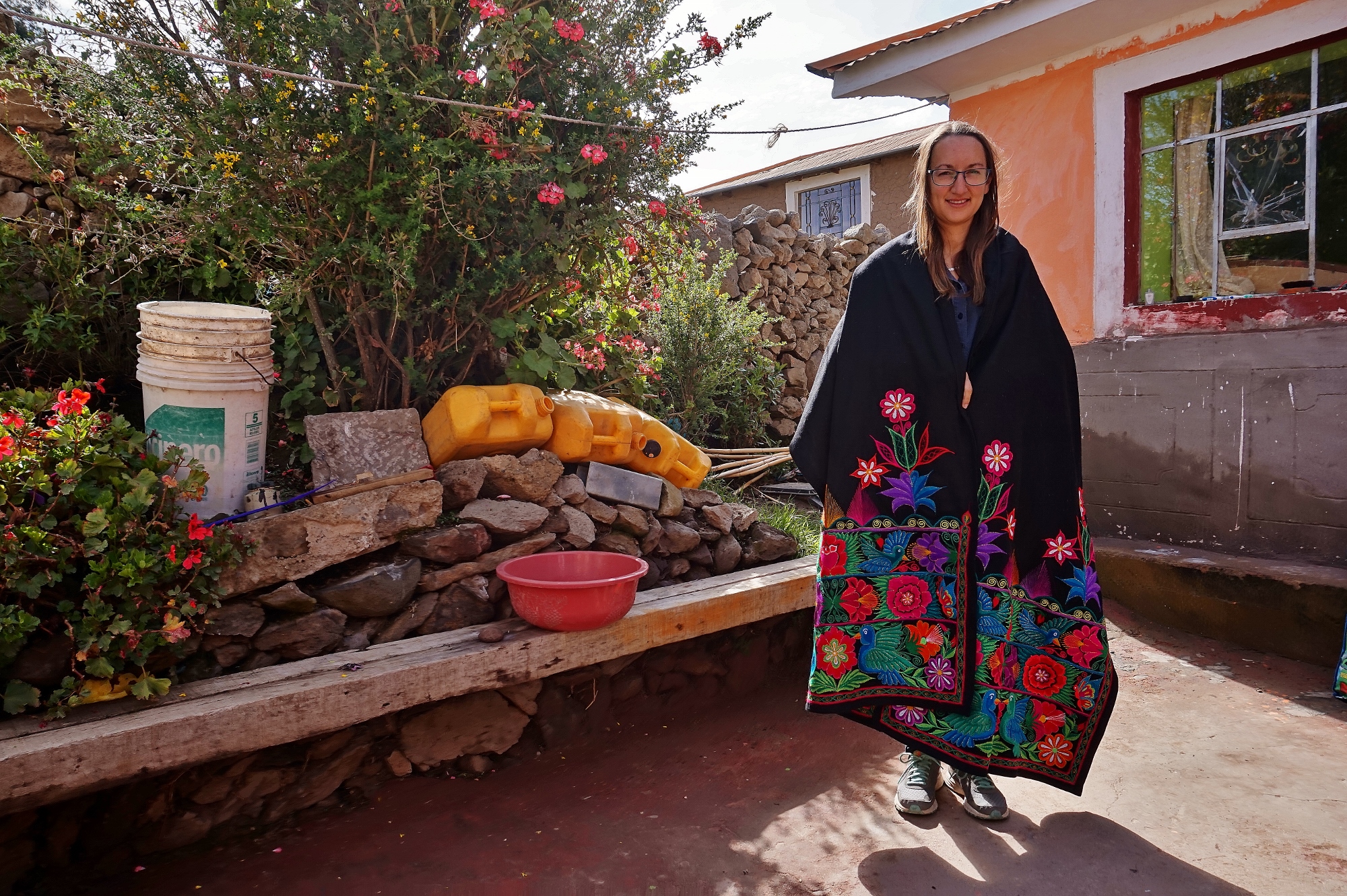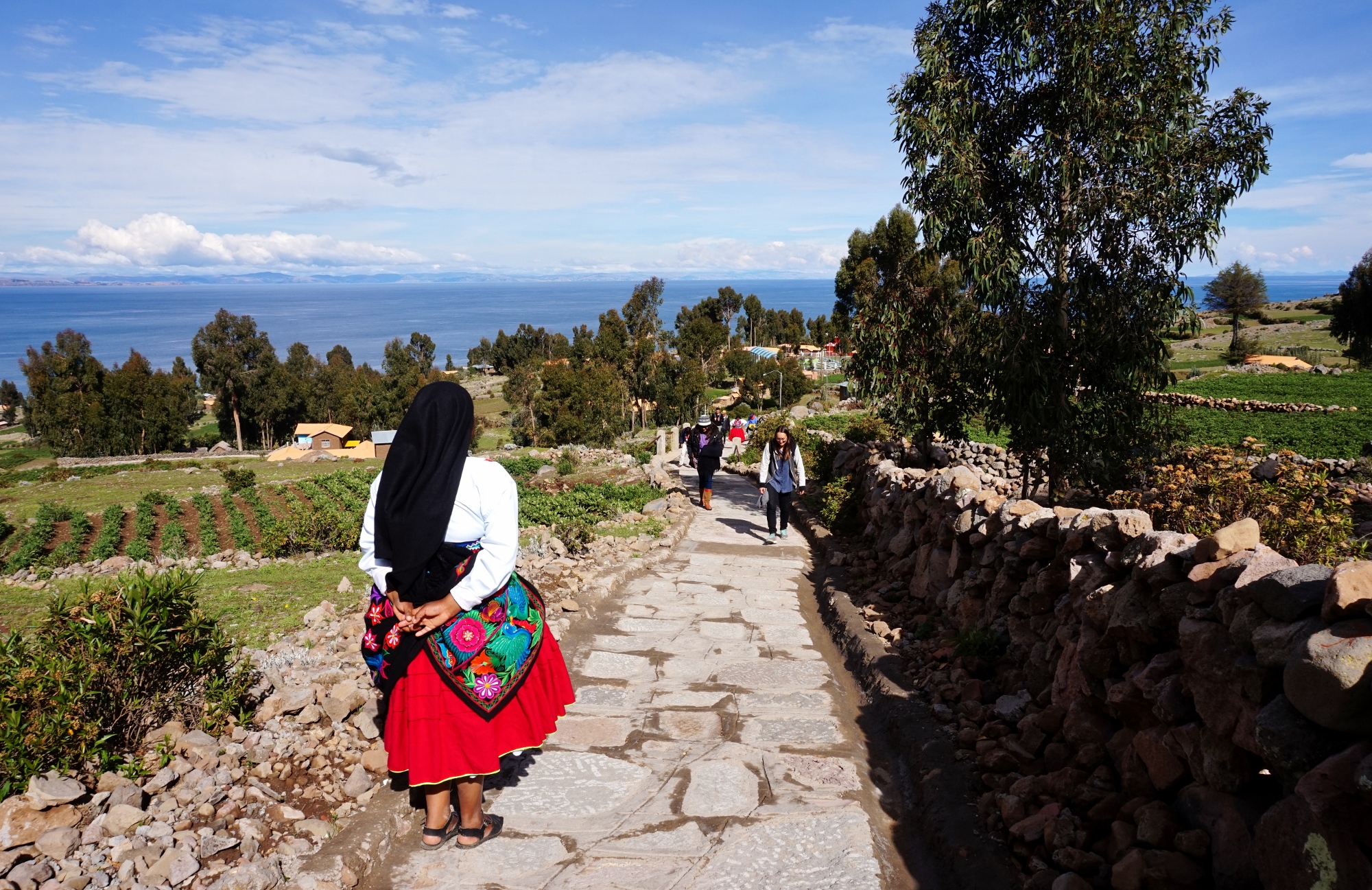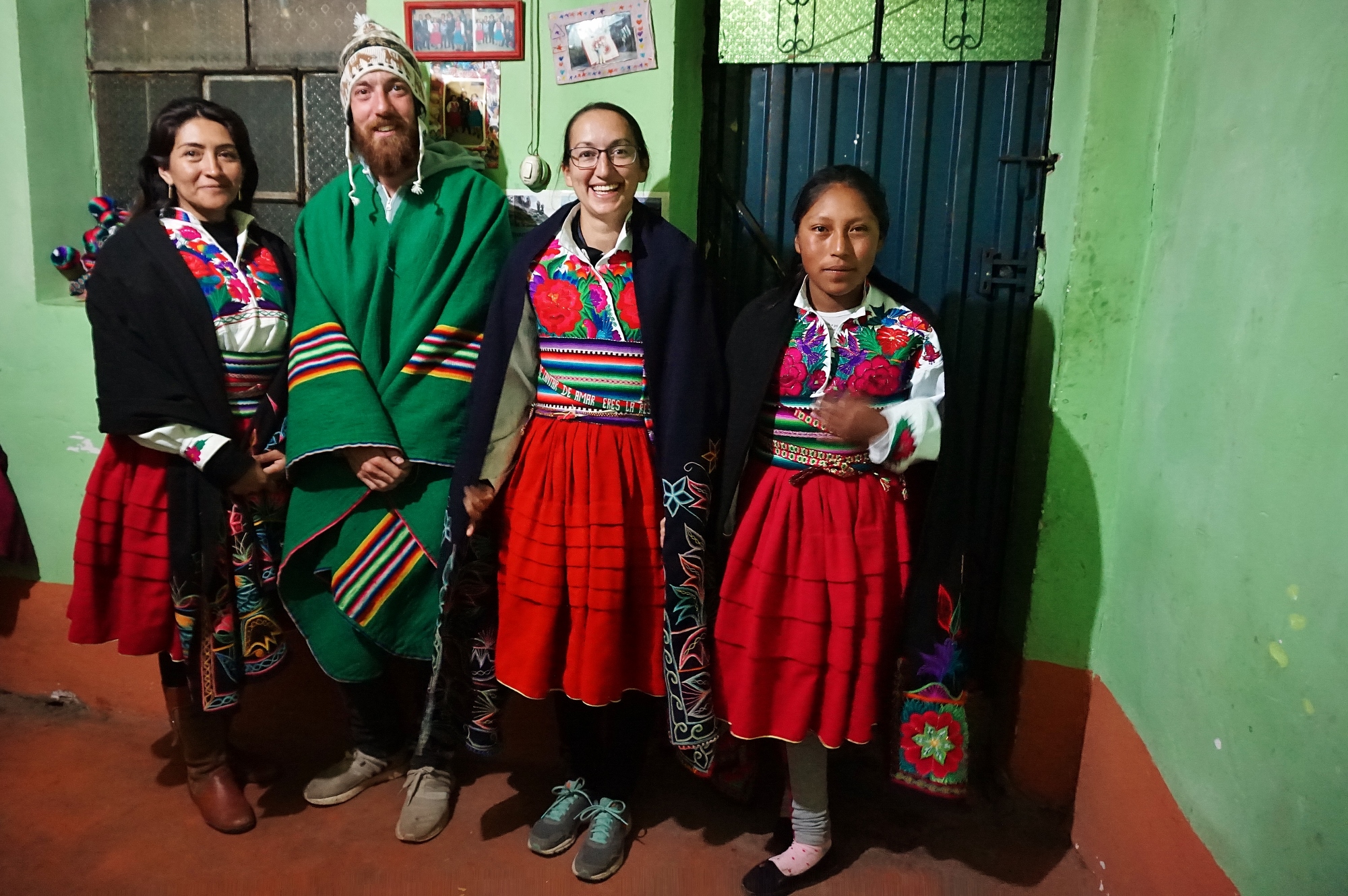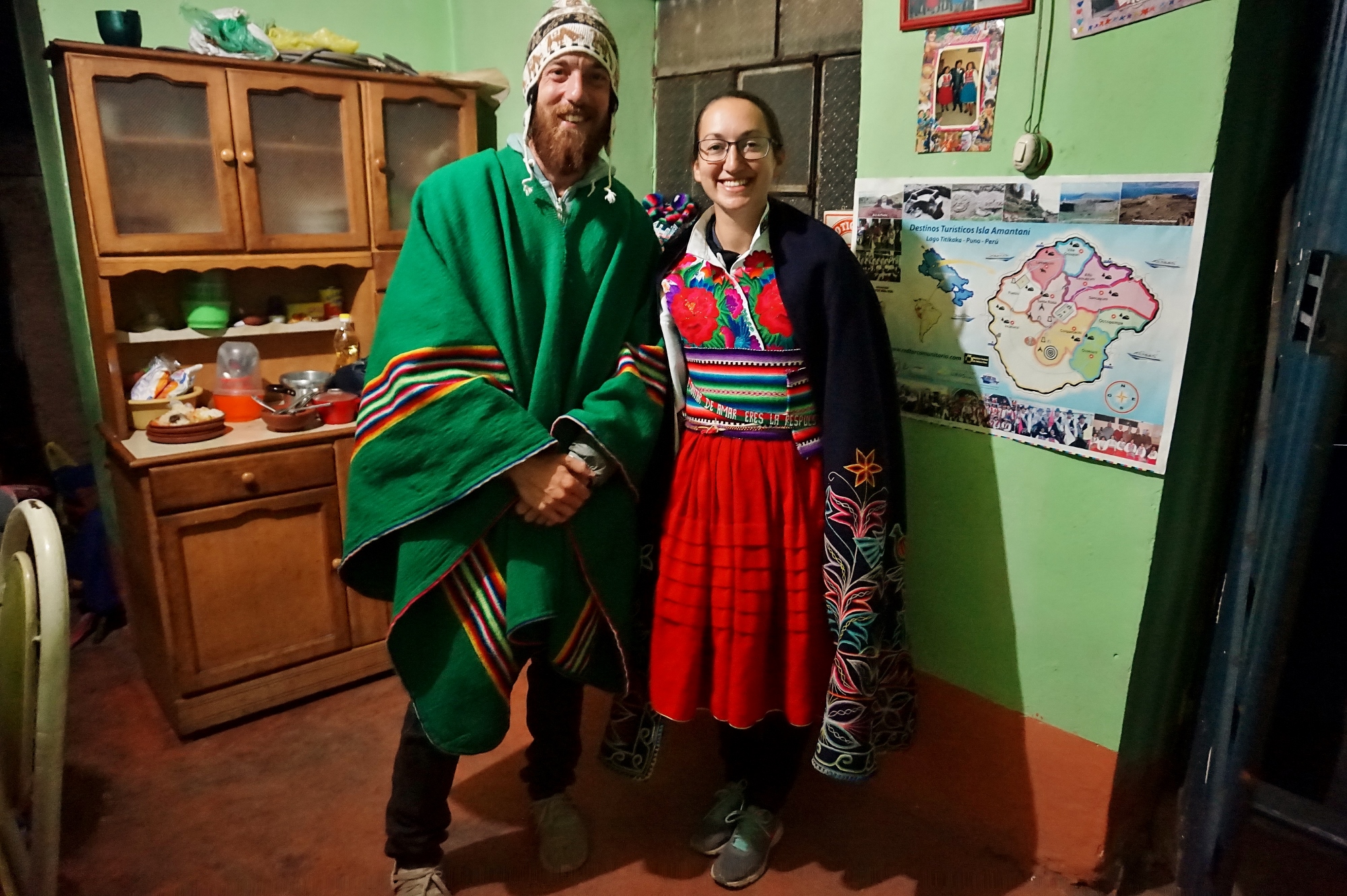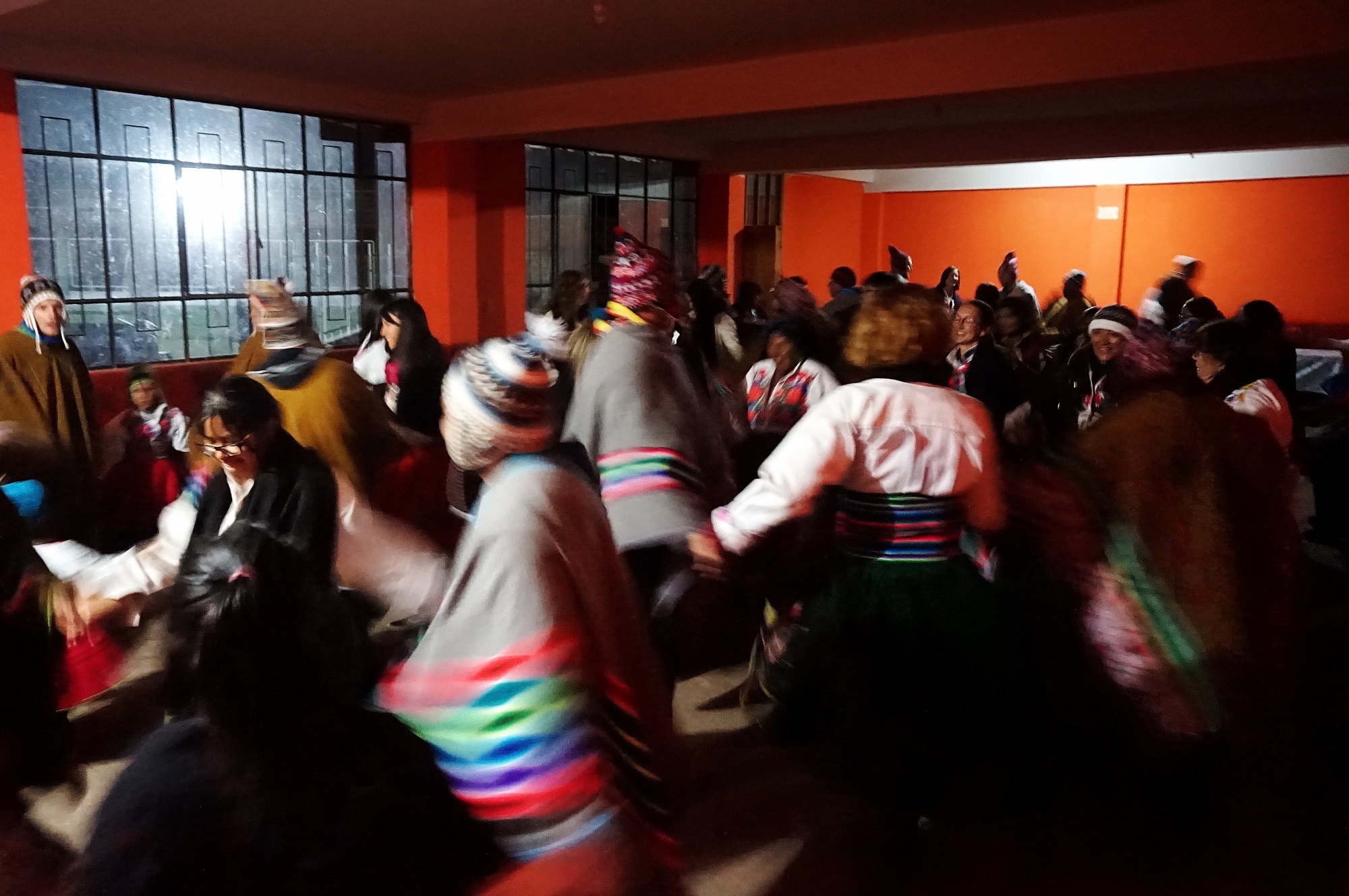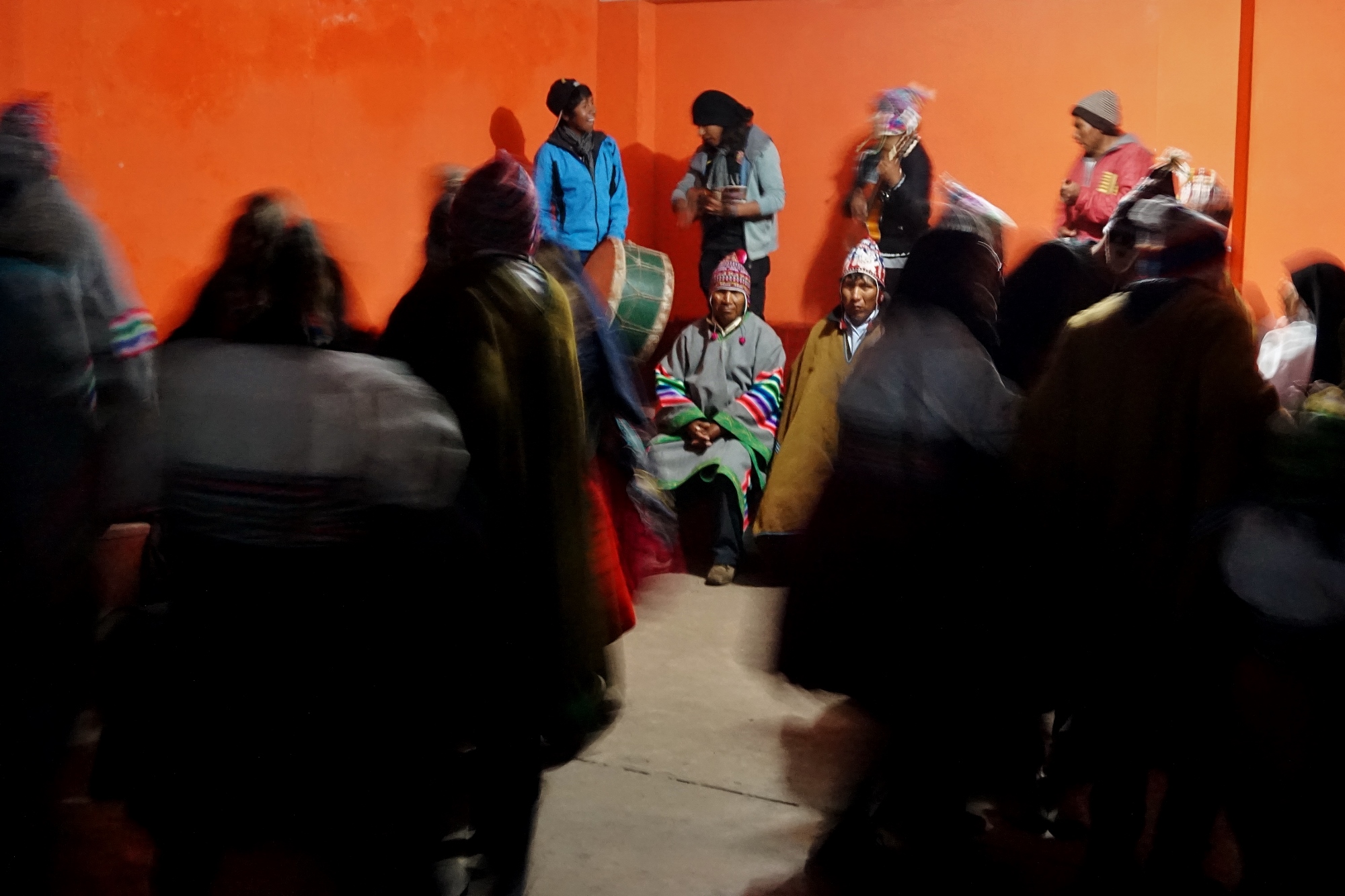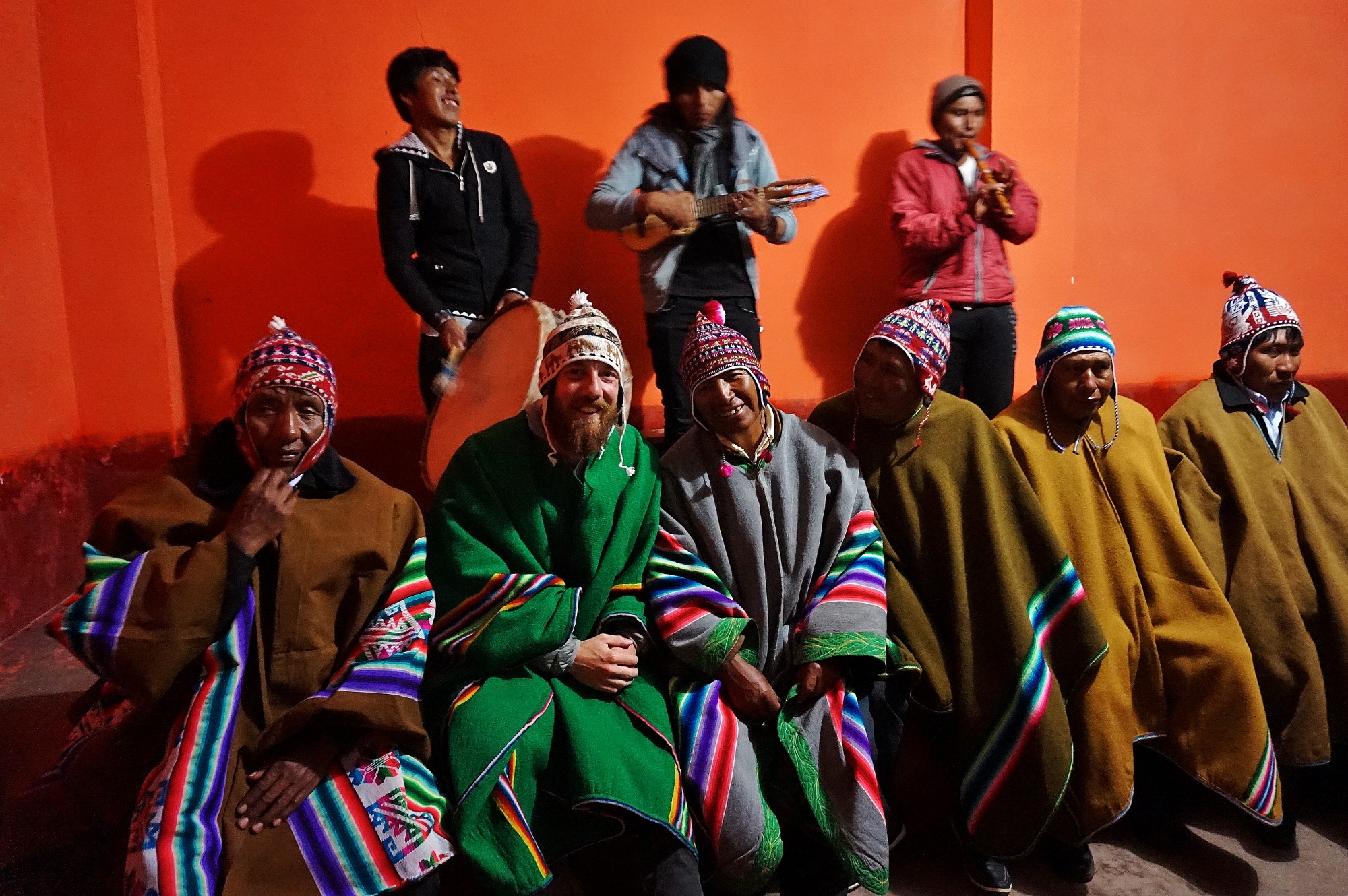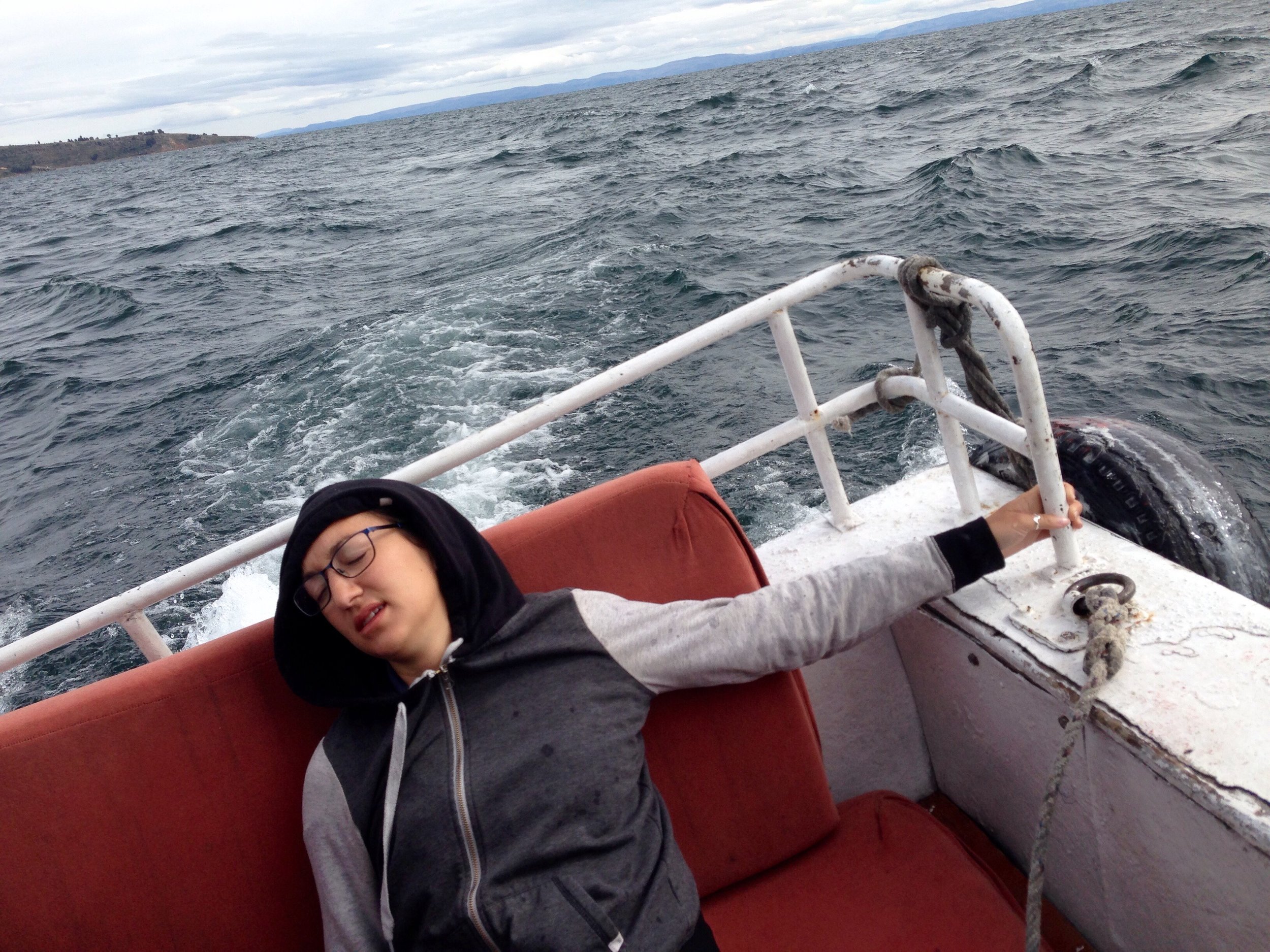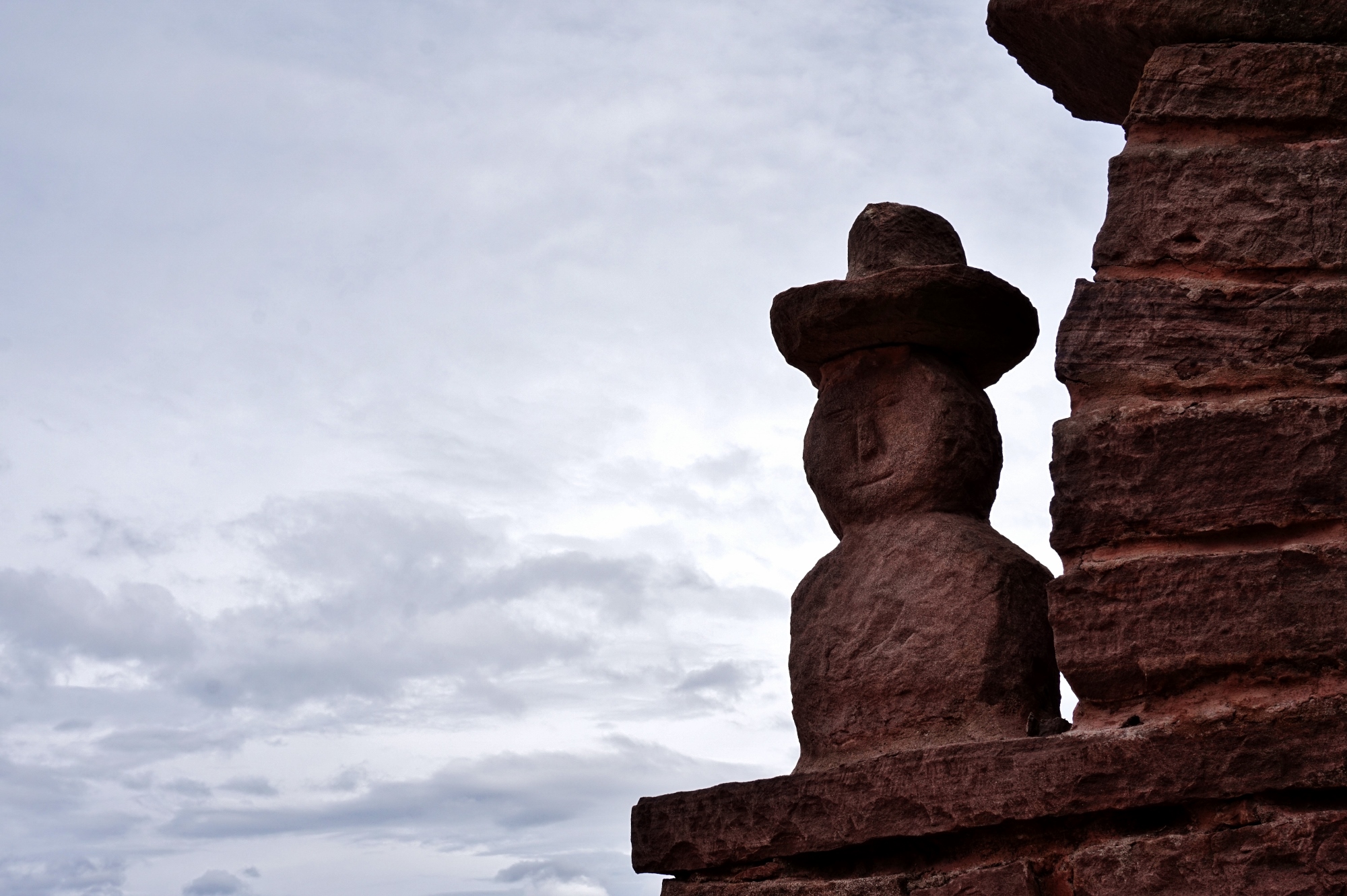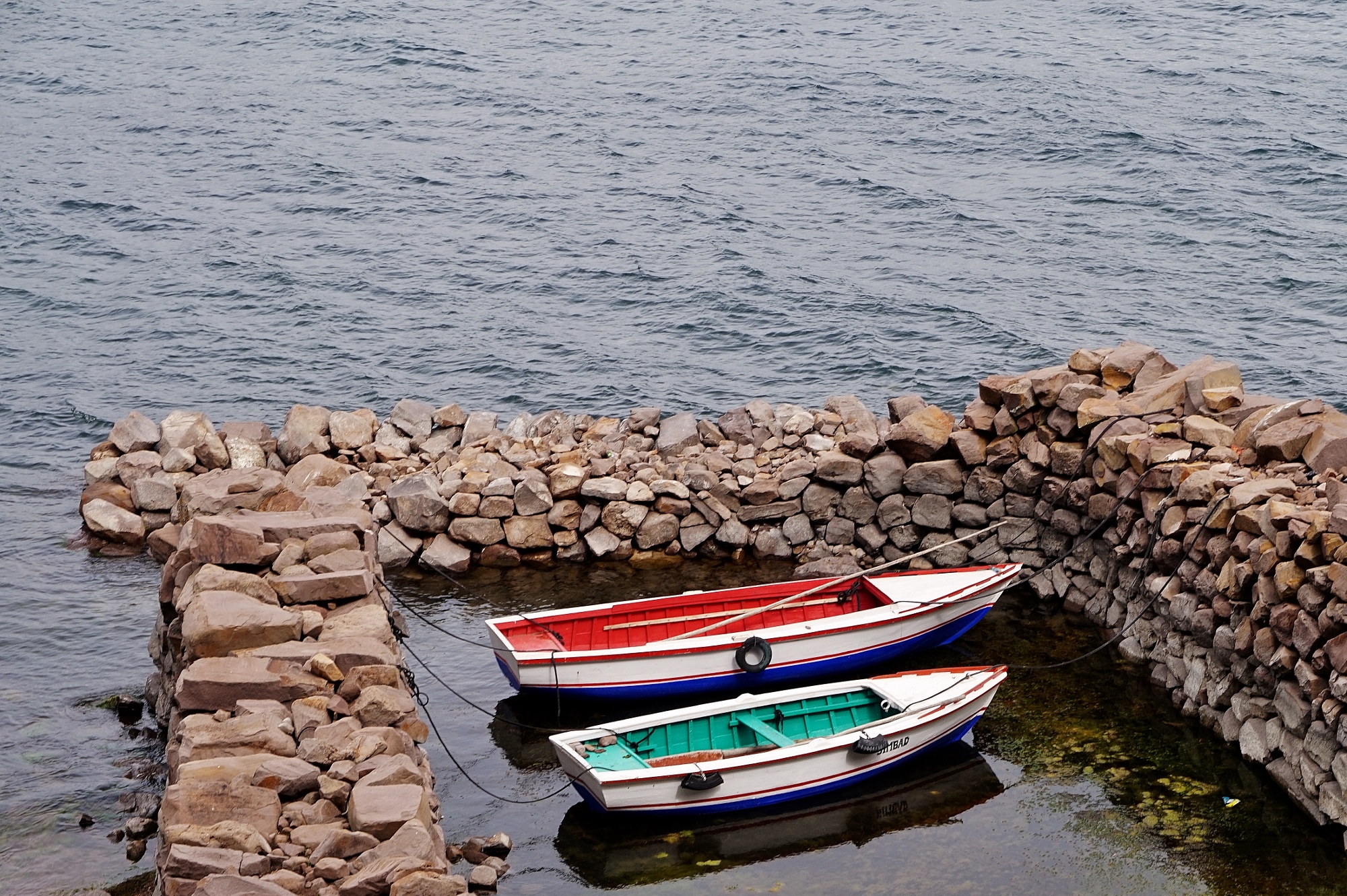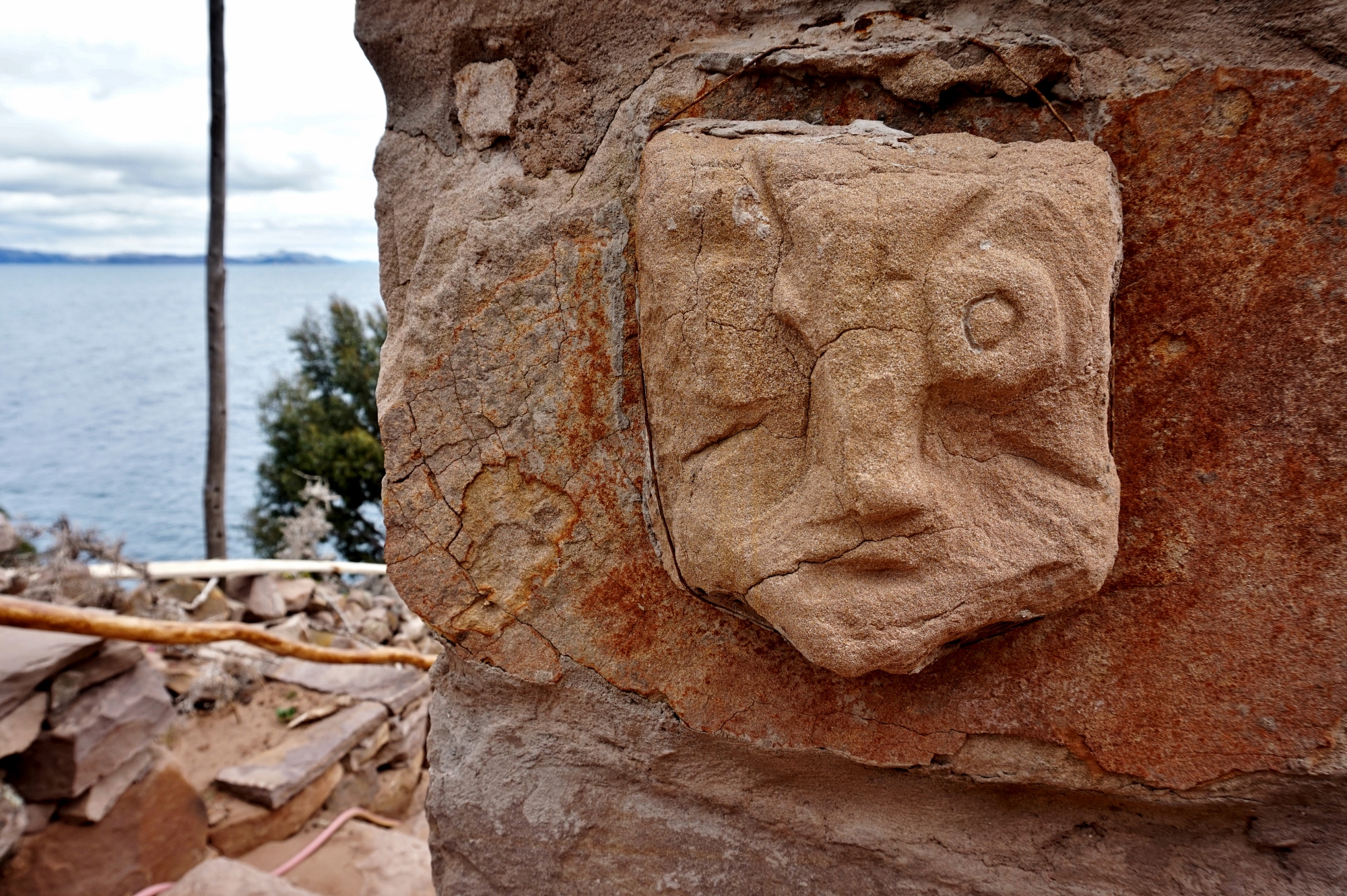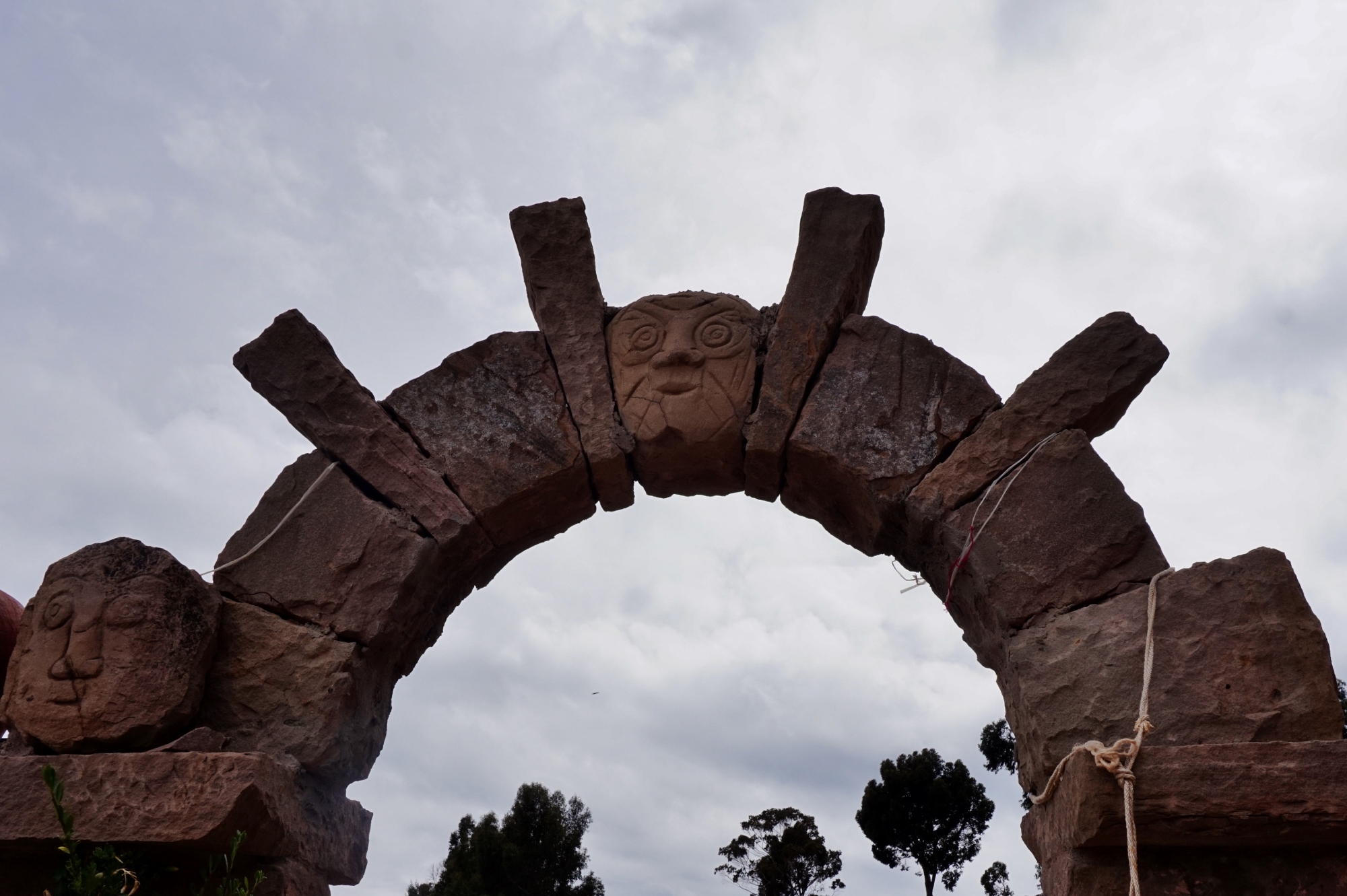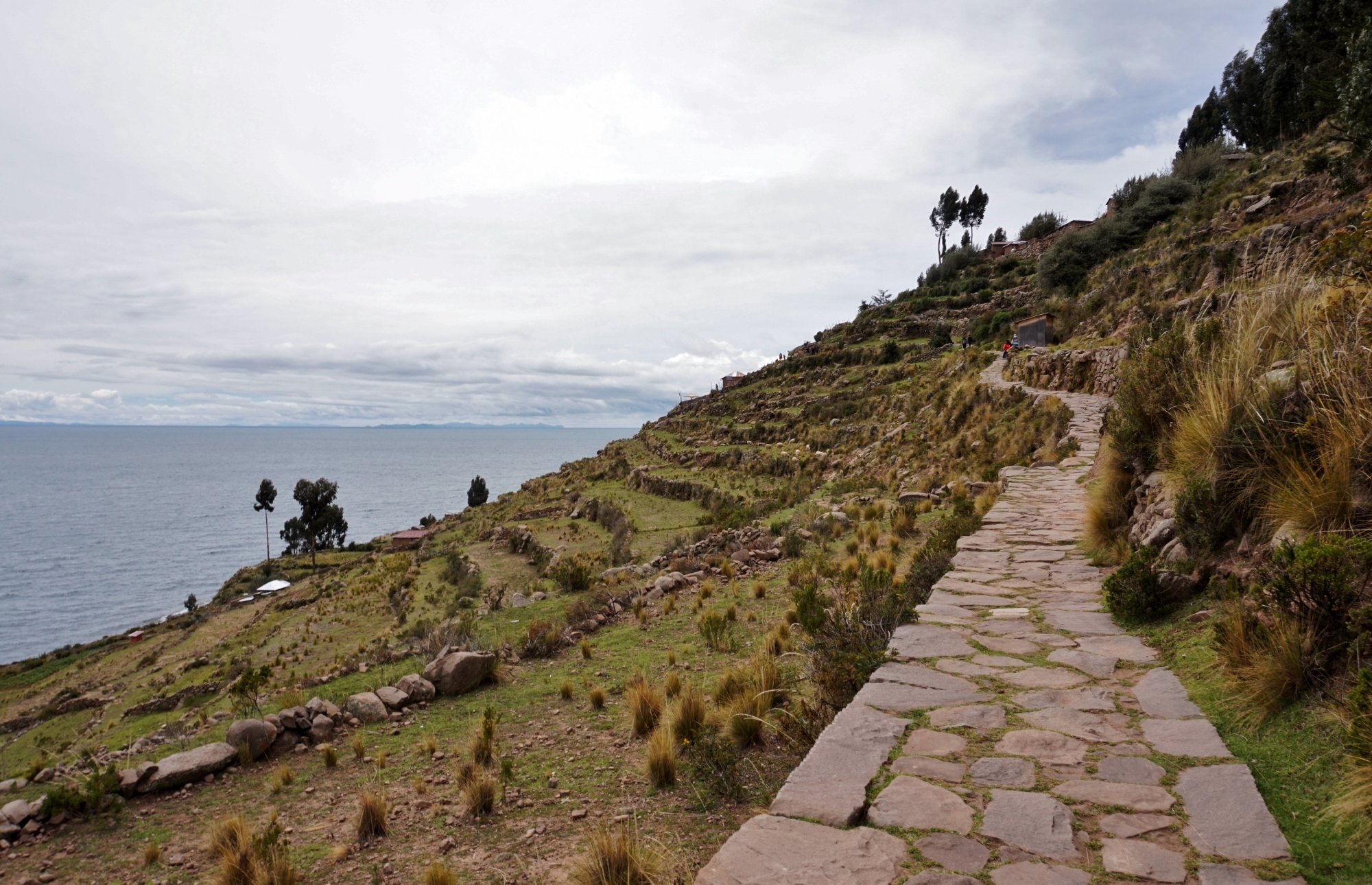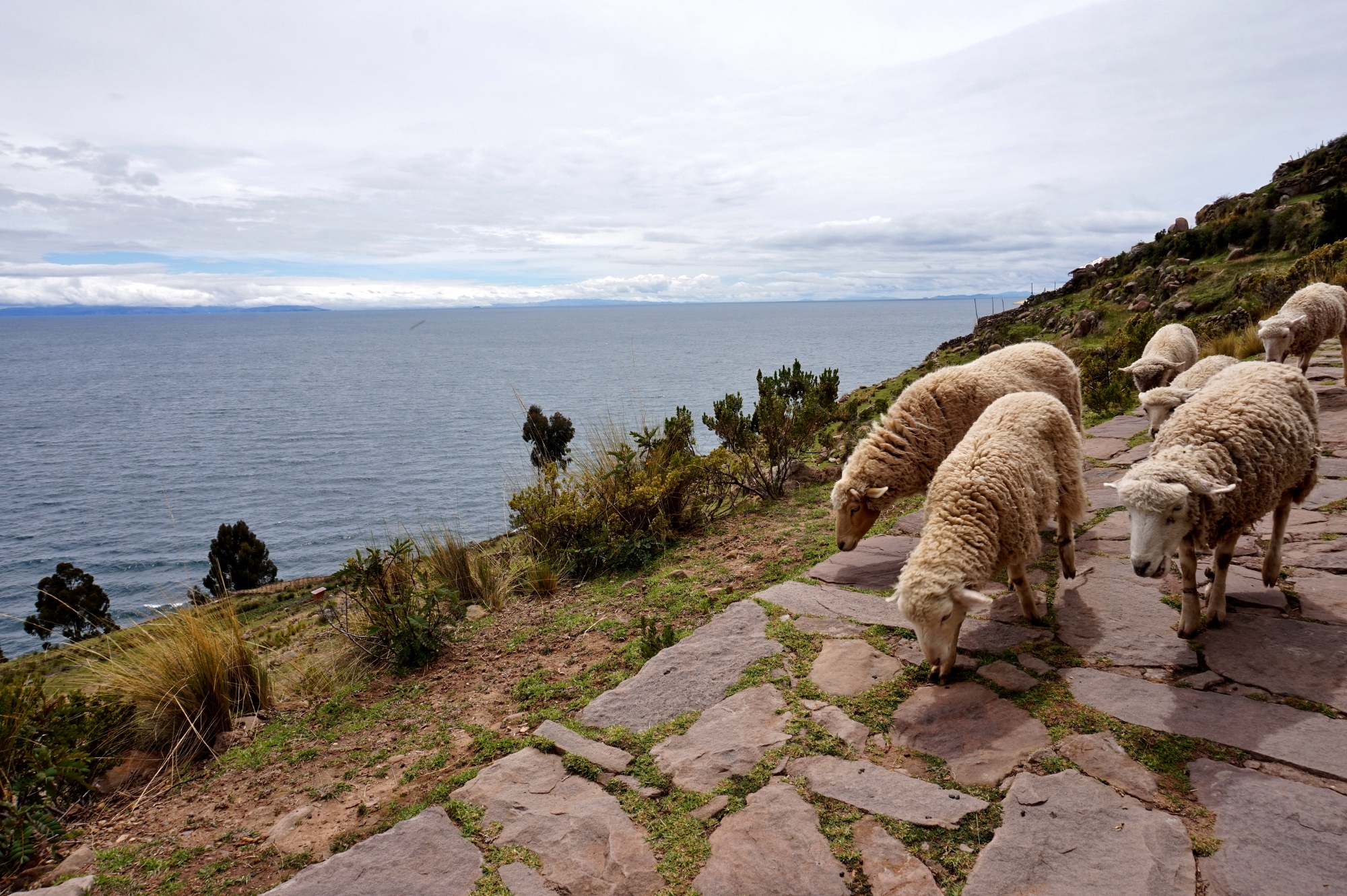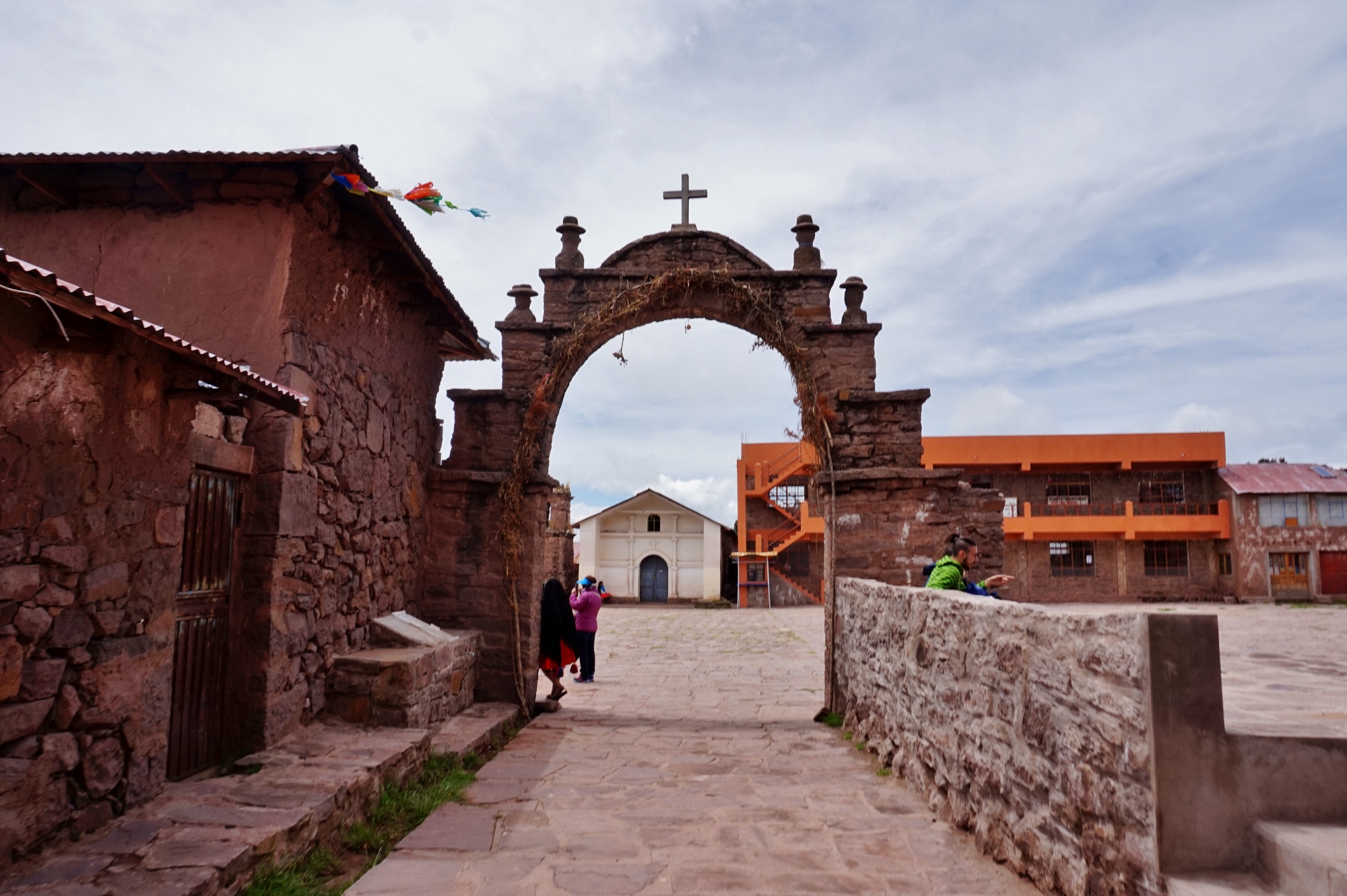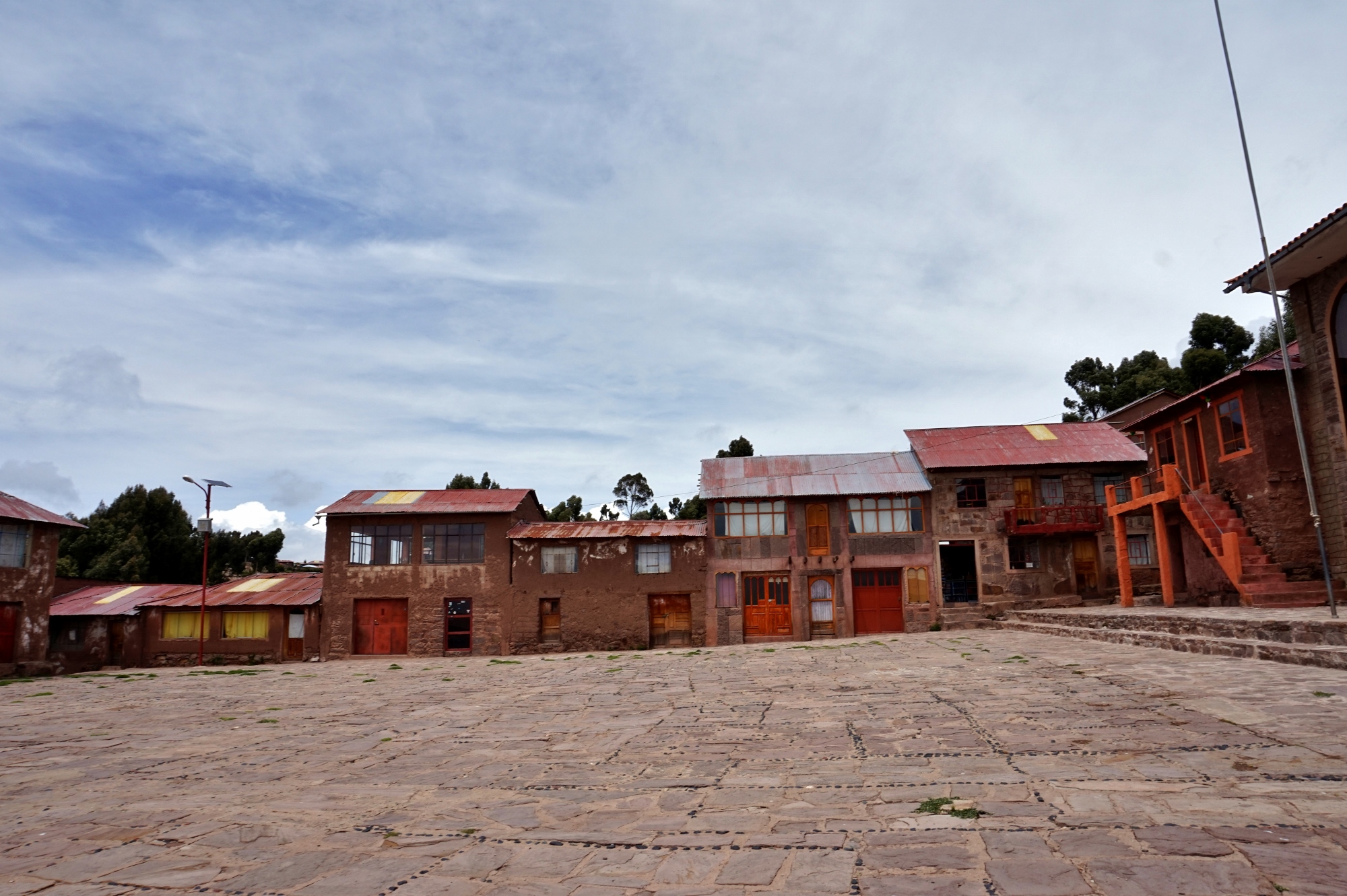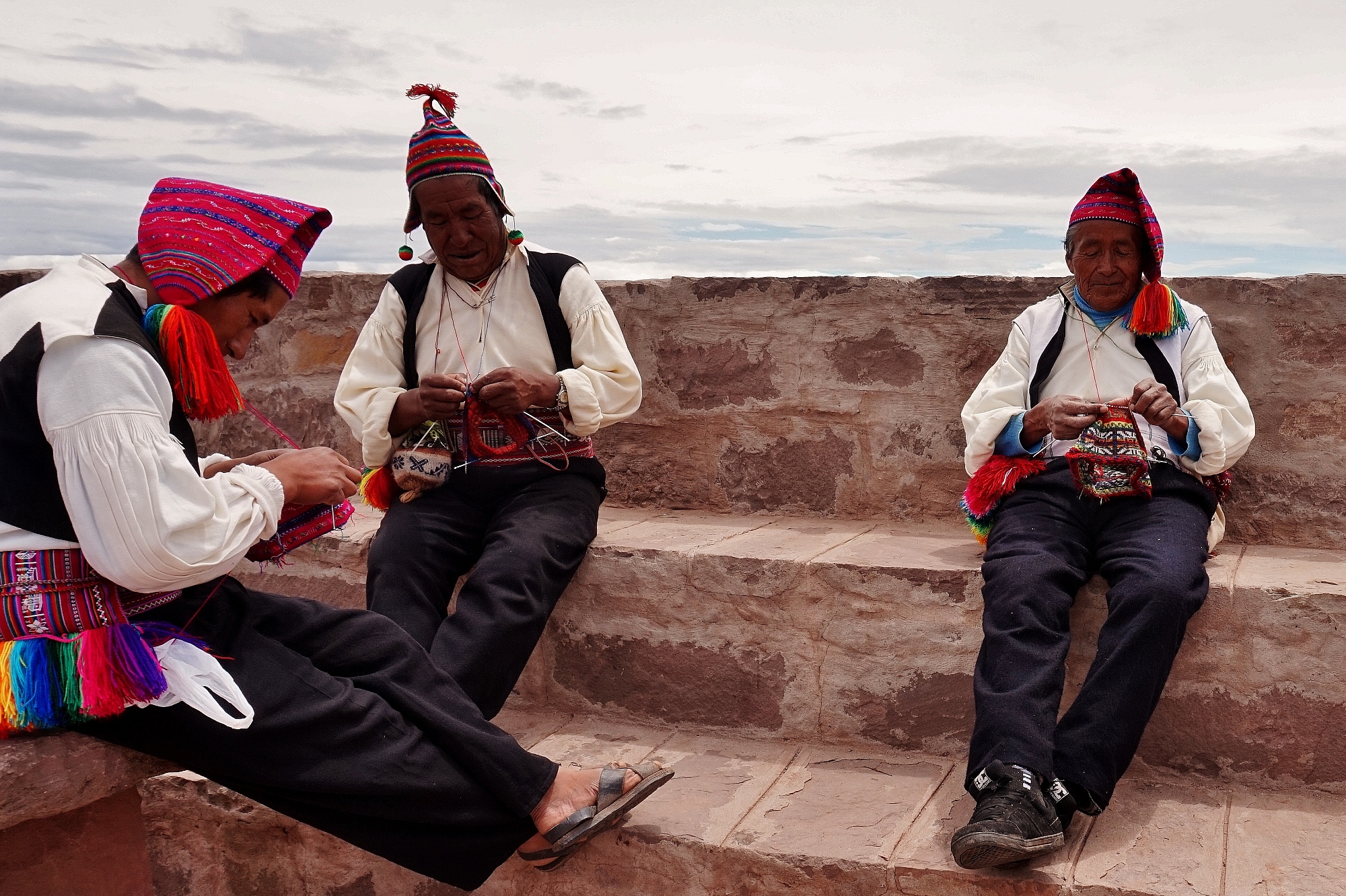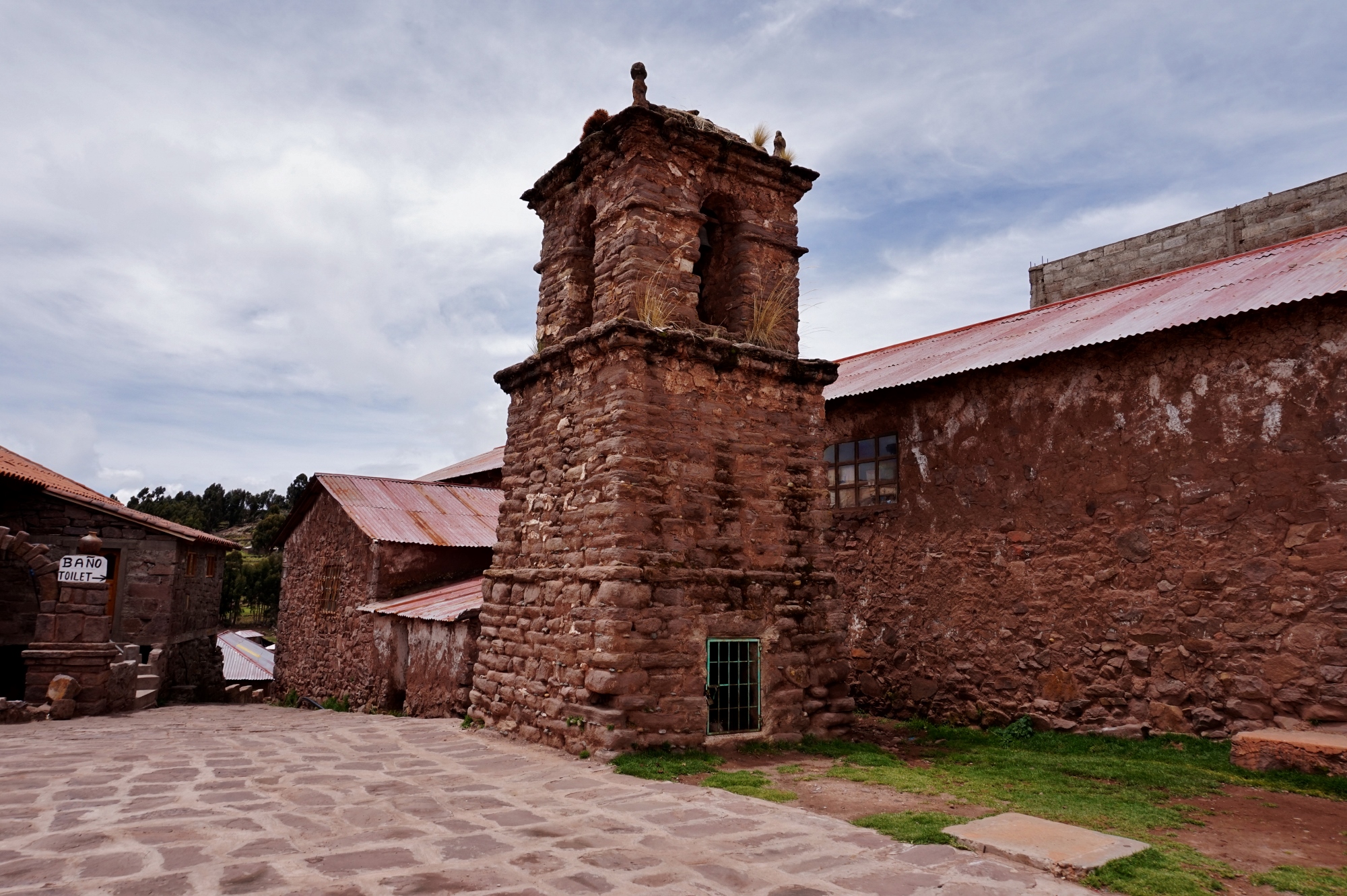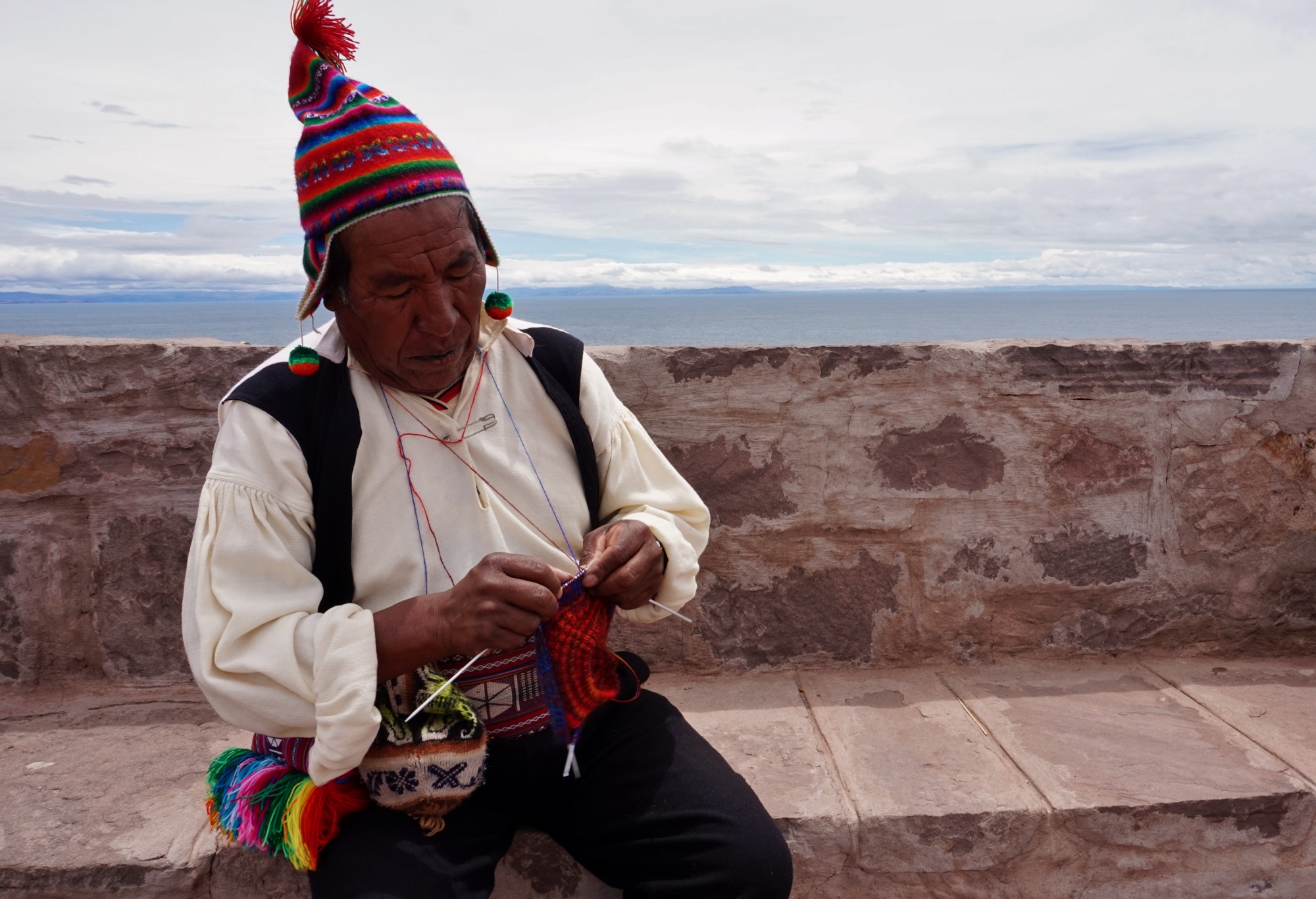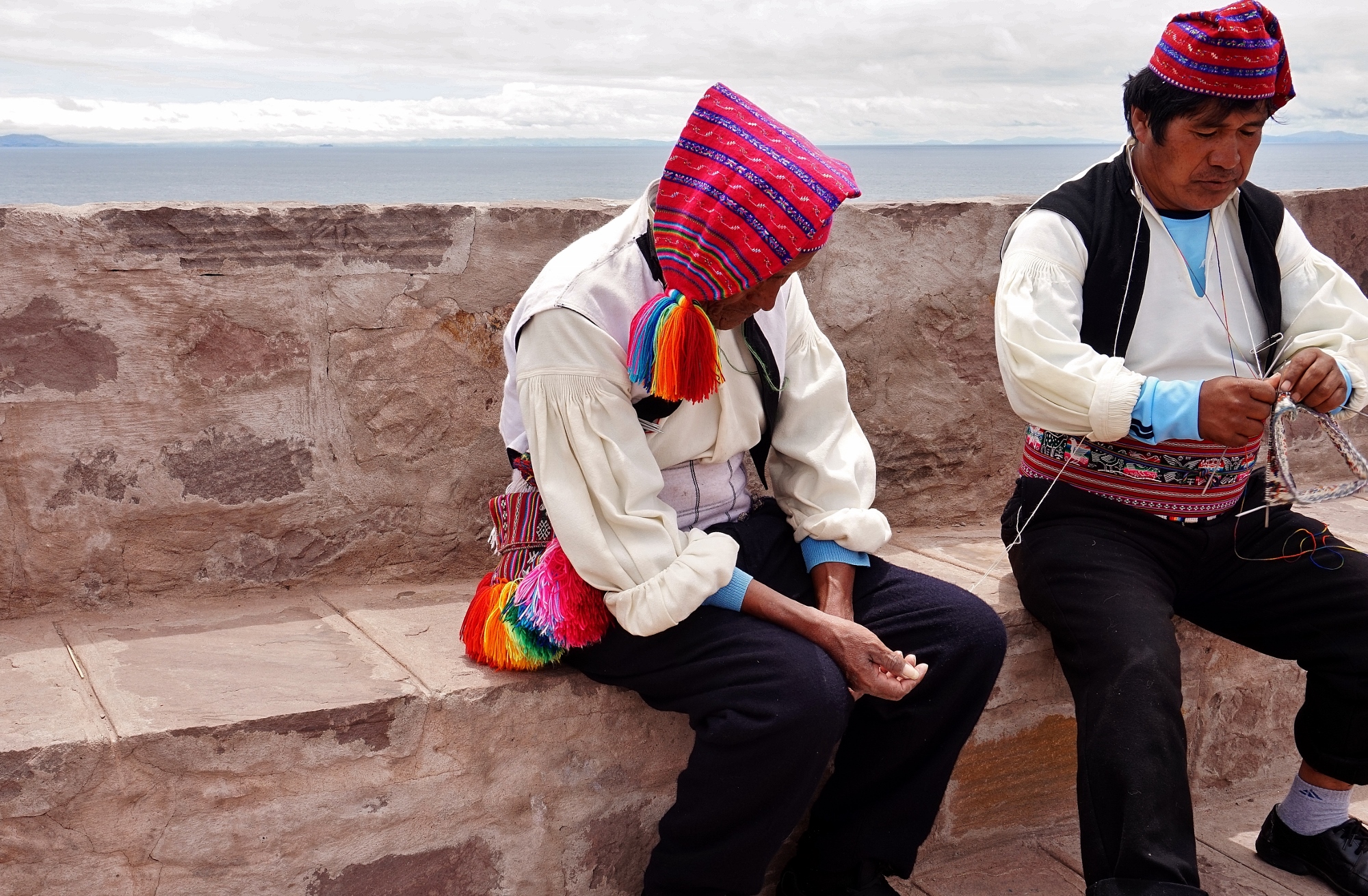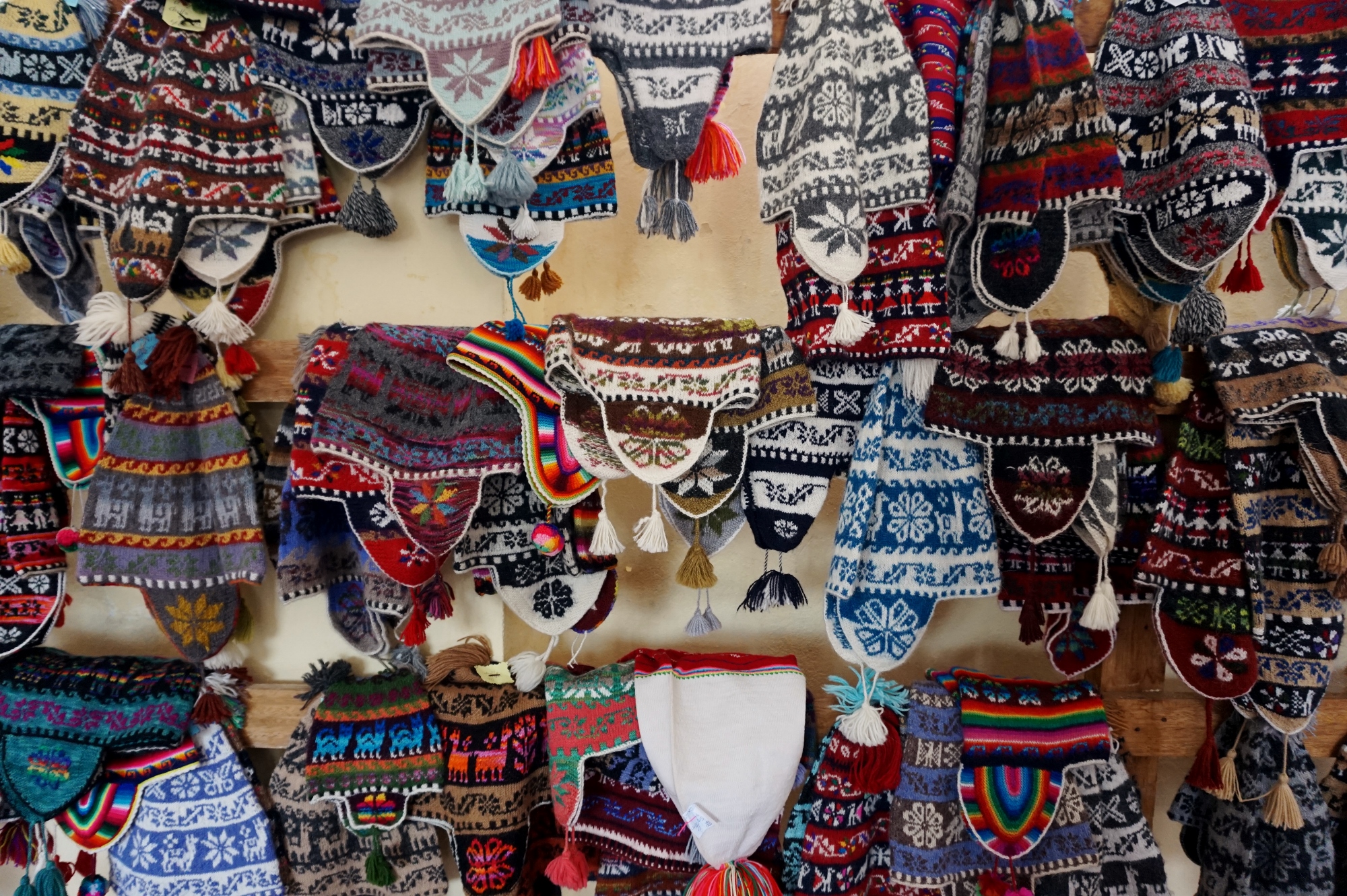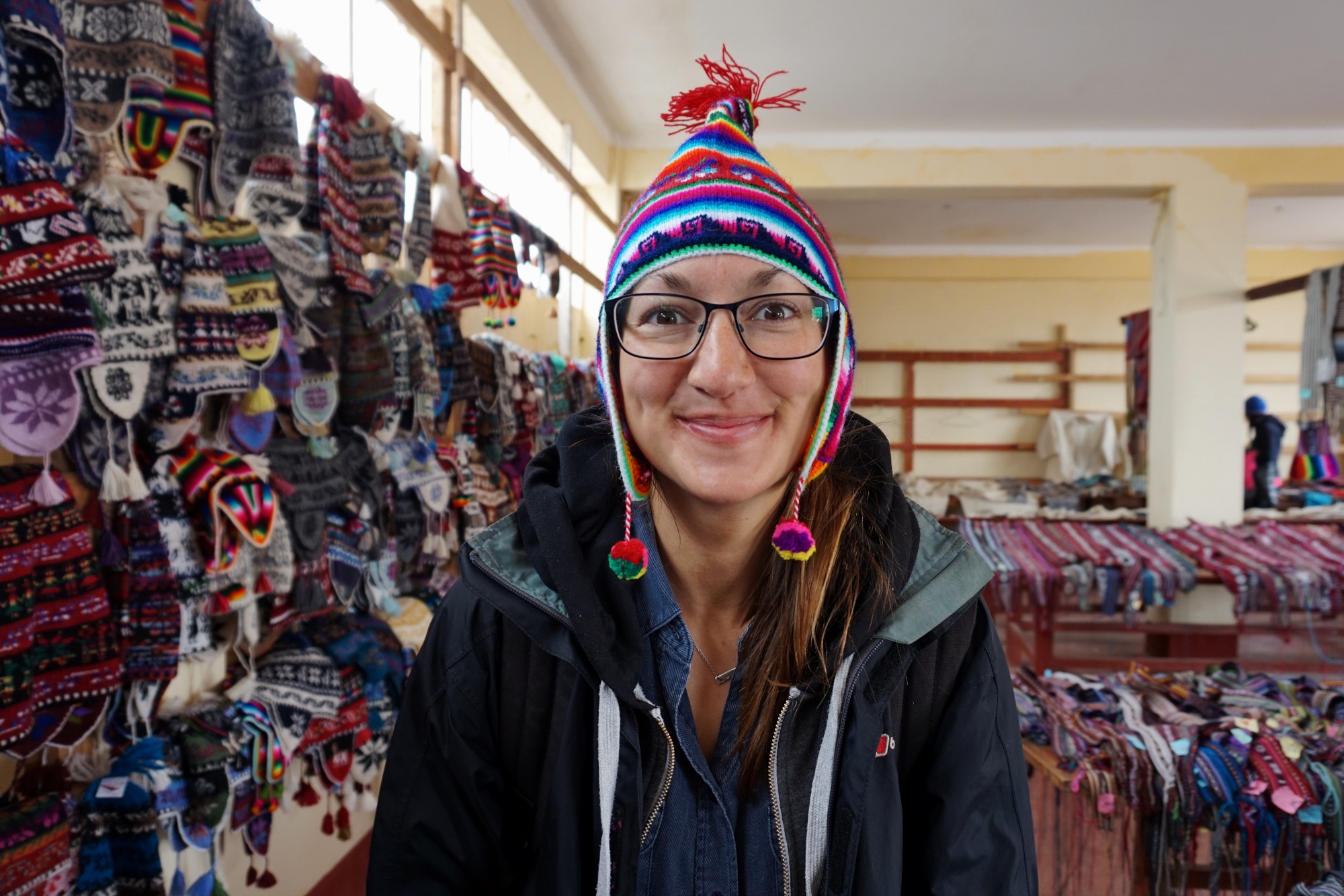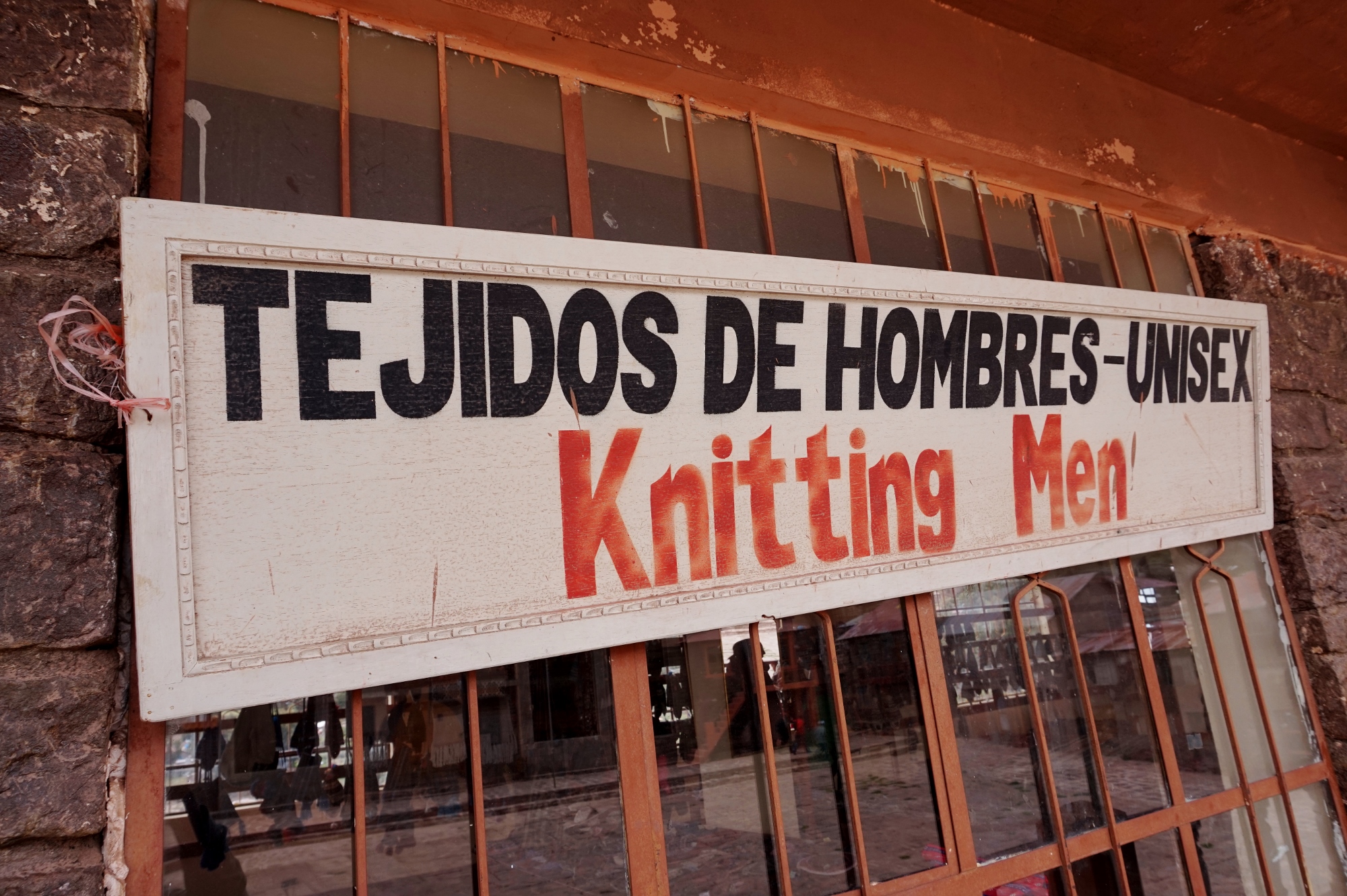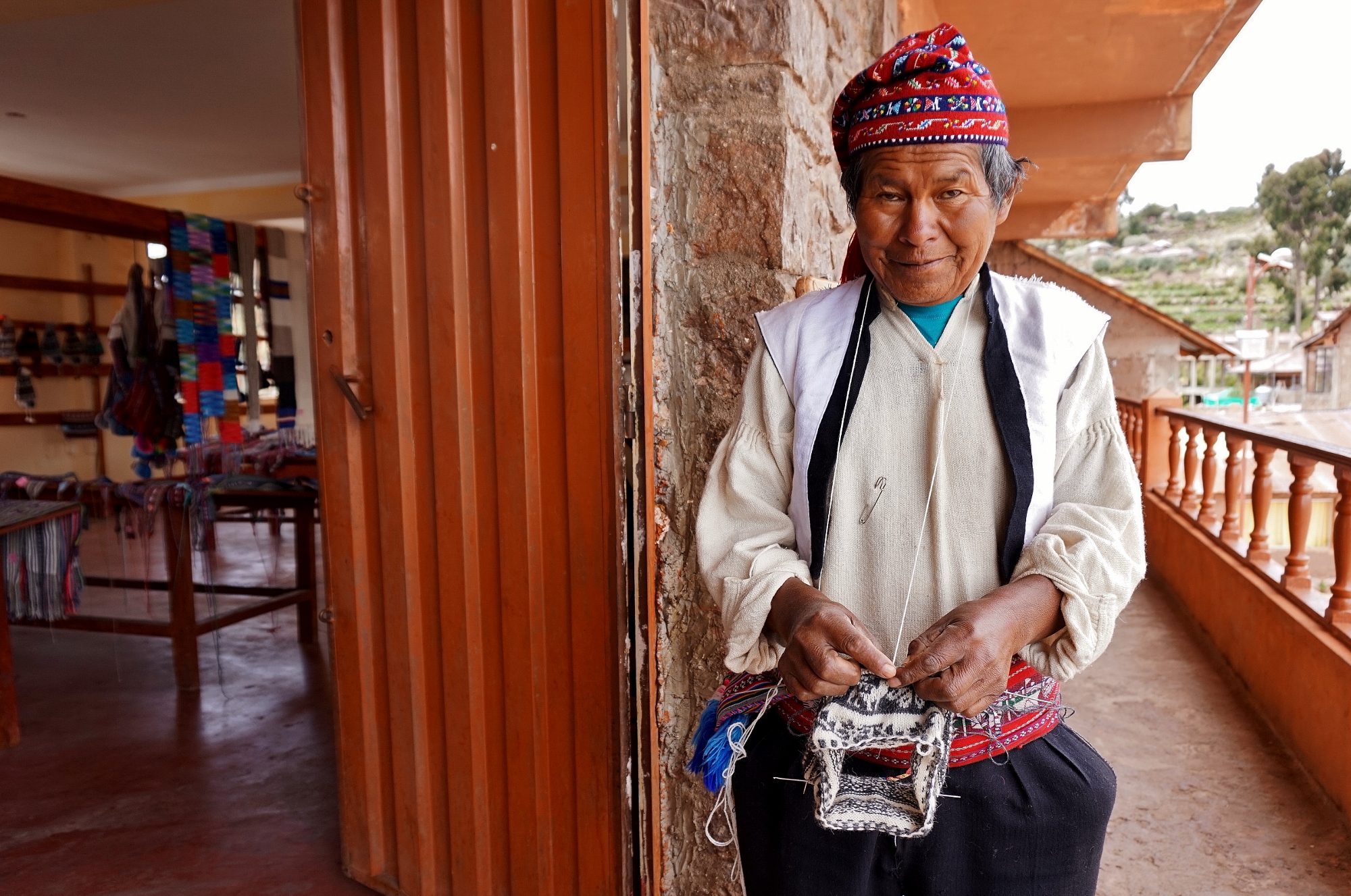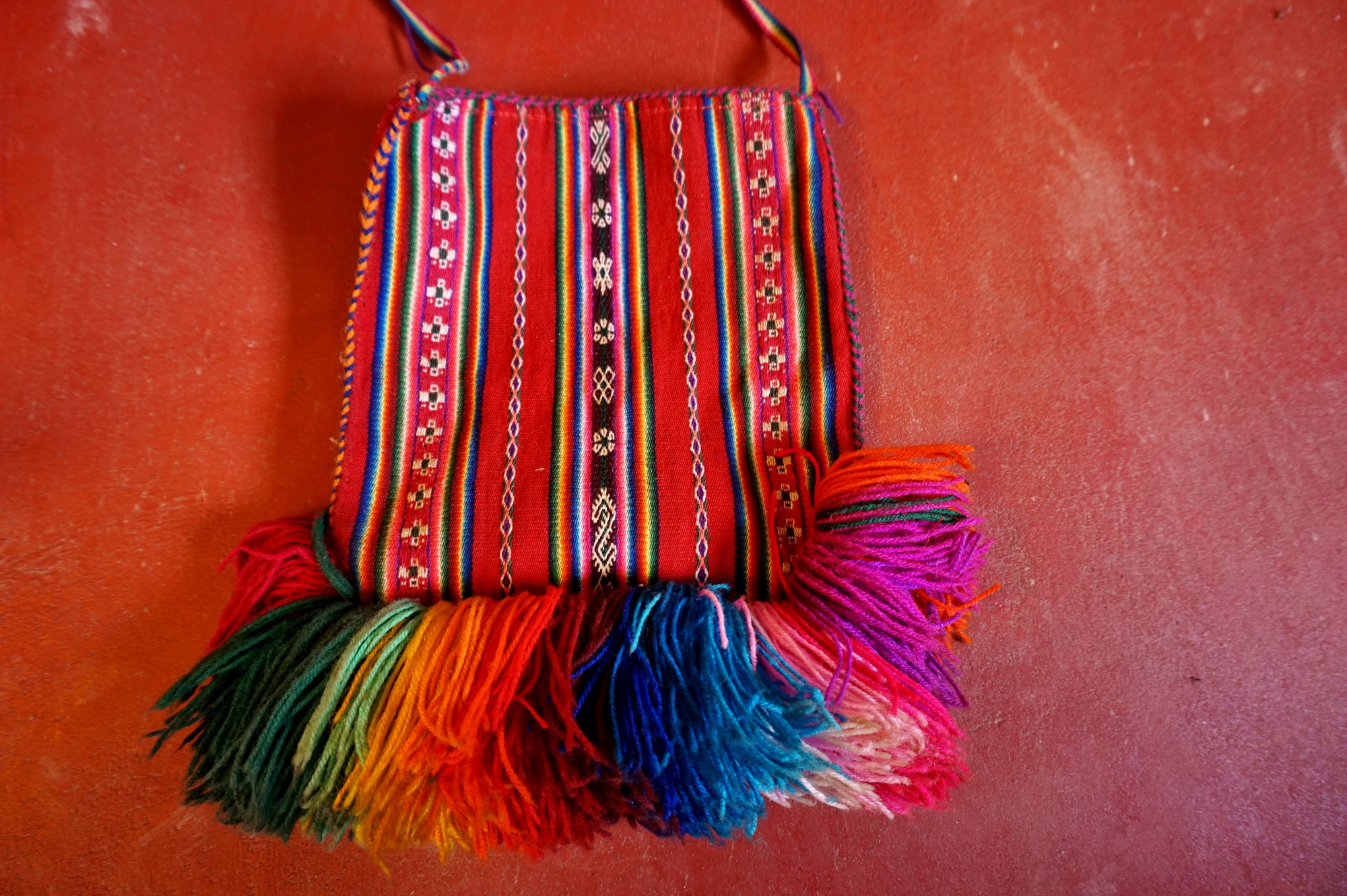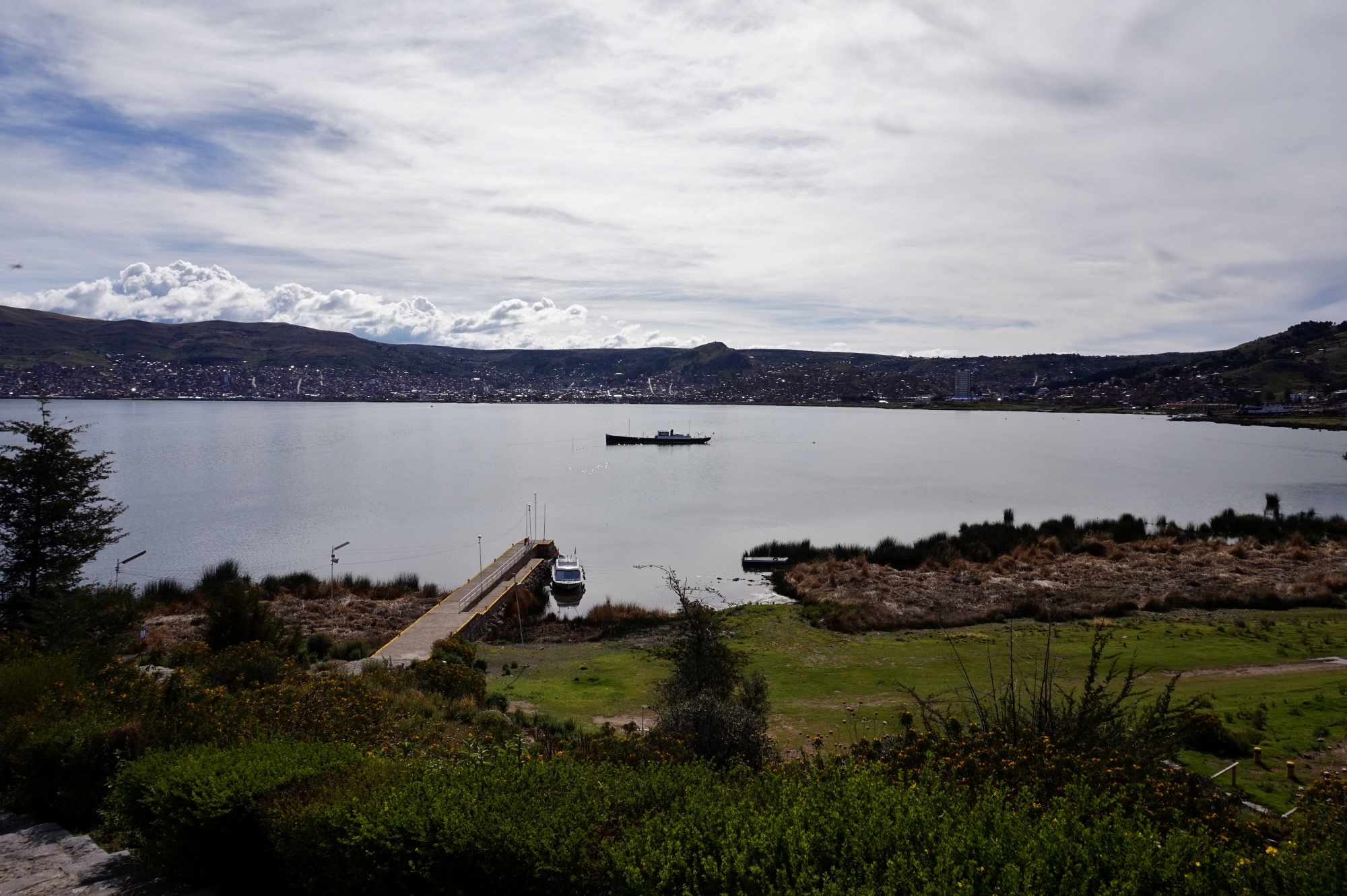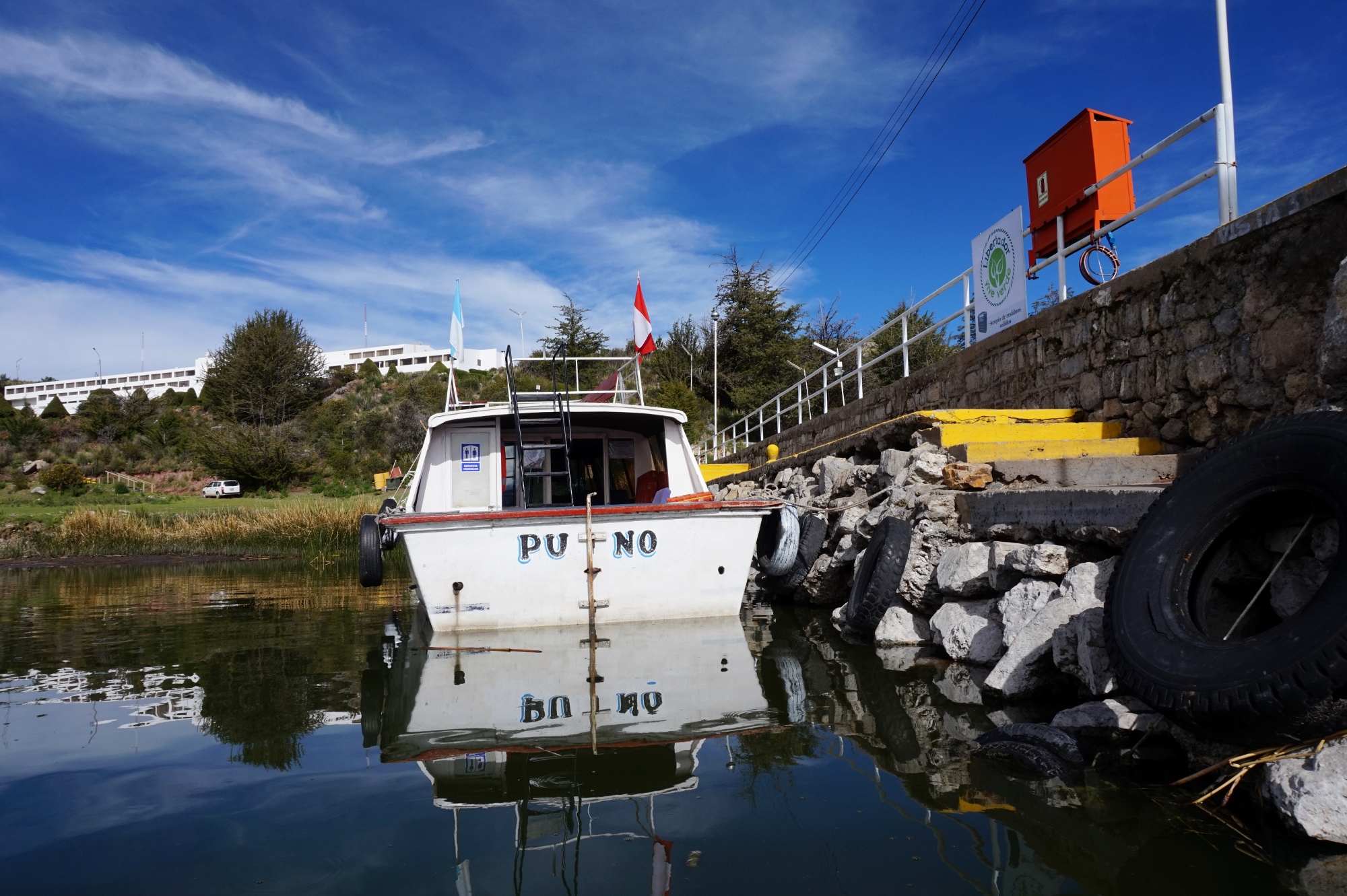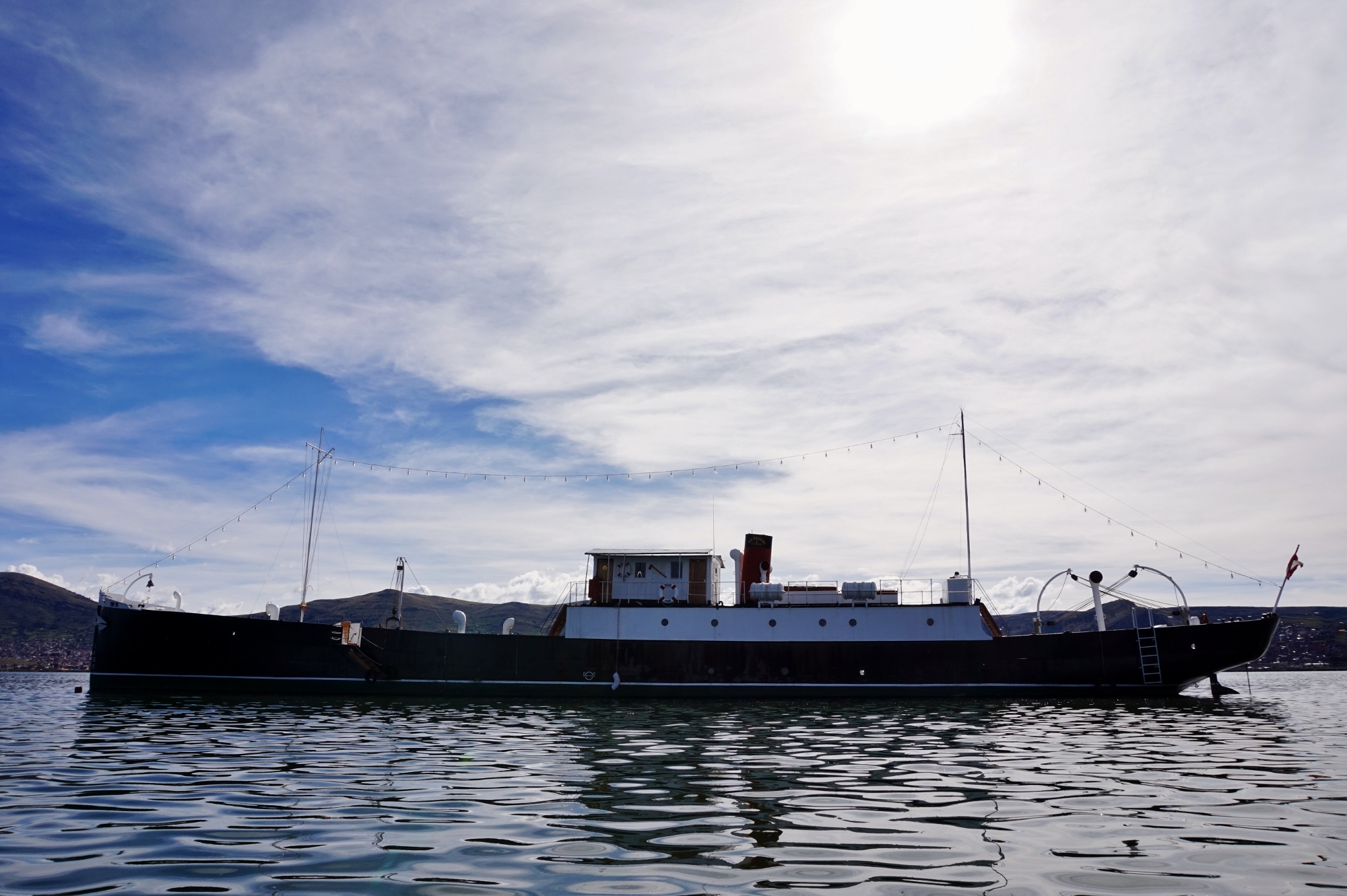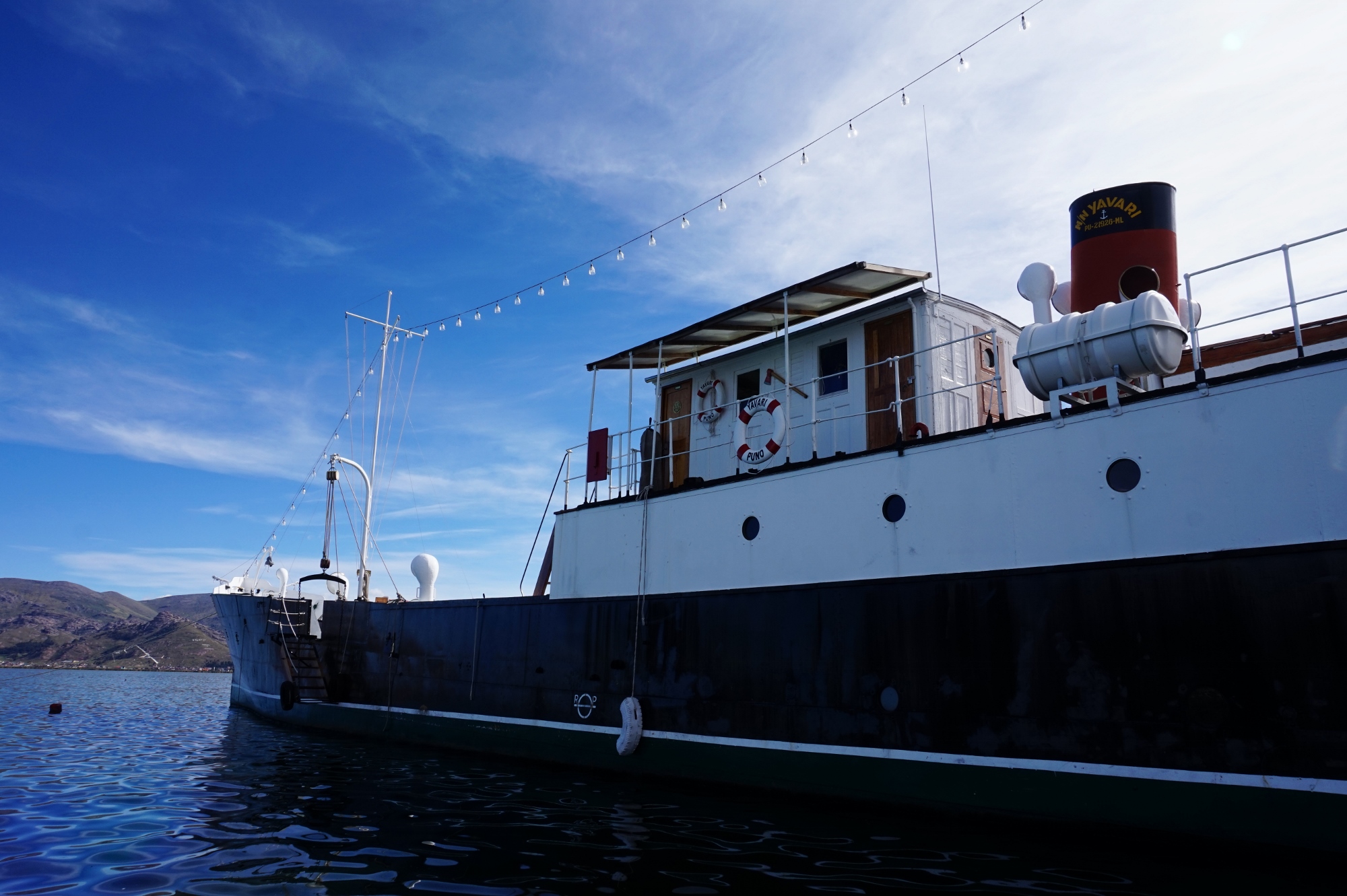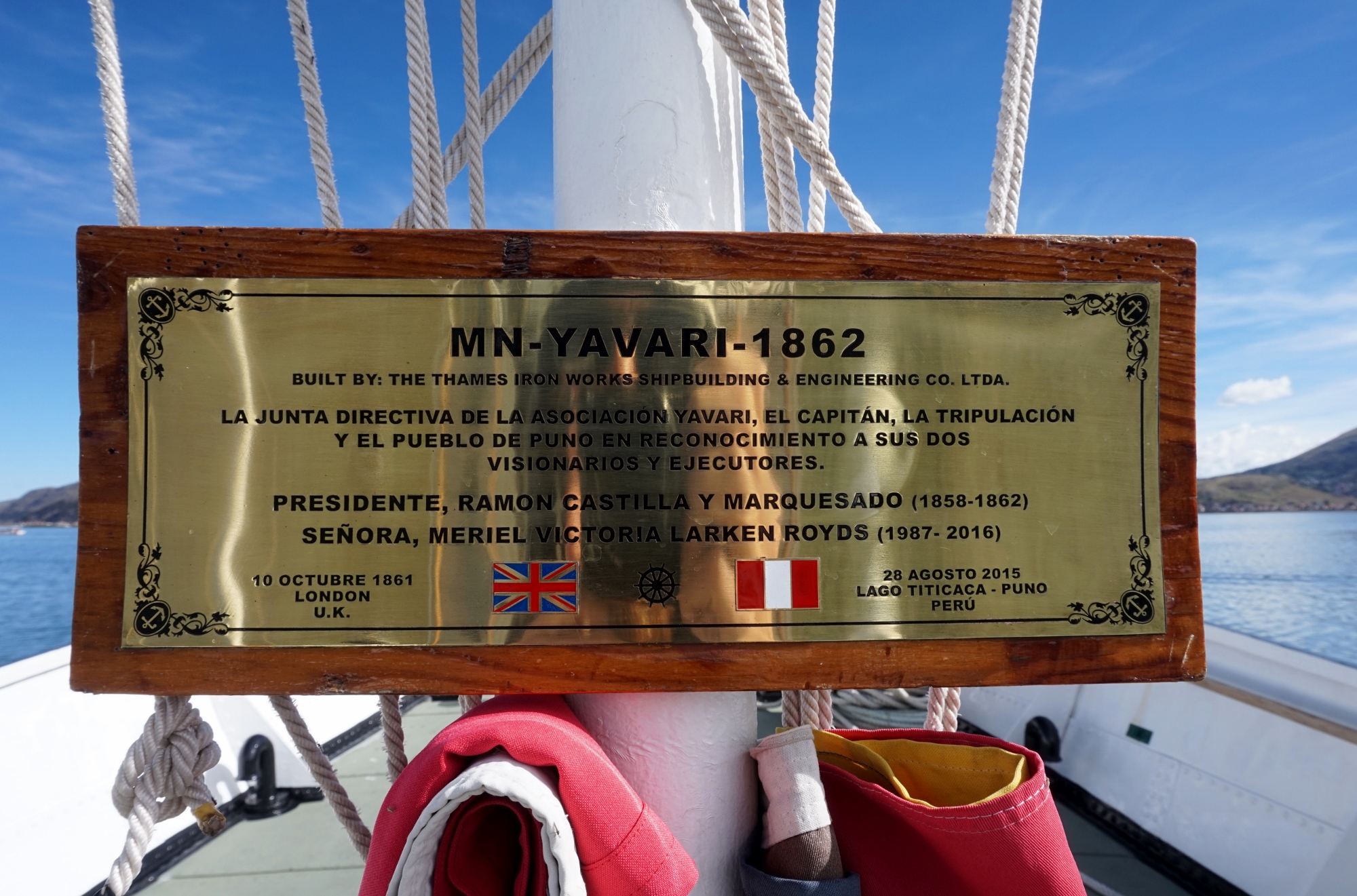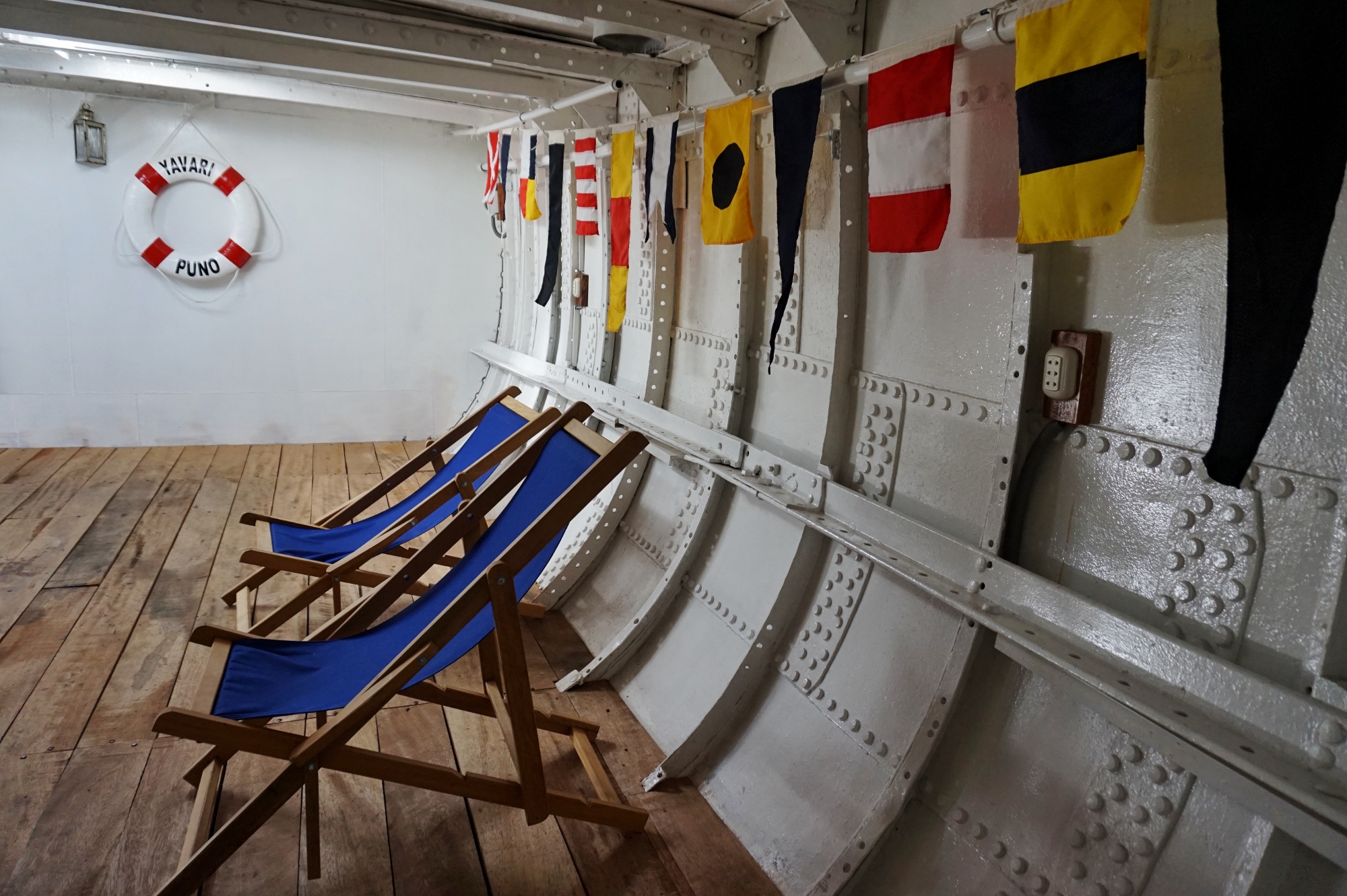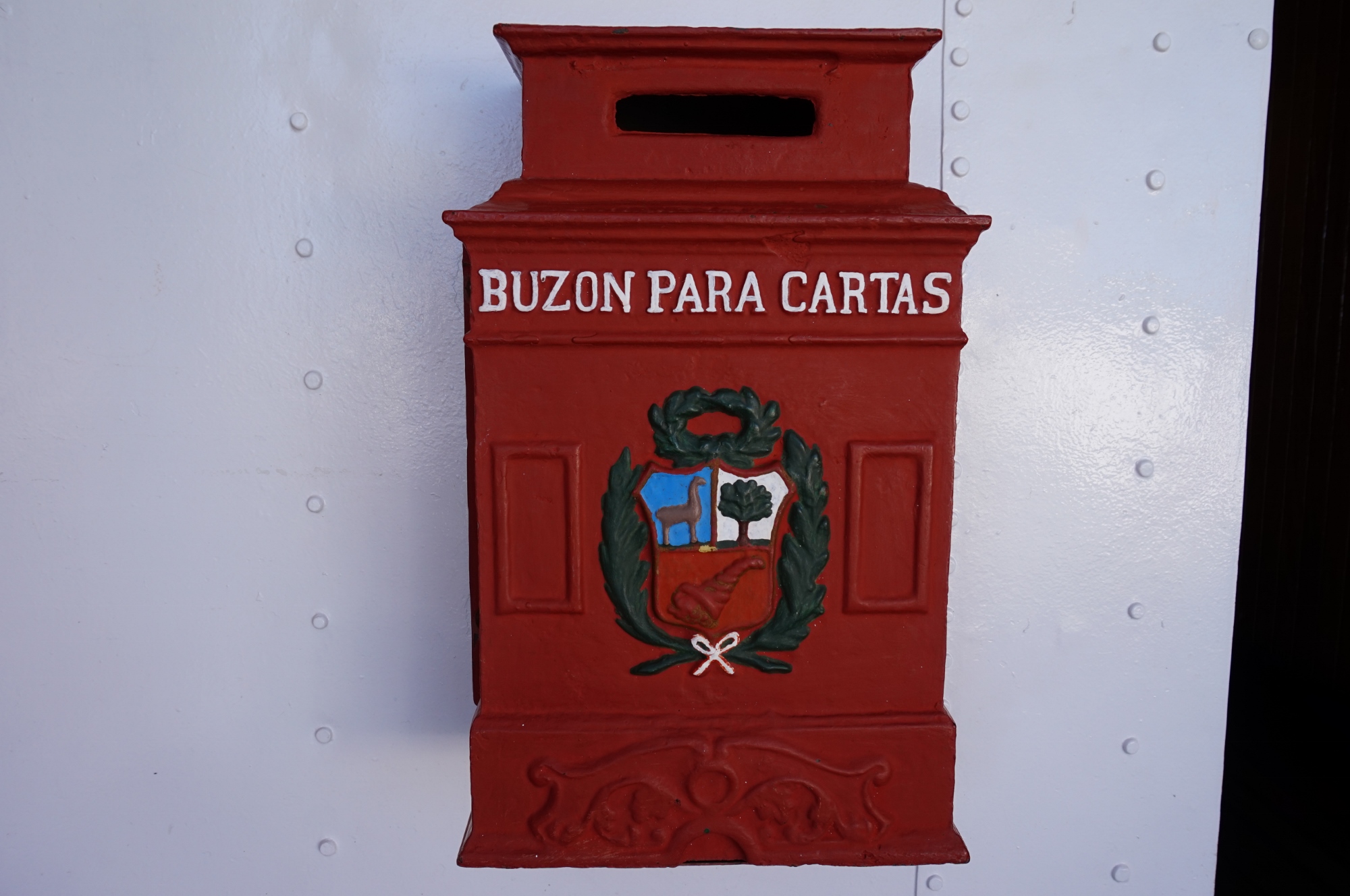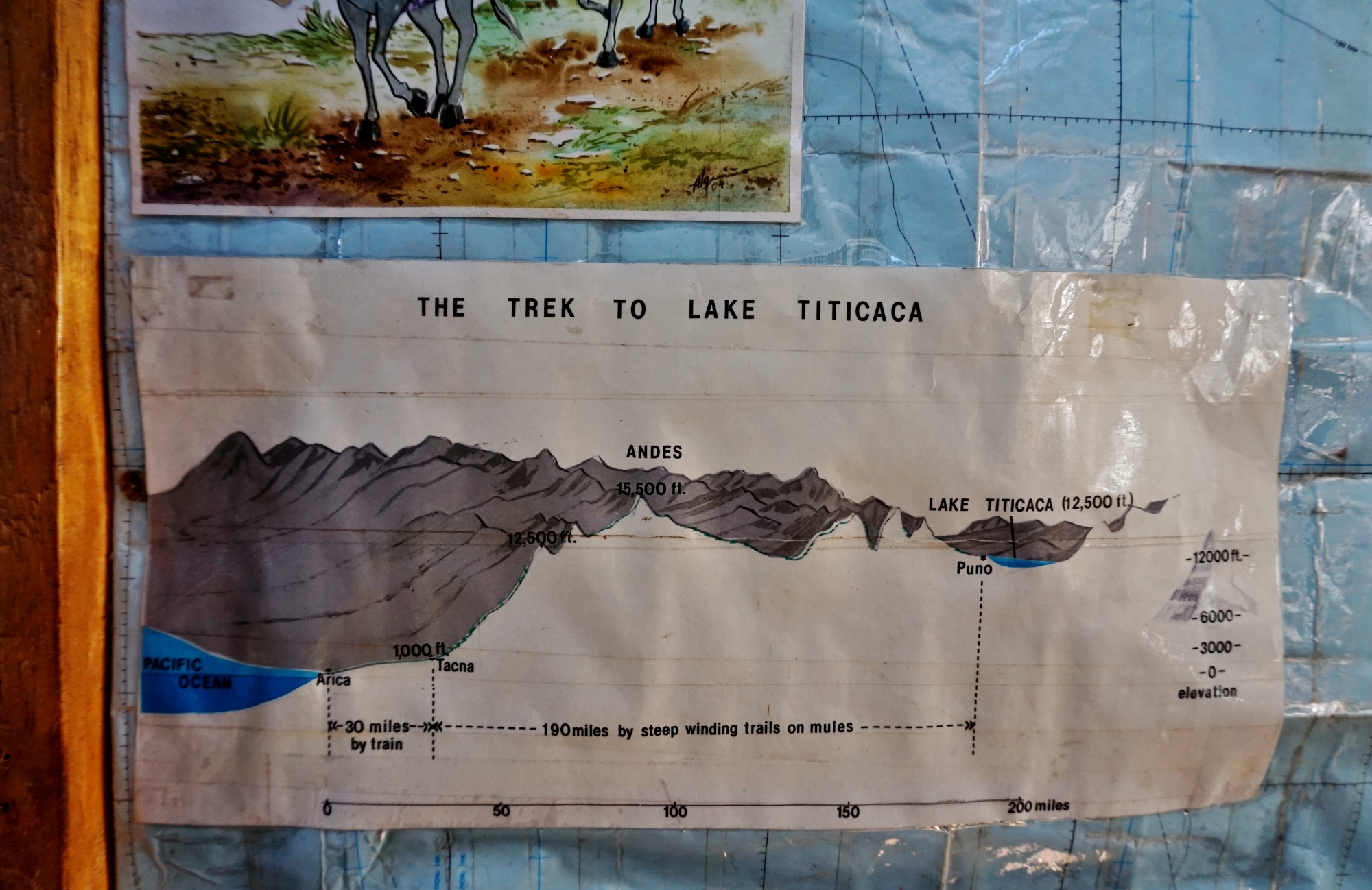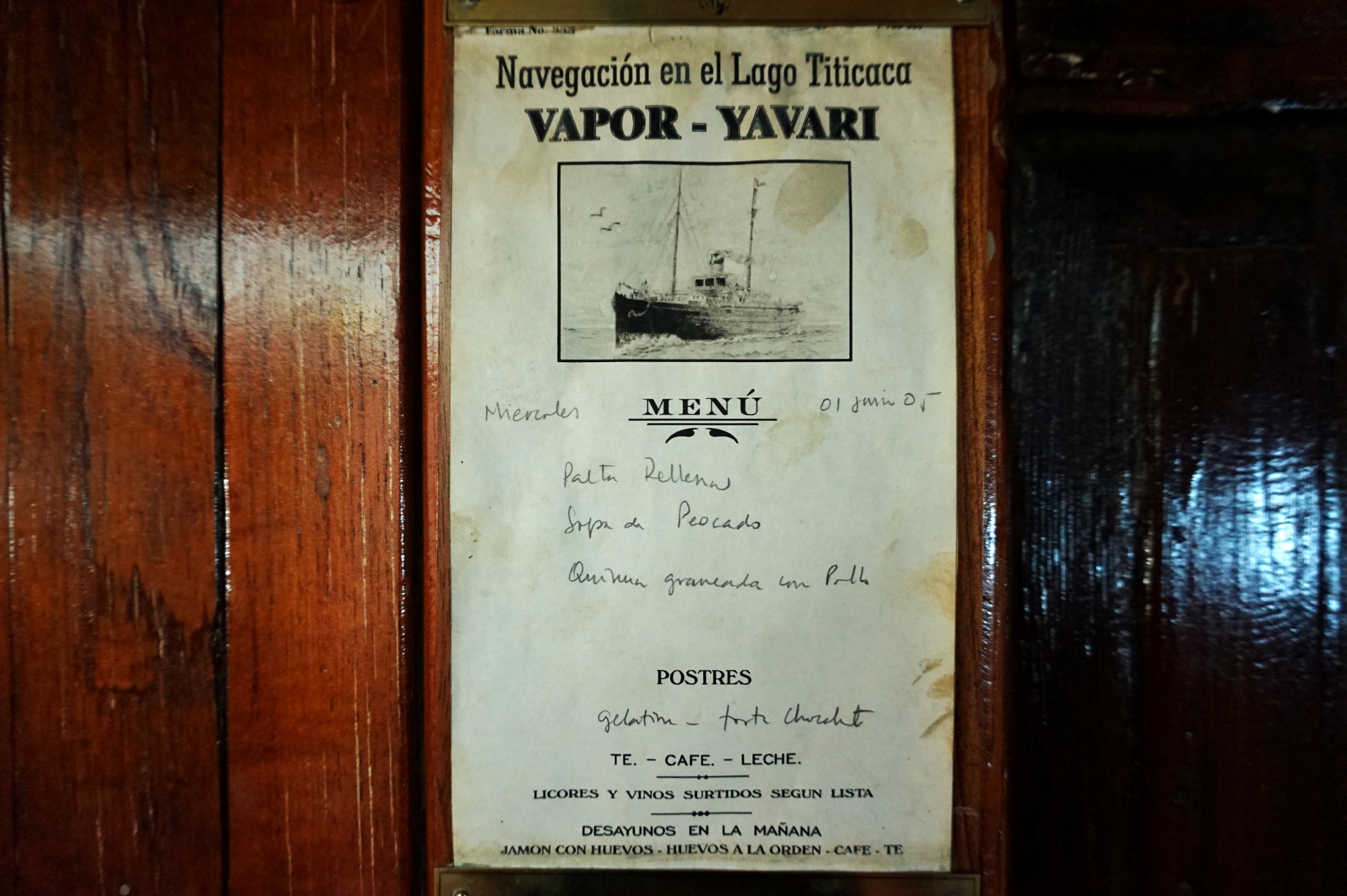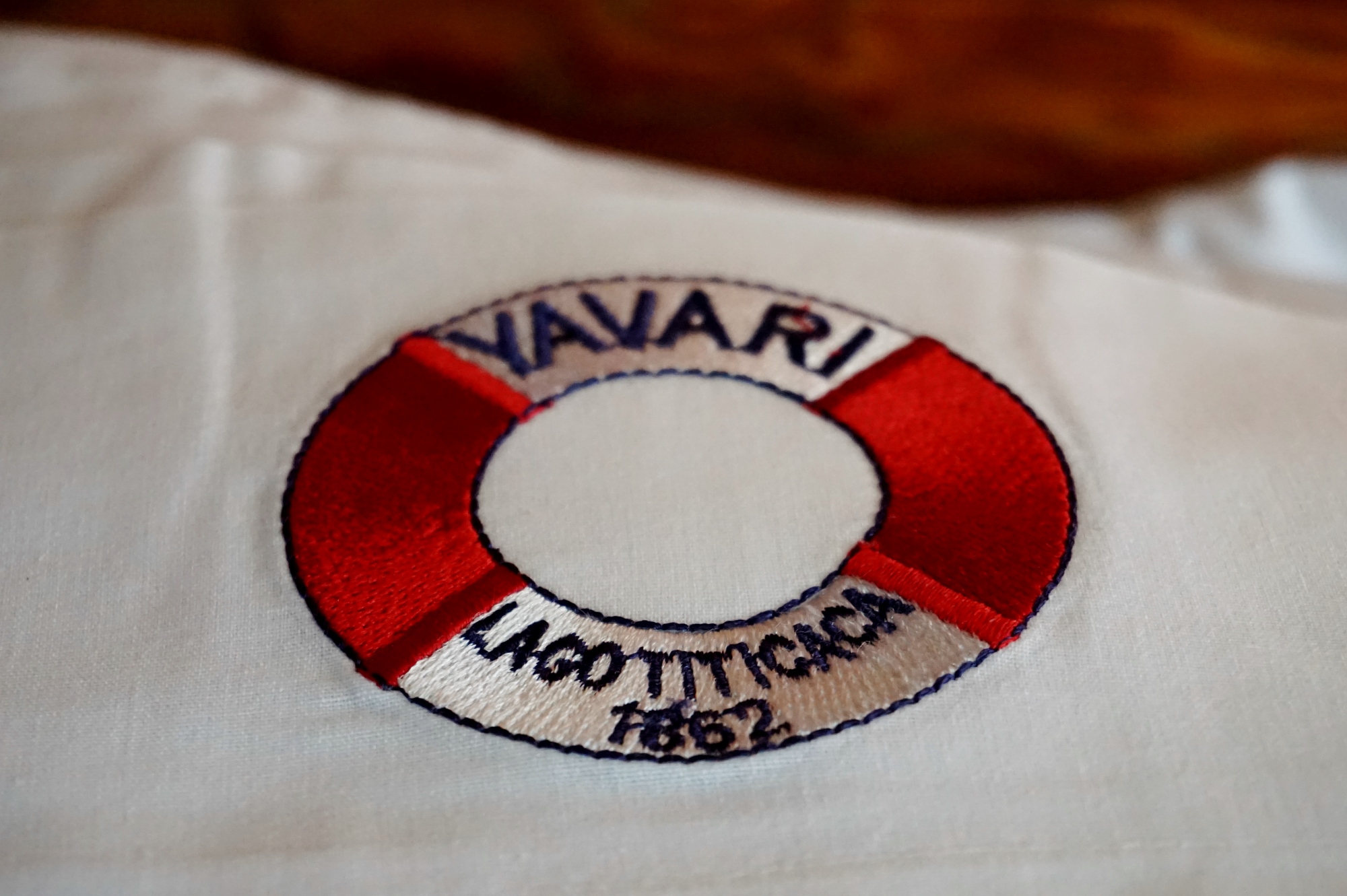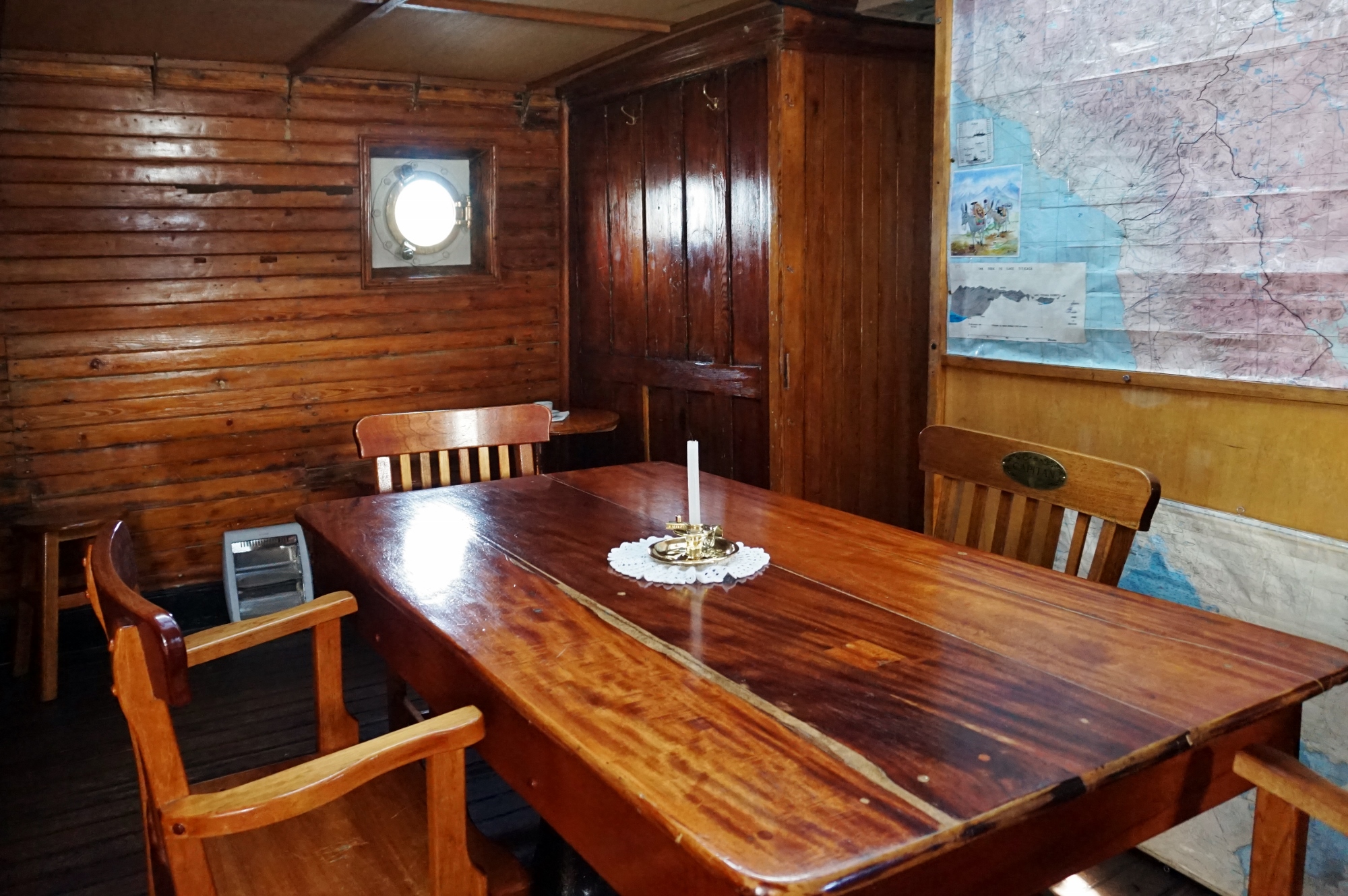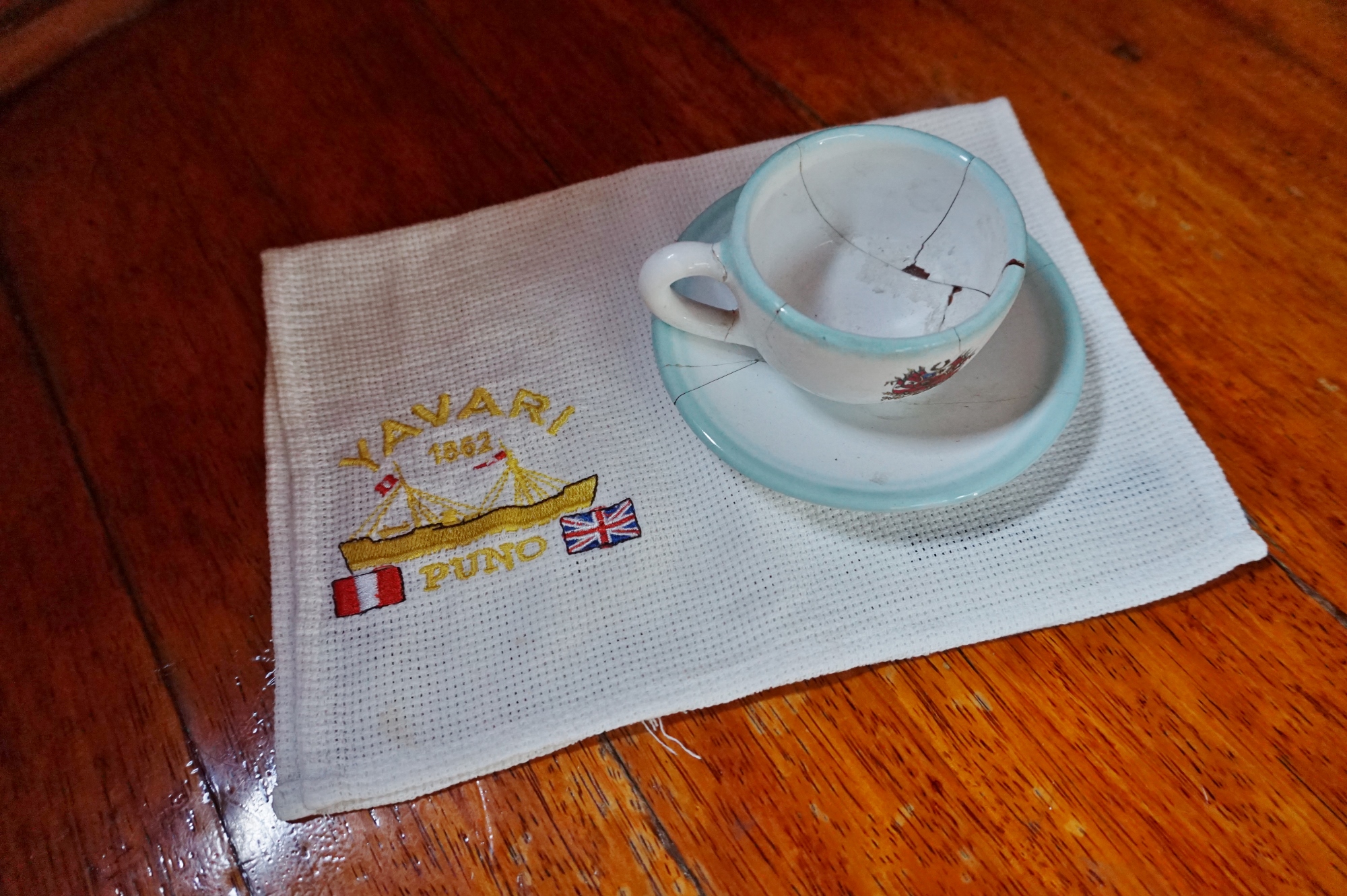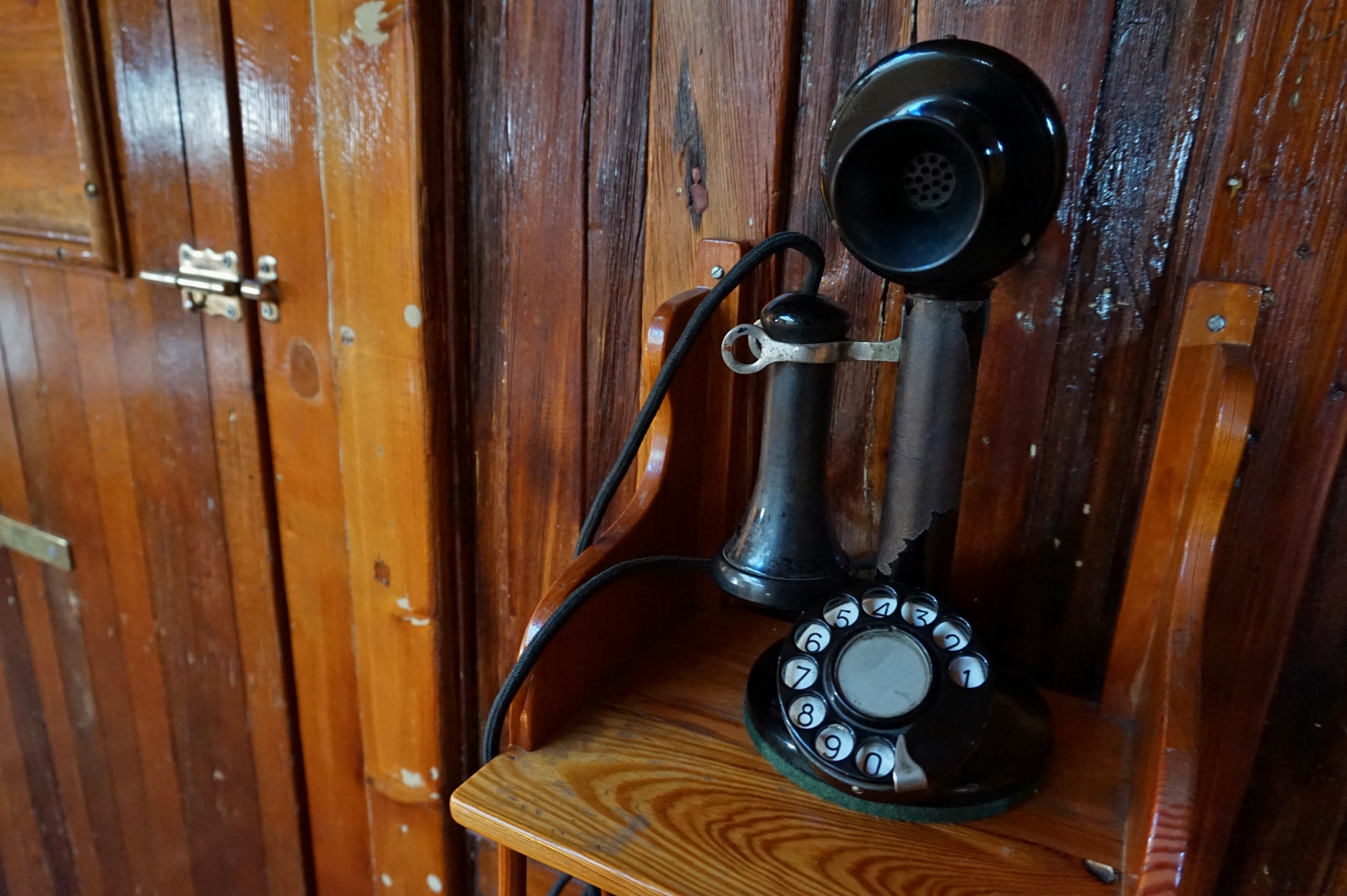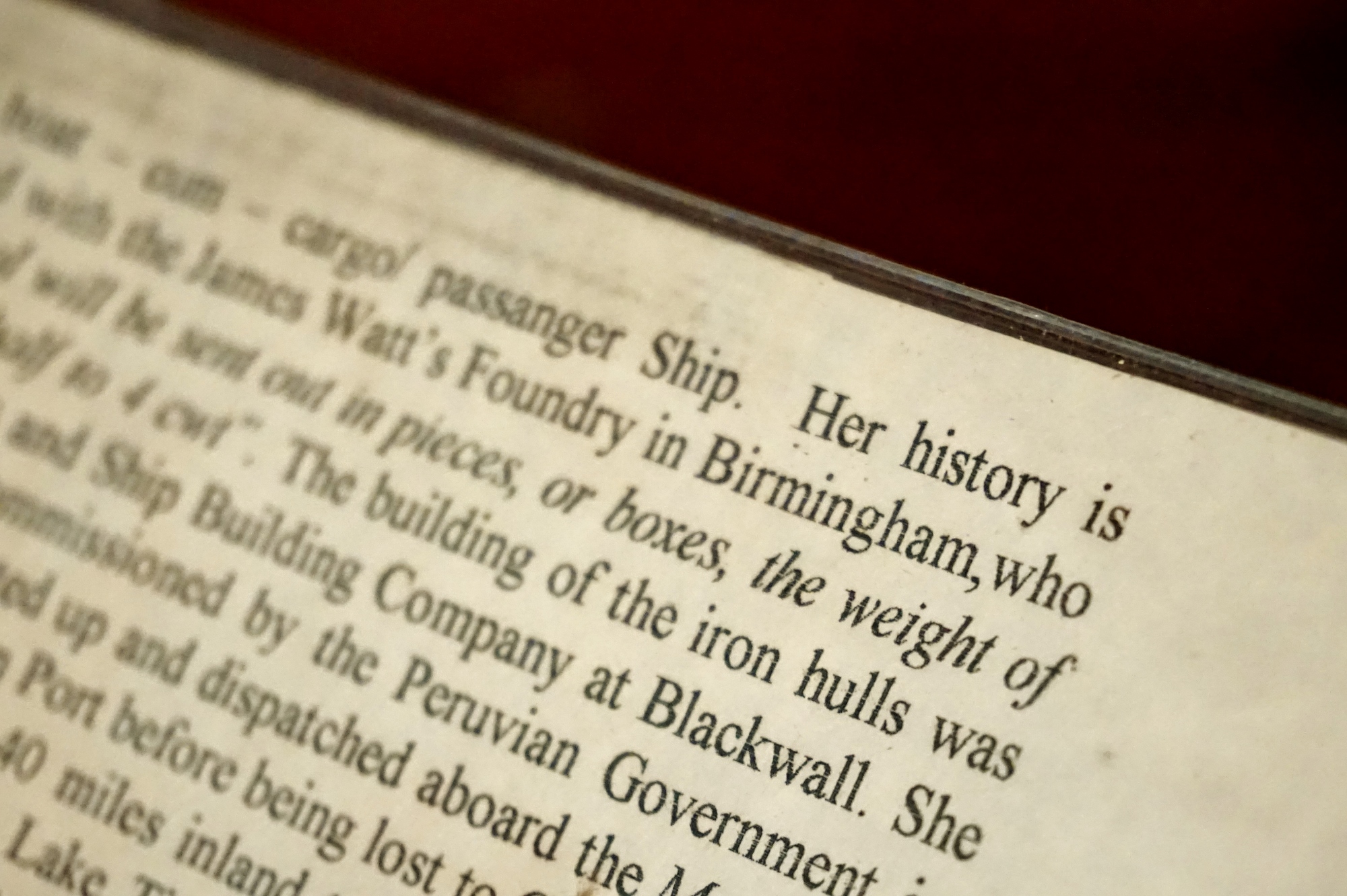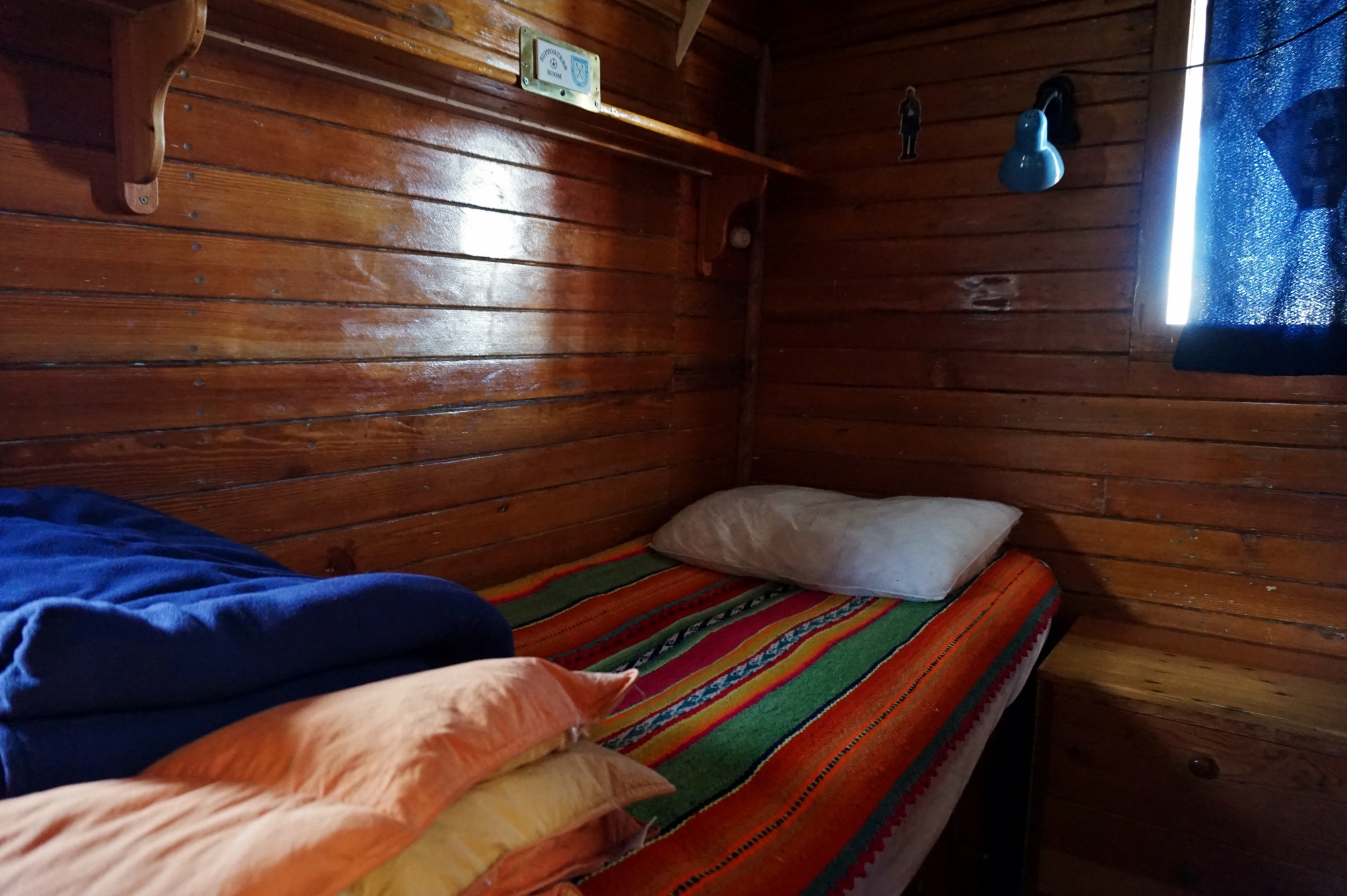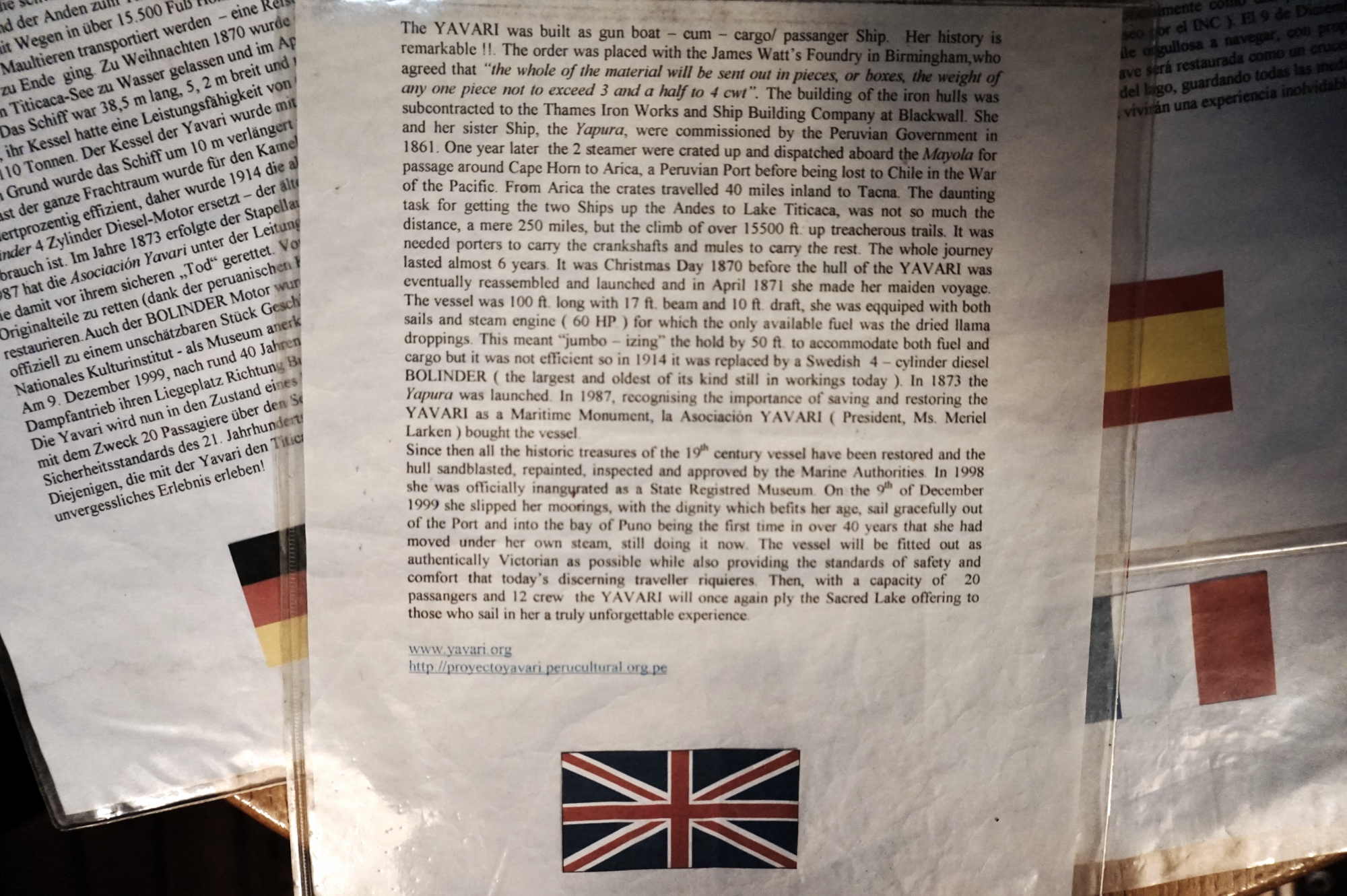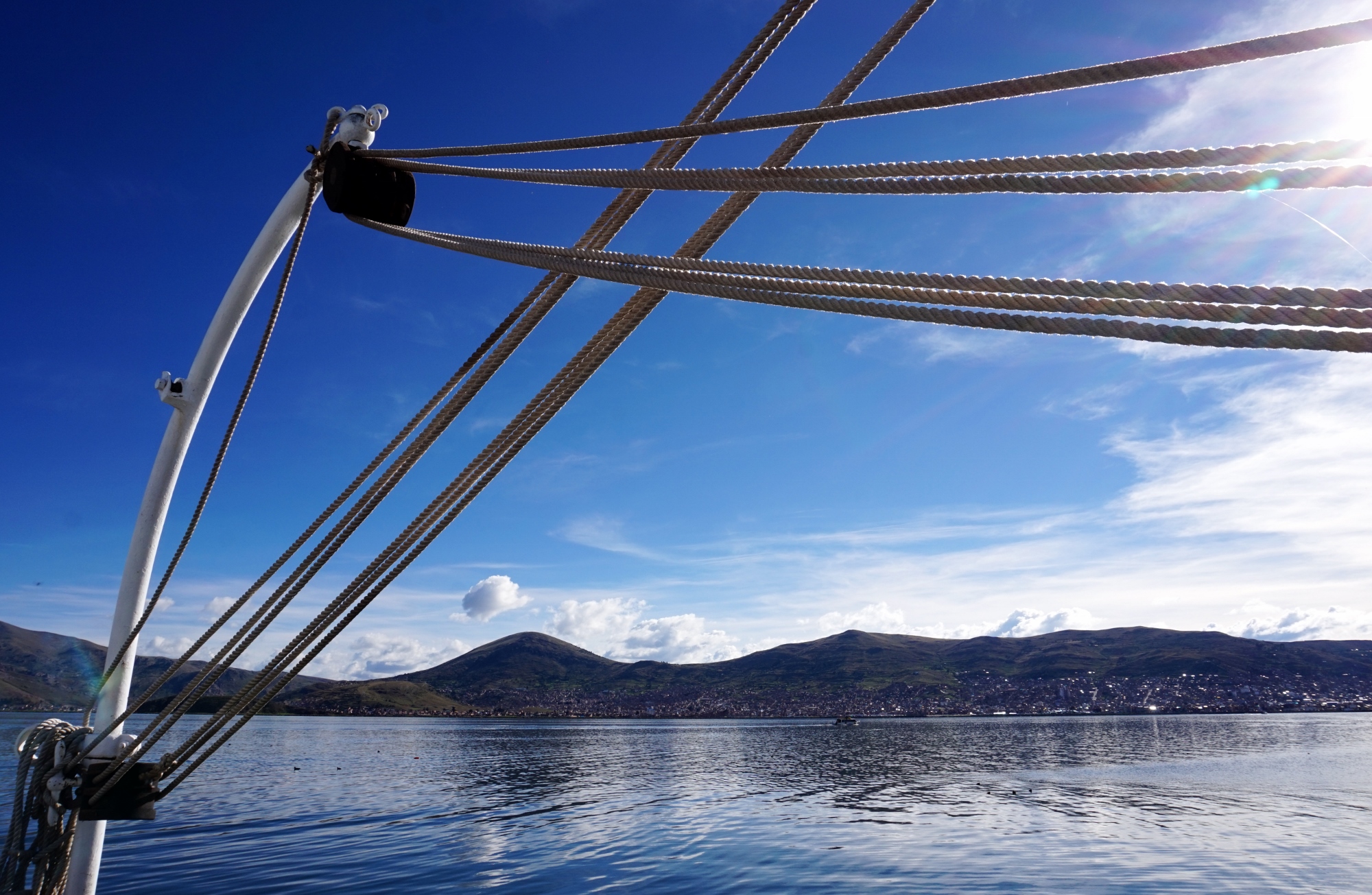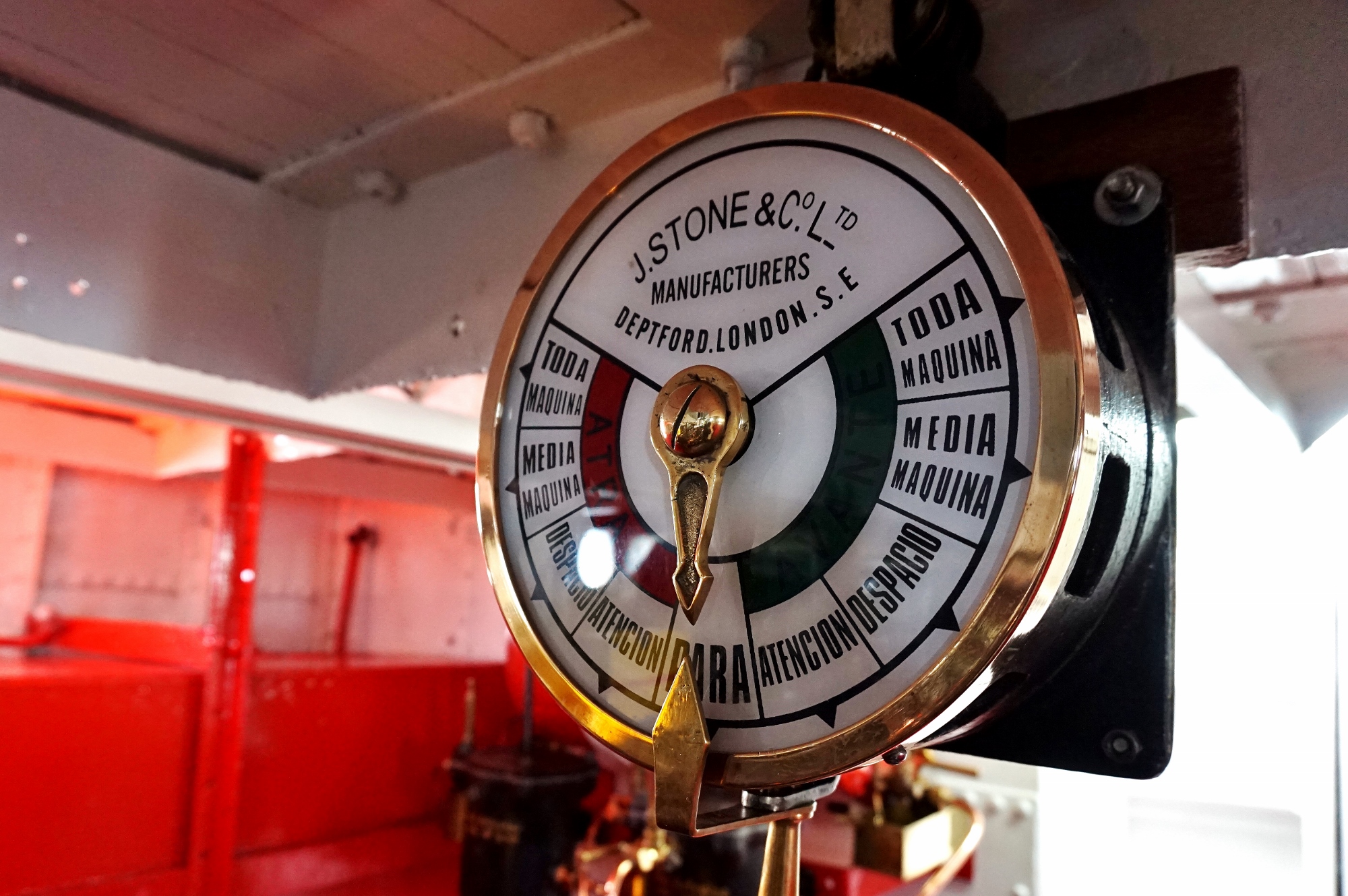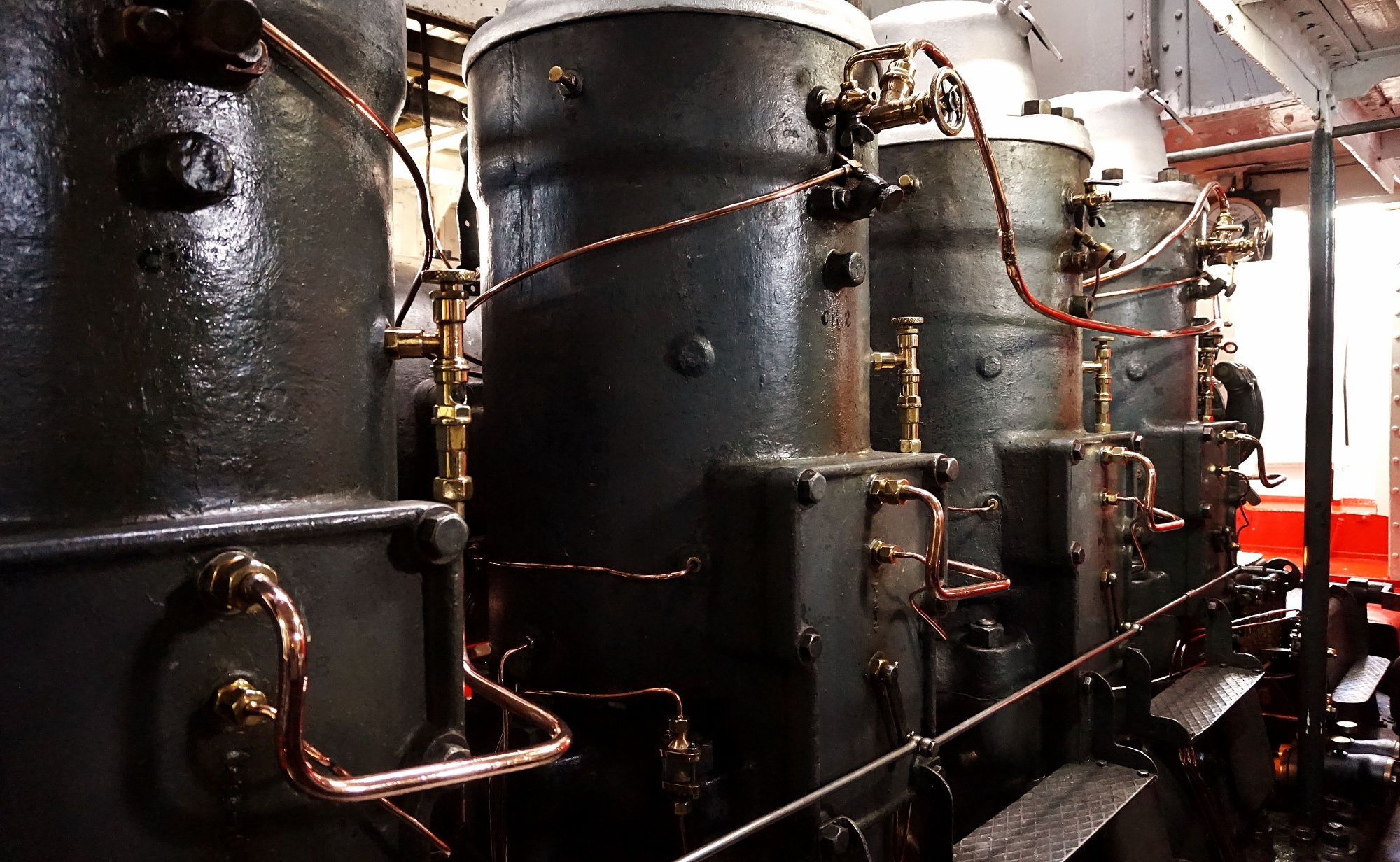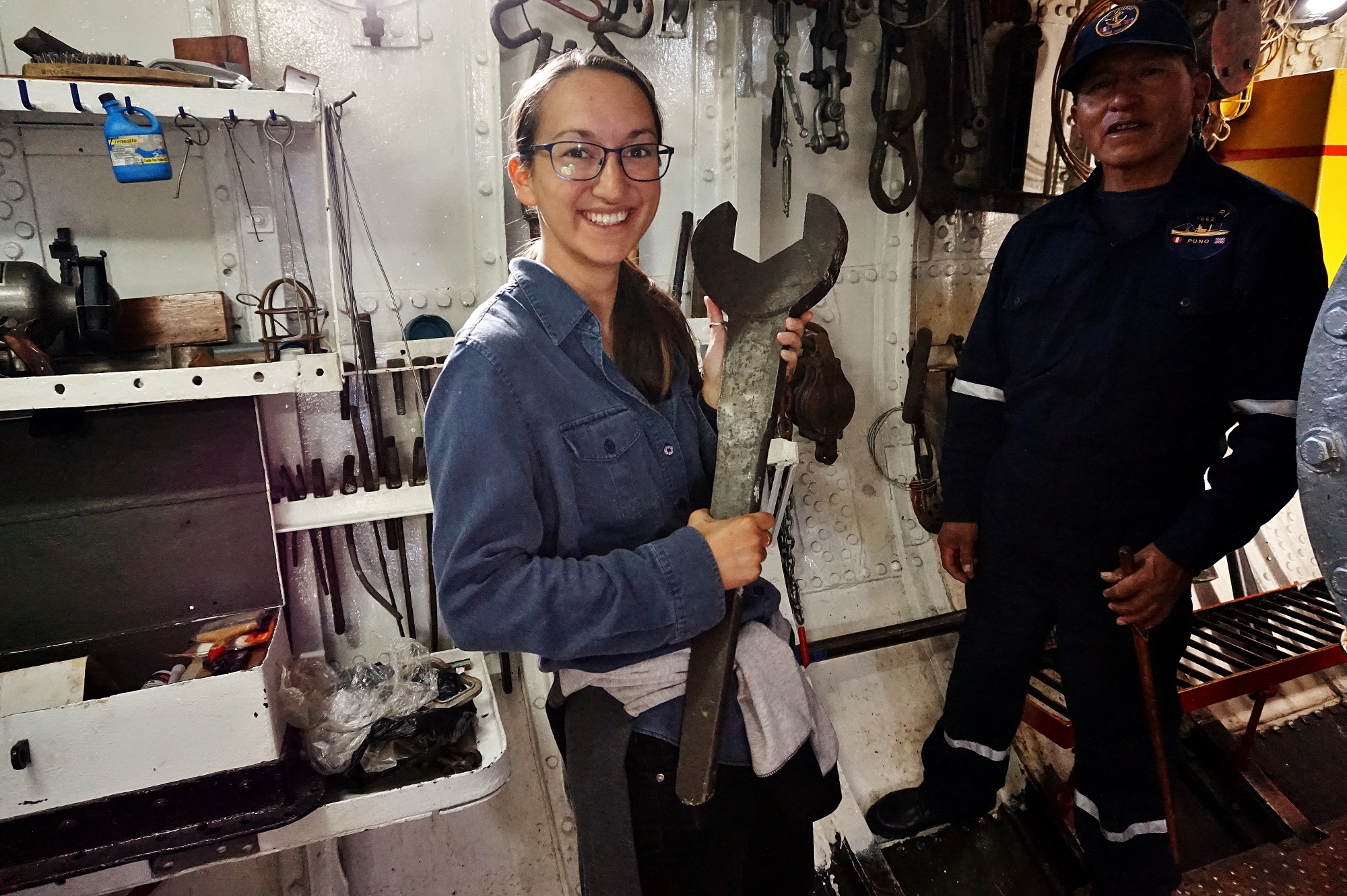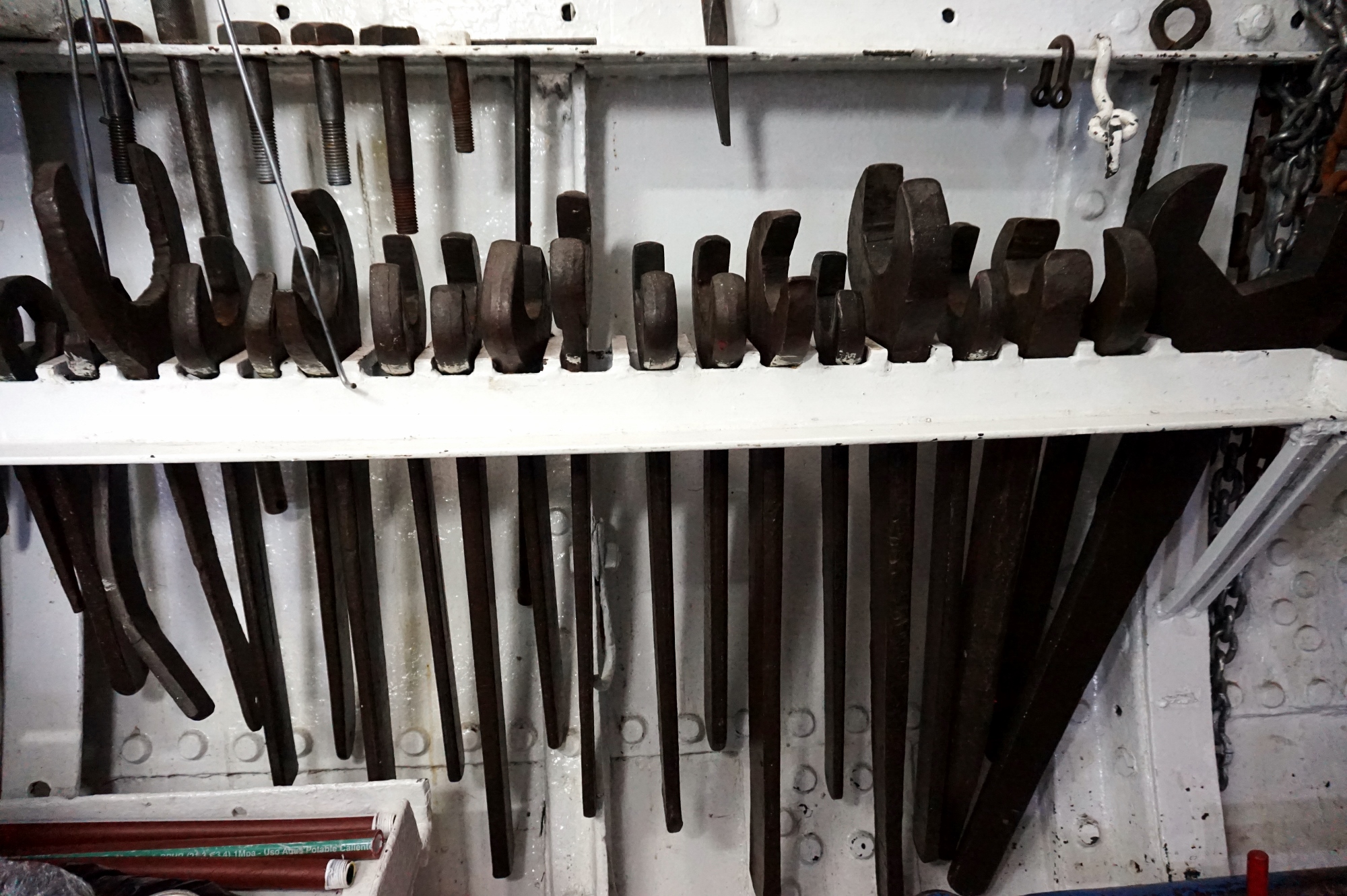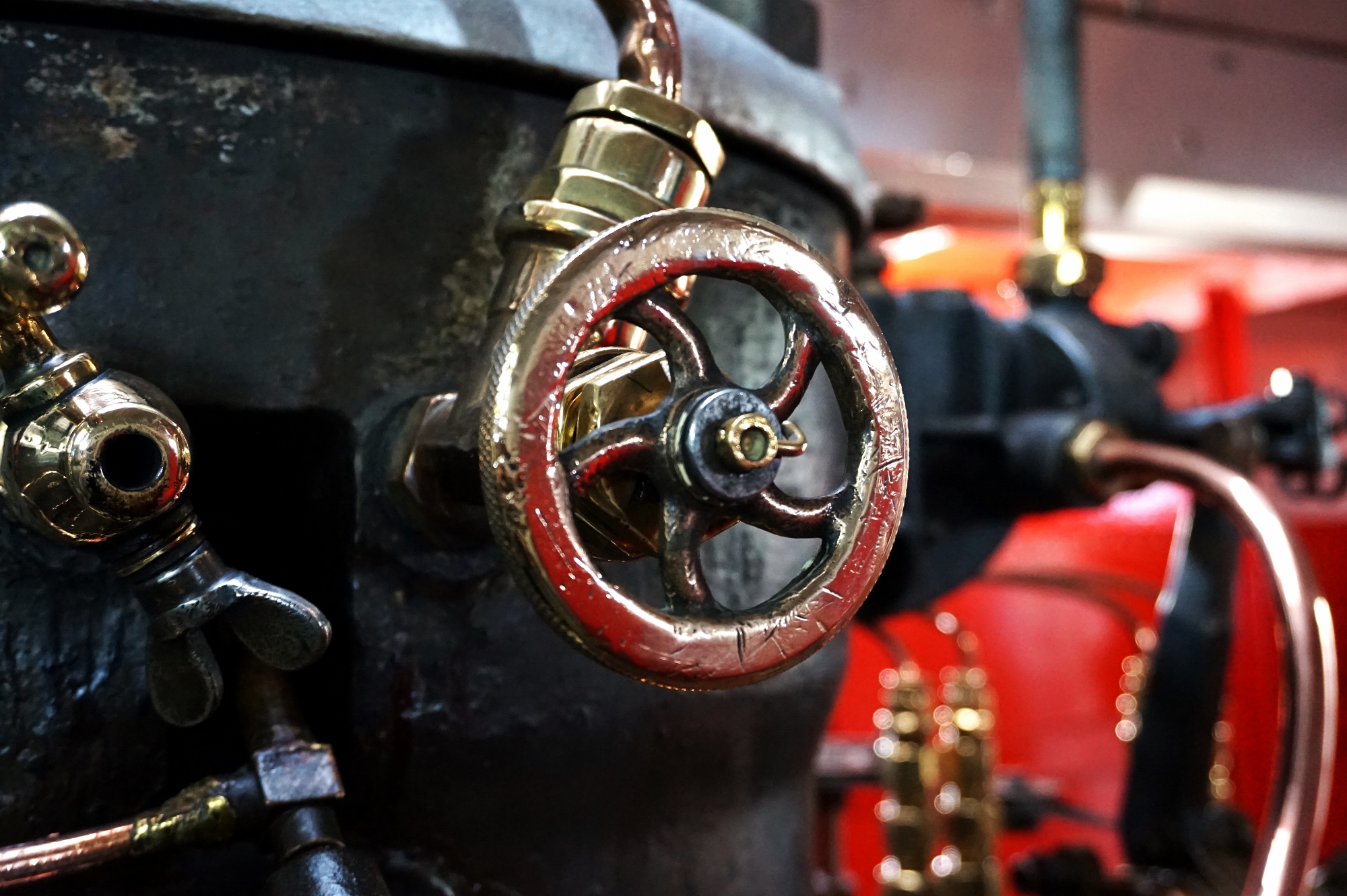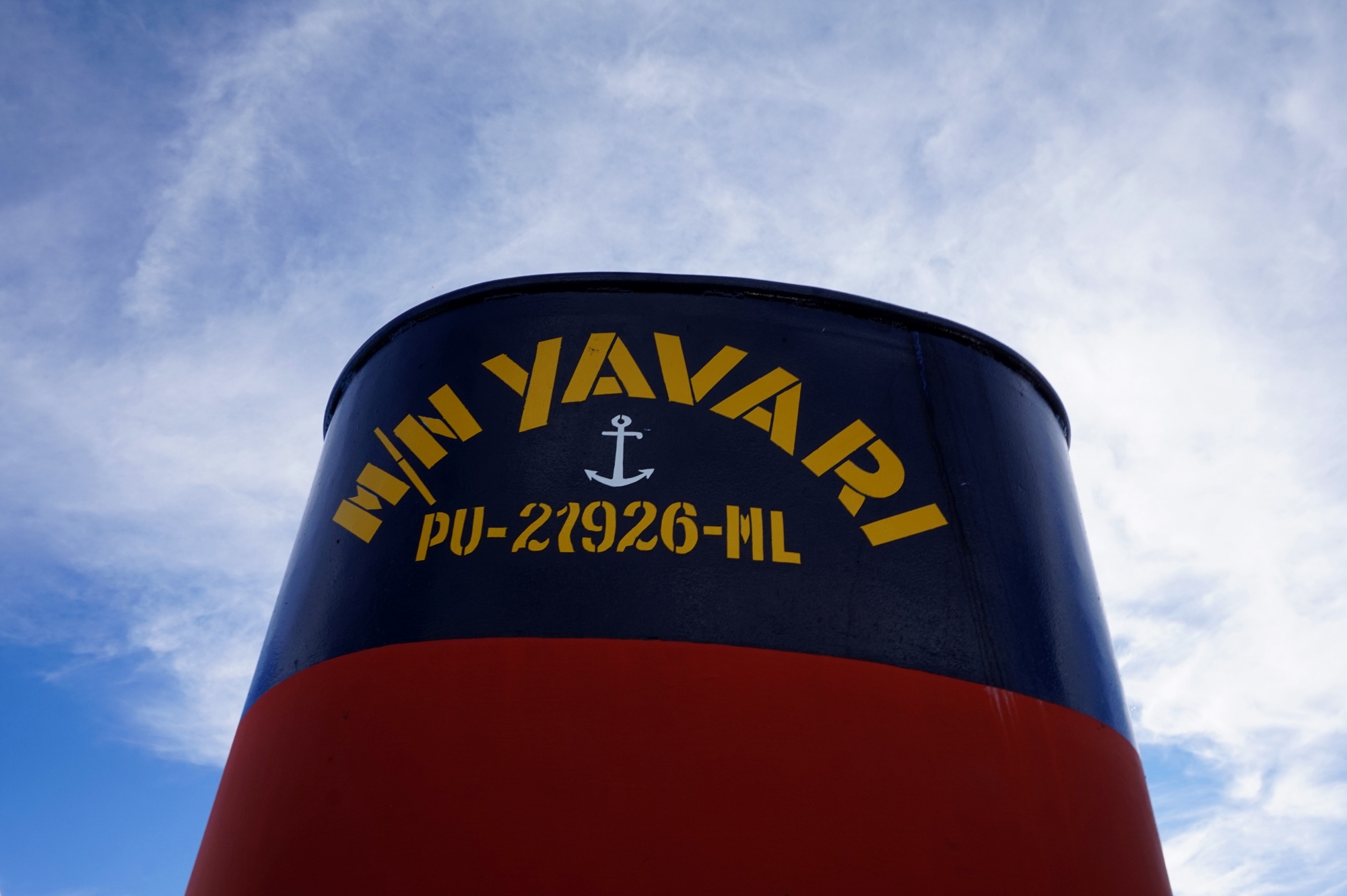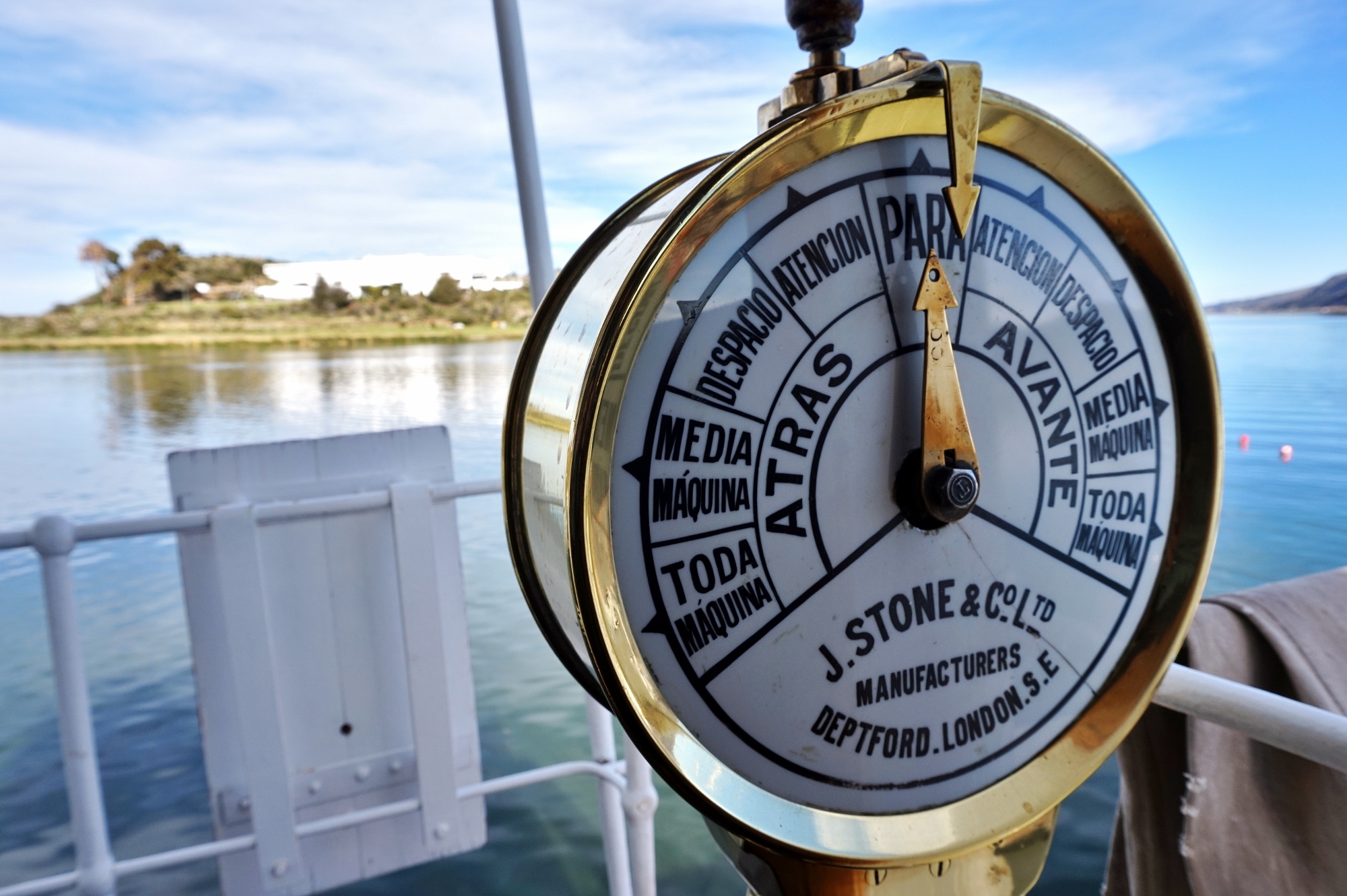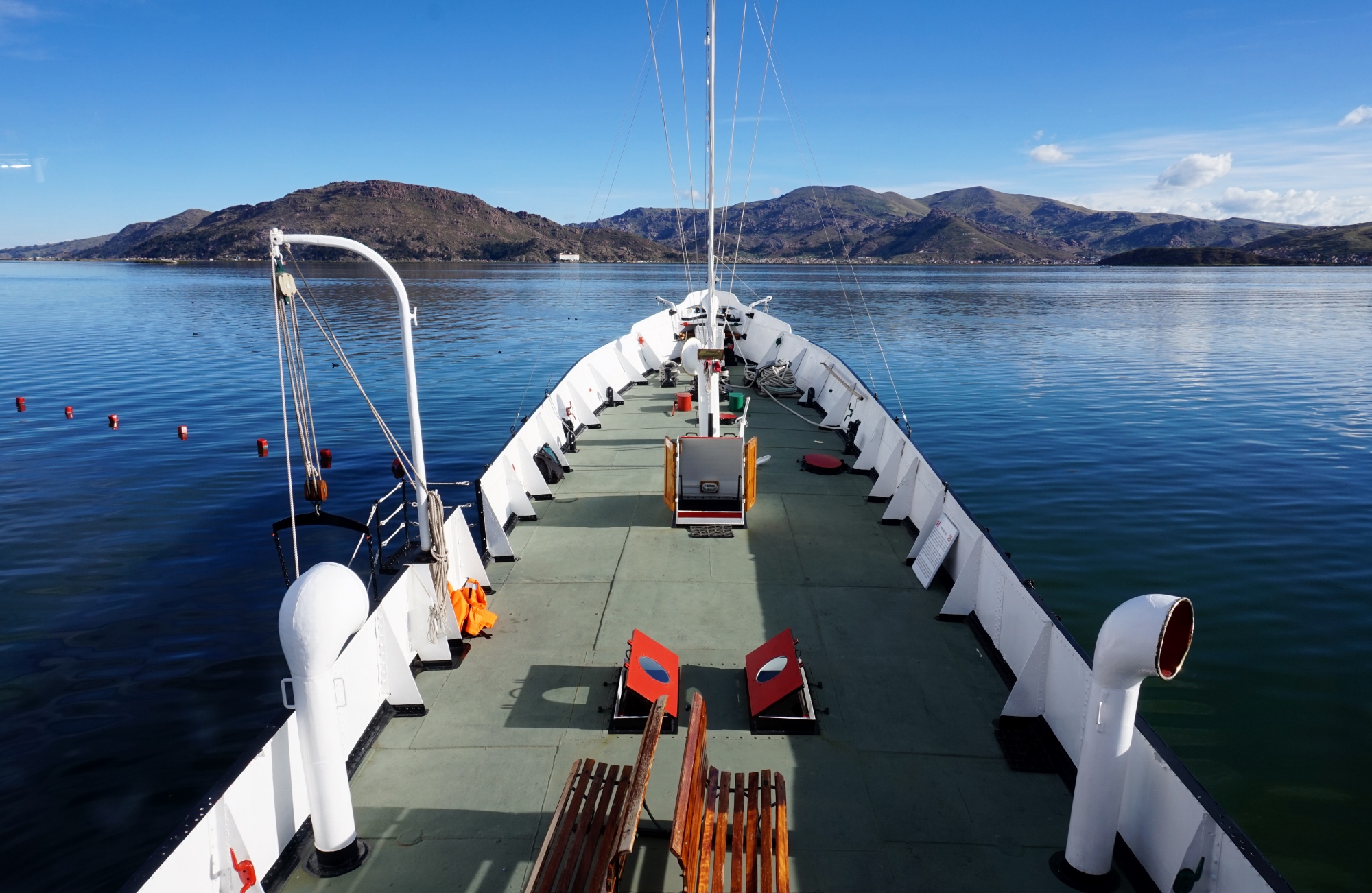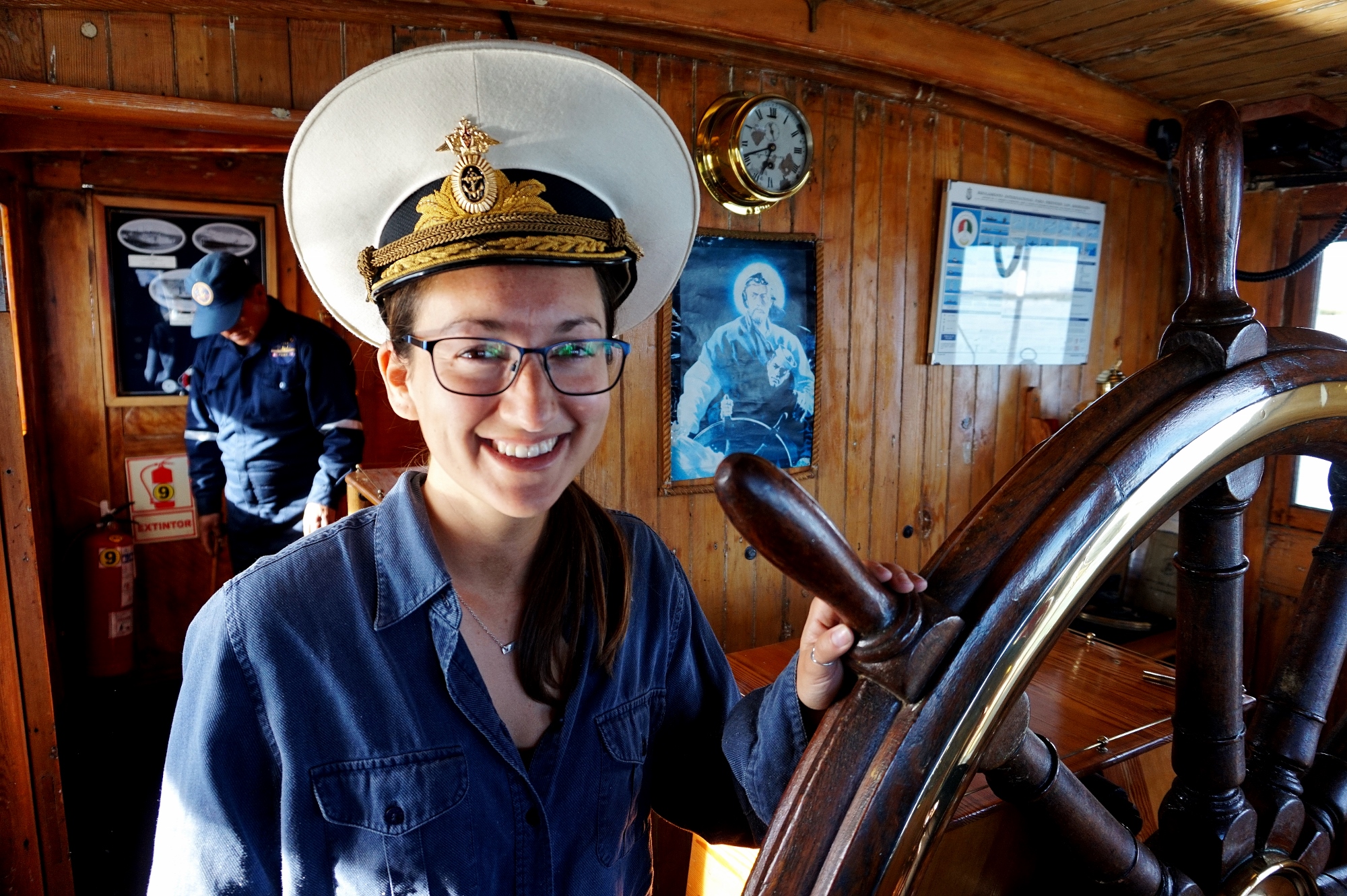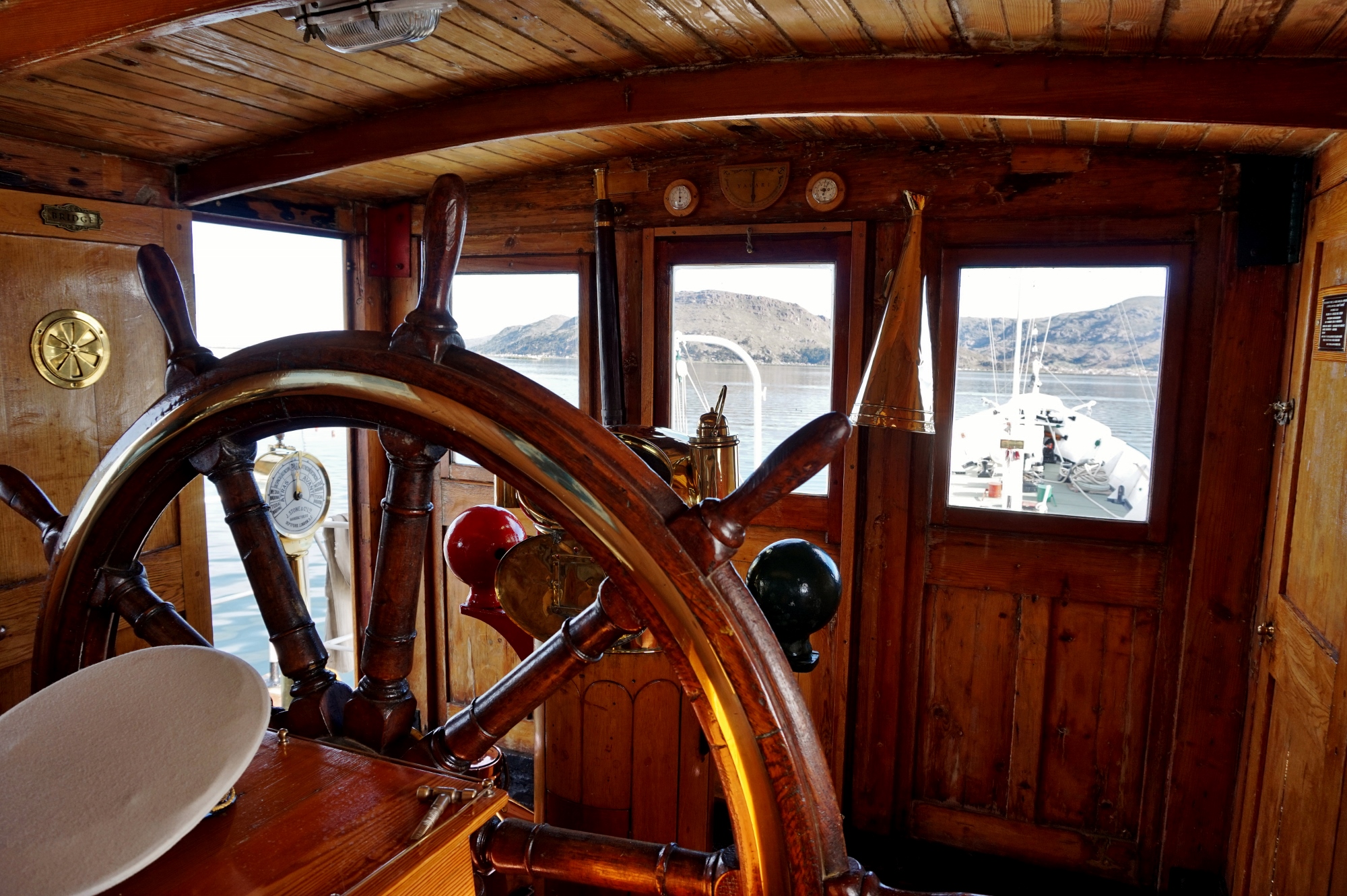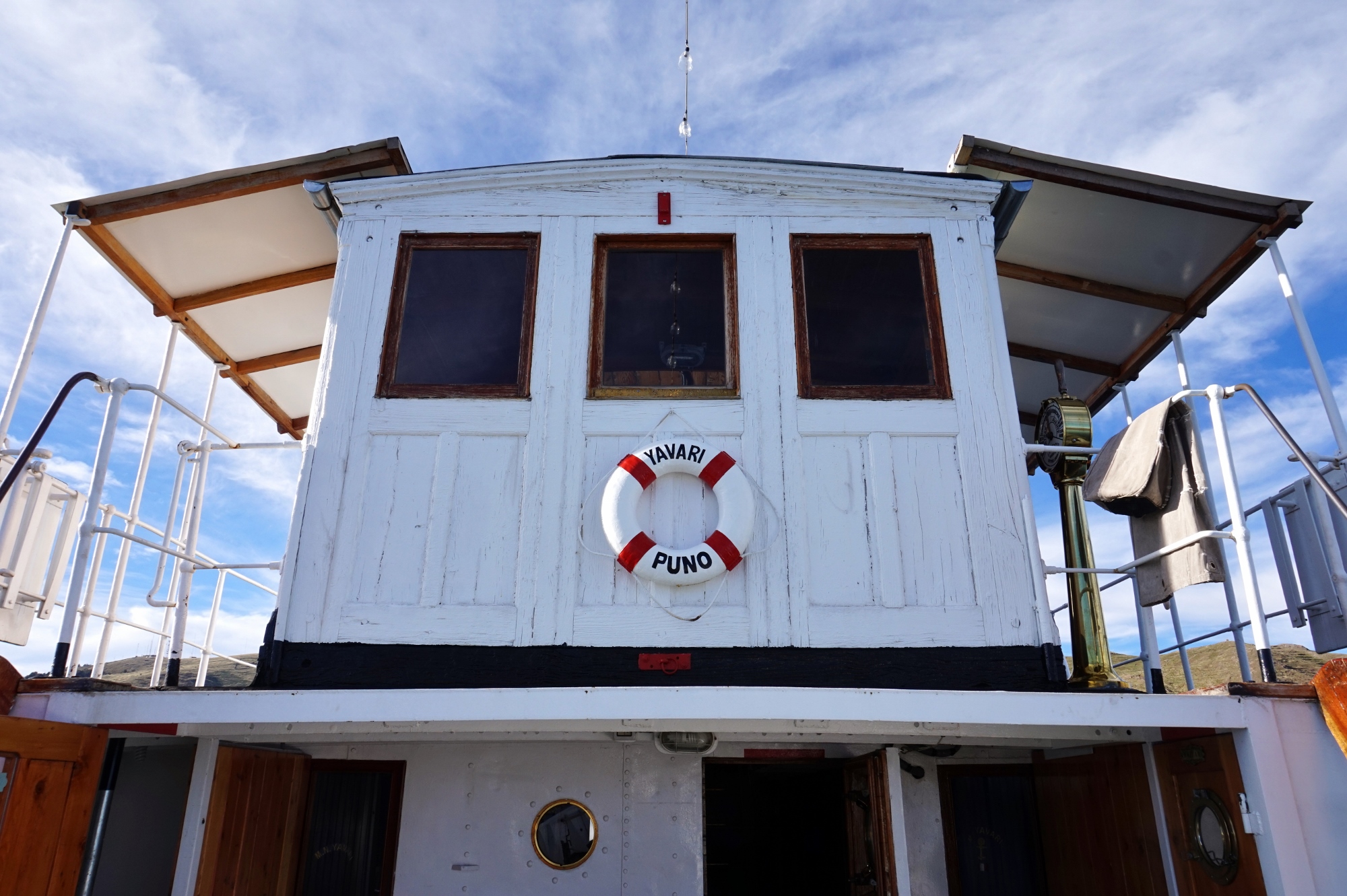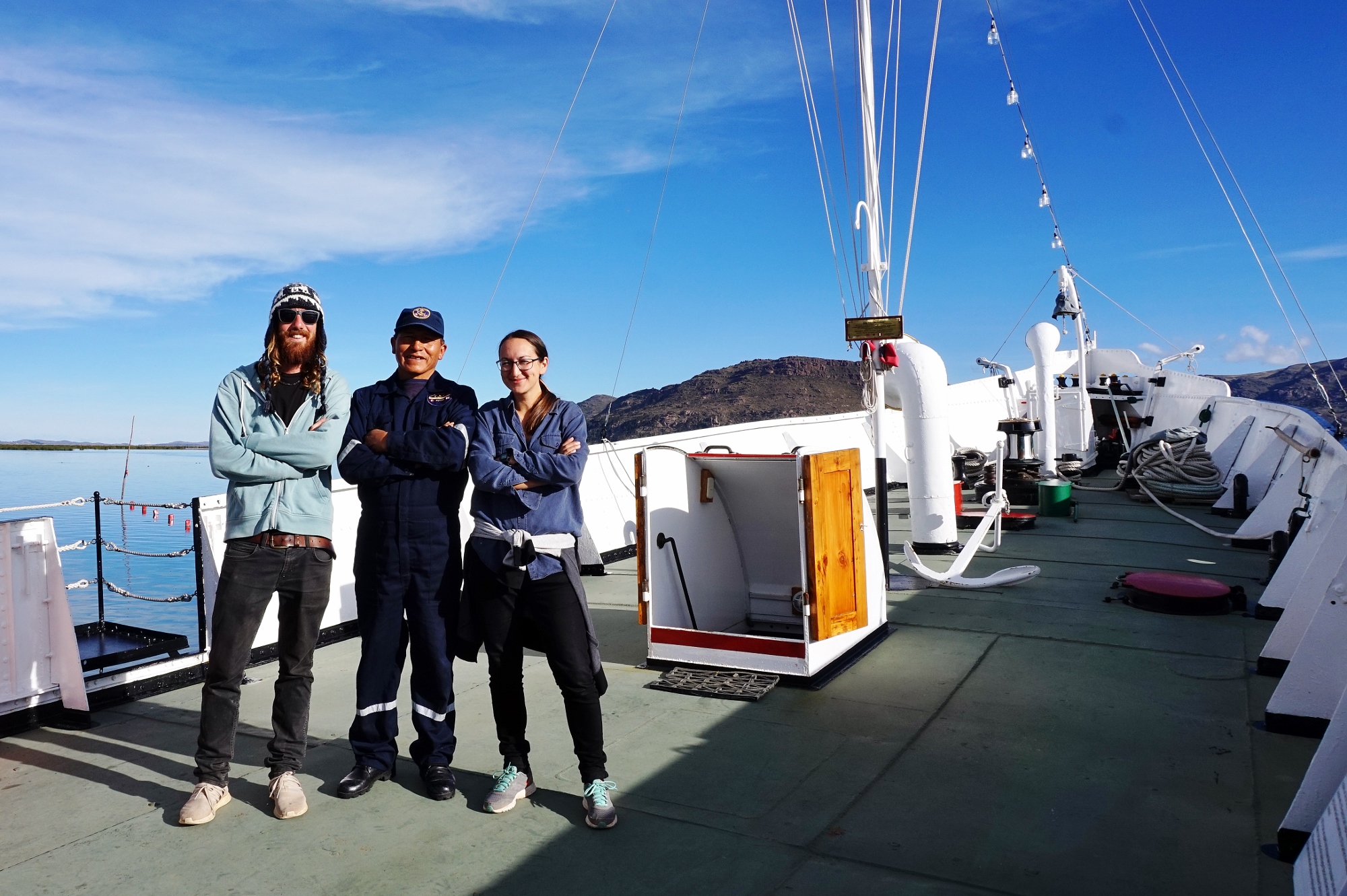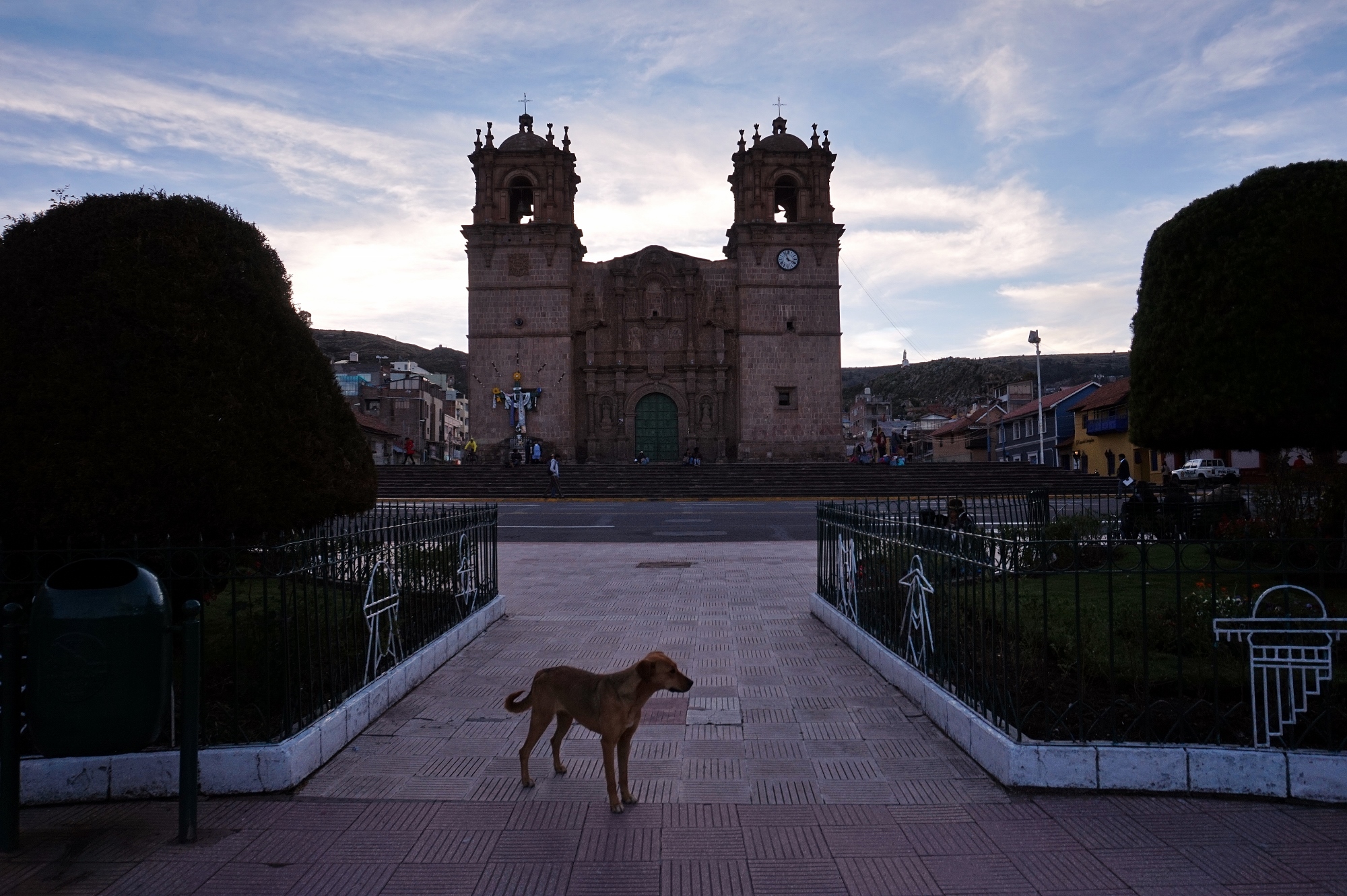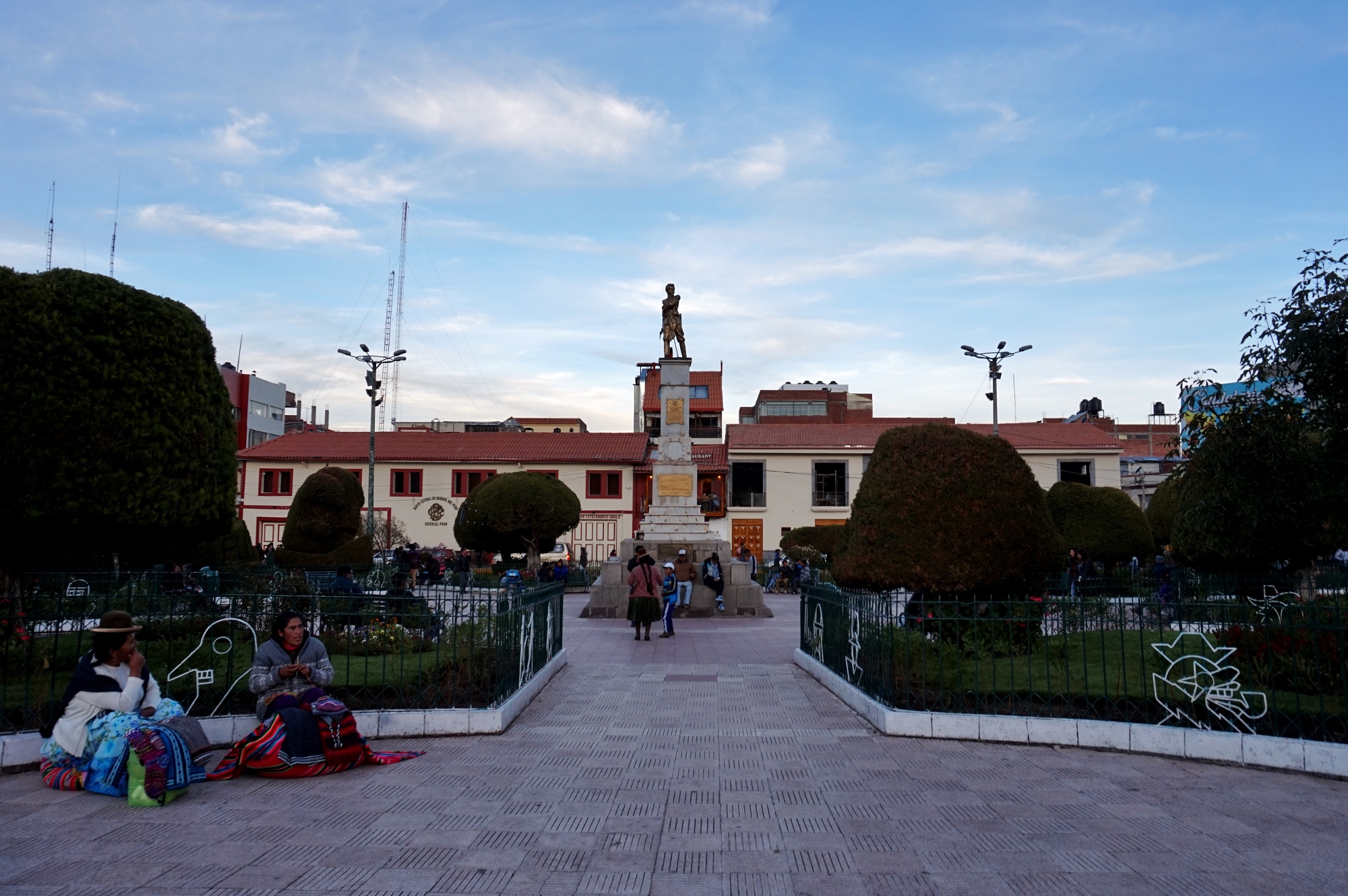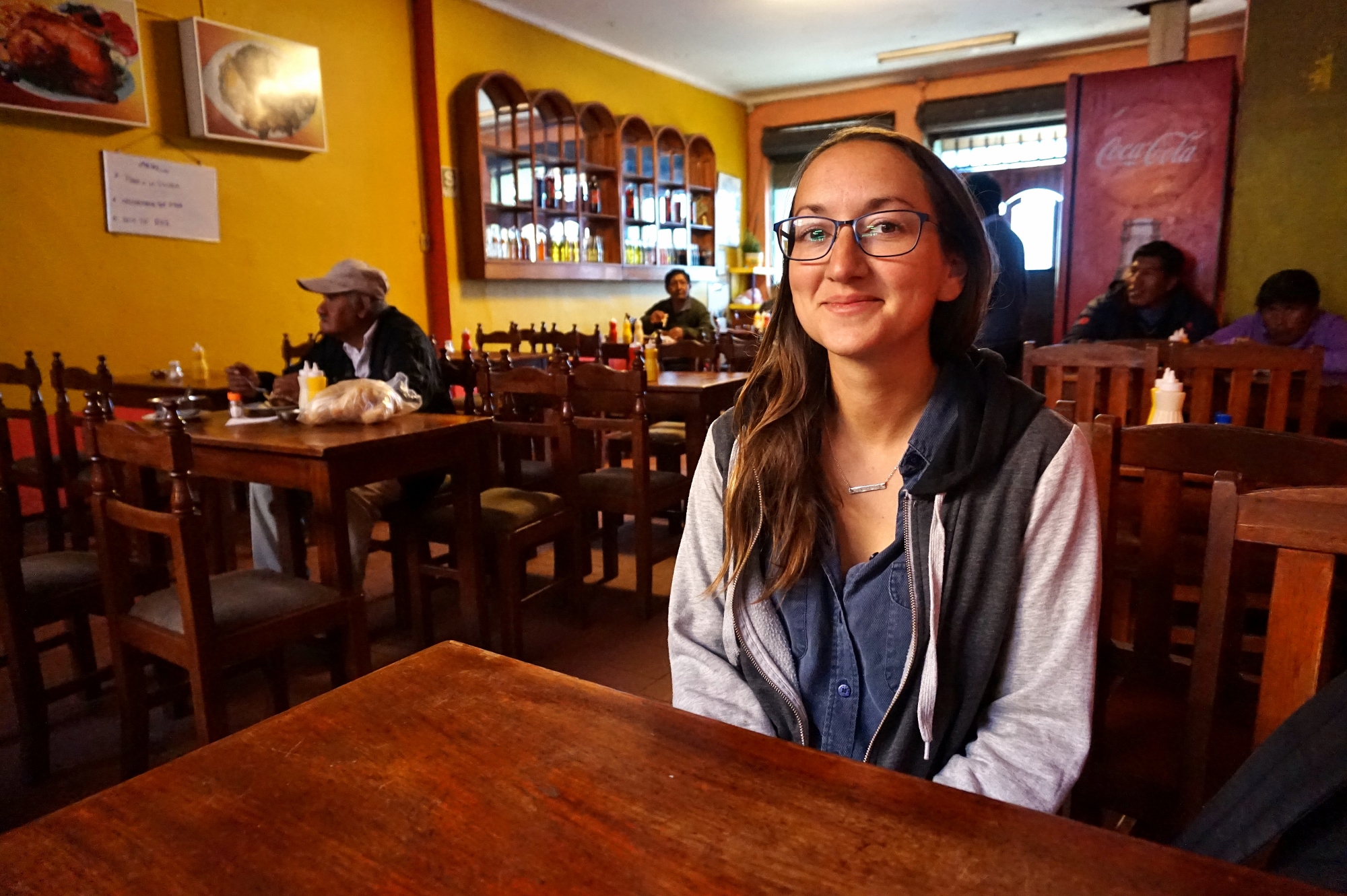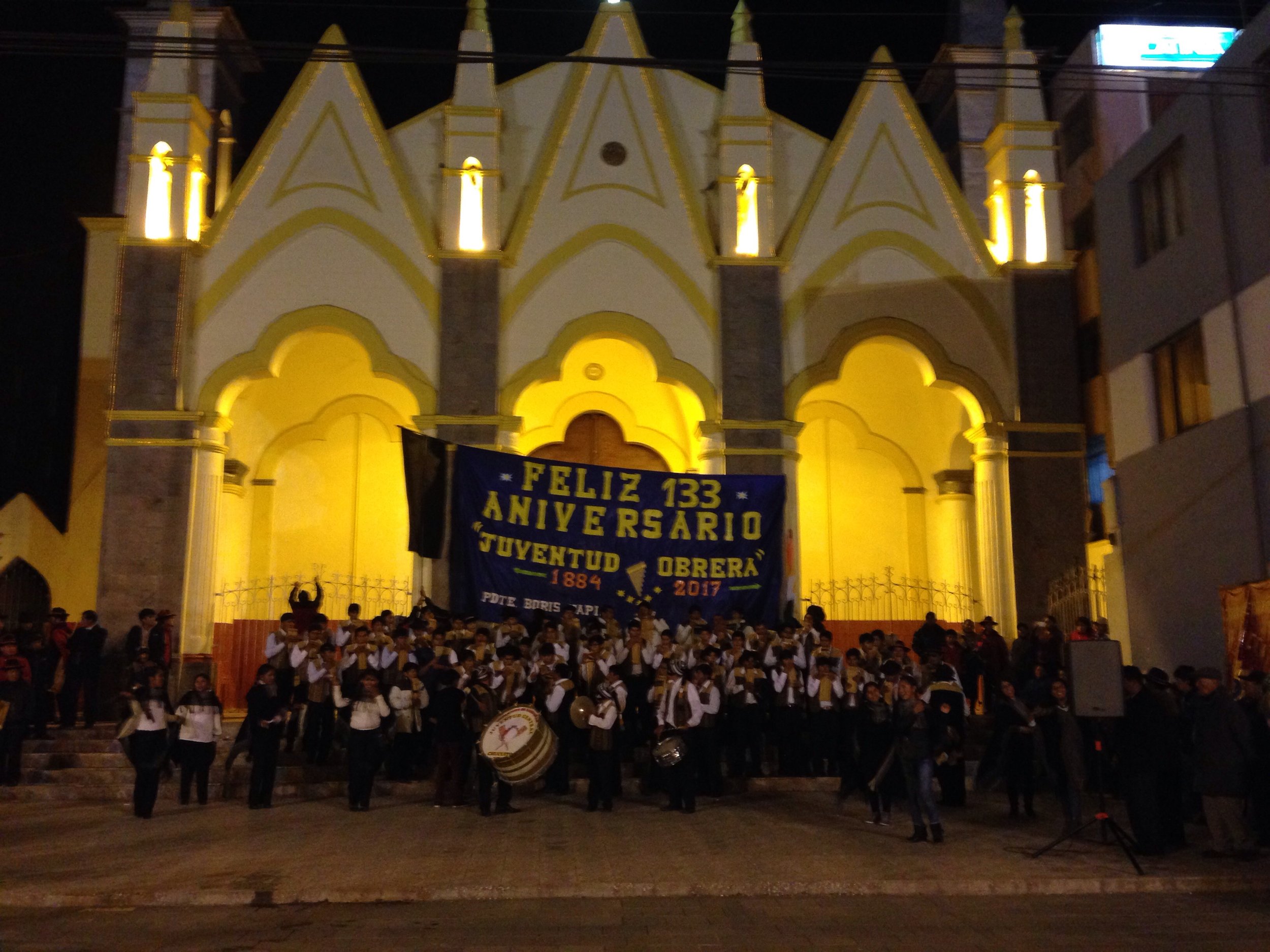LAKE TITICACA

We looked out the window of our hostel in Puno and it was raining, probably not the best day to be walking on floating islands made of reeds! Still, there's no time like the present so off we went on our tour of the islands of Lake Titicaca. At 3800 meters above sea level it is the worlds highest "Navigable lake"... what ever that means.
Floating Islands of Uros
Our first stop was to the islands of Uros. This collection of floating islands are made up of 87 islands, with 1200 people calling them home. On the first island we visited there were seven families and 22 people. The Uros people first took to the water when the Spanish came, to escape from being forced to work as slaves. At first they lived on boats made of reeds with a small shelter on board, but in 1944 after the effects of El Niño were felt, dramatically reducing the water level of the lake, the Uros folk realised they could make floating islands from the reeds and their buoyant roots.
The islands are made by cutting a big piece of root from the massive area growing on the lake. This is approximately one meter thick. On top of this is piled two meters of reeds, criss-crossed on top of each other for strength. To build a new island takes around one year and the islands last for 30 to 40 years. Islands can be cut to form two smaller islands (say if a family has a disagreement or some people want to move out) but likewise, islands can be knitted together to form a bigger land mass.
The top level of the island has to be replenished once a month, and the new reeds are simply placed on top of the old ones. The houses are built on higher platforms to try to stop the water seeping up. These platforms are around half a metre high and usually have steps up into the house. Inside the houses are a bed and space to hang clothes. We were surprised to learn that they have electricity, via a solar panel!
The principle activity of the people is fishing and tourism. There are some fish native to Lake Titicaca but also some introduced species such as trout. They divide the days catch into three, one third they eat, the second third they sell on the mainland and the final third they use to trade with other people to obtain food or supplies that they cannot grow themselves.
In the past, all the islands had an elected leader who took office for one year and was usually a grandfather. Now though, it is a married couple who are in charge but their term is only for three months before the next couple take their turn.
We spoke with a girl who was 22 and had huge colourful pom poms on the end of her plaits. She said they are to signify that she is still single. When she marries, they will be swapped for black pom poms.
Our guide explained that the population is decreasing as the younger generation have started to move to the mainland to pursue education and career opportunities. It's sad that this way of life could be lost within a few generations, however I can't blame the young folk for wanting more, especially after seeing boat loads of tourist with fancy trainers, cameras and stories of other ways to live swinging by each day whilst visiting the lake.
After looking around the island we were on (which took a maximum of five minutes including stopping to take photos) we were rowed on a huge, slightly unstable reed boat over to another floating island for a cup of tea.
Amantani Island
The three hour voyage to Amantani island where we would be spending the night was beautiful and peaceful, firstly through the reeds and then out on the open lake.
When we arrived there was a bit of confusion as to where we were staying. It runs on a rotation system between the ten communities on the island so that they all get their fair chance to host tourists and obviously make some money. An older lady had baggsied us and two other guys but it turned out she only had a dorm room and we were expecting a room per party. After some frantic Spanish/Quechua we got moved to her sons house who had separate rooms. He was called Freddy, his wife was Violeta and their two children were Selena and Diego, and they were lovely. Also staying at their house were two sisters and one of their sons who were on the same boat as us. We settled into our home for the night and then went downstairs for lunch. It was a really delicious quinoa soup to start and a more bland rice, corn and friend cheese for main.
Today was a special day on the island because it was Pachamama's day. There are two hills on the island, Pachatata and Pachamama, and on top of both is a temple. Only one day of the year are the gates are unlocked and a ceremony carried out inside where offerings are given to Mother Earth. That happened in the morning away from tourists prying eyes but the festivities were carrying on into the afternoon. We walked up the hill and saw locals dancing down, waving coloured flags and playing music. It was beautiful to see because it gave us a small insight into their lives. We also saw that each community on the island have their own football pitch and there's another big pitch in the middle of the island for the island tournament!
In between the two hills, the stragglers of the party were still hanging out, eating and drinking. Walking to the far hill gave a beautiful view which we stopped and gazed at for a while before rejoining the group at the top for sunset. The pinks in the sky reflected on the still lake and we had bought a beer from one of the ladies to accompany the view.
We had been advised when we booked the tour that it would be much appreciated if we gave the host family a gift of fruit as they rarely have access. We gave a bag of oranges, apples and sweet peppers and Violeta seemed really grateful which was lovely.
The traditional dress on the island were the heavy wool skirts that we'd seen in Cusco, but worn with a special embroidered white shirt and a thick hand woven waist belt. For warmth they had a black scarf. Both the scarf and the shirt are made by the husband and given to the wife on their wedding day. The women weave the waist belts and also make their husband a special bag for coca leaves. The work was exquisite needlepoint and I enjoyed looking at all they'd made tremendously. Freddy had been taught to sew by his grandfather and had taught his son. In their hair the women wore pom poms, coloured if they are single and black when they are married. They were rather large and threatened to dangle in the cooking pot. On the island, the women wore different coloured skirts to signify which community they belonged to. The men wore black wool trousers, a white shirt, black waistcoat and hat.
In the evening we were given the chance to dress in their traditional clothes and attend a party. I loved wearing the clothes (Will didn't) but we could have done with out the cringey tourist party. The music was awesome and Freddys son was in the band but it all felt rather forced and we both agreed we'd have much preferred to hang out at their house and get to know them a little better and learn more about the way of life on the Island.
Taquile Island
The next day we sailed over to Taquile island. The journey was horrid as the lake was so choppy because of the wind. I sat outside desperately concentrating on not throwing up.
When we got there we had a little lecture on the various hat wearing traditions on the island. The men learn to knit from a young age and make themselves hats, which are worn in certain ways to denote whether they are single, dating or married. The hats are like nothing I've seen before, they are very long and worn flopped over, they also have the hugest most amazing colourful Pom Pom on the end. There are also really brightly coloured beautifully patterned hats that the leaders wear under their boiled wool hats. I loved the work and bought one. The men were out knitting in the main square. People on this island seemed a lot less talkative and friendly... we didn't really work out why but you should definitely ask for permission before taking peoples photographs here.
The Yavari
After a slightly less choppy journey back to the mainland we took a taxi straight away to catch a tour of the Yavari, a ship that is moored on the lake. We were interested to visit not only because it was built in England in 1862 but also because of its fascinating voyage to get from England to Lake Titicaca. It was built in 2766 pieces and shipped around Cape Horn before arriving in Arica (now a border town on the Chilean side of the Peru-Chile border) here the pieces made there way by train for 40miles to Tacna and then came the final part... They were carried by mules the final 220miles of the way and then assembled on the lake. This process took 6 long years but what a journey!! The ship was commissioned by the Peruvian government as a precaution/deterrent to Bolivia across the lake. There were a few other army ships too at the time.
In 1987 an English lady came across the decaying ship and decided that it should be restored to its former glory. Nearly 30 years later and it is almost finished. A brilliant chap named Maximo Flores showed us round and told us all the parts he had lovingly and painstakingly spent almost half his life working on. He had been in the army and worked on the sister ship for 8 years prior to working on the Yavari and so he knew his way around. The whole engine had been done, the main body of the ship, the bedrooms and updating it so that it passed today's safety requirements. He had done a bloody good job and hoped that within a few months it would be ready to accept passengers and sail over the lake once more. It was already a BnB with 7 beds your could hire for the night. It would be an incredible place to sleep when staying in Puno and I would highly recommend checking it out and booking before you go as it's done by email and we didn't have time to sort it out.
In the evening after a fabulously cheap and awesome chicken dinner we stumbled across a parade of different groups of panpipers. The music and atmosphere were brilliant and we matched behind one group whose music we liked the best. It concluded at the town hall where we watched in fascination as 4 guys attempted to rig up a massive sign but had nothing to tie the corners to. Their attempts and various ideas didn't work but it was very amusing to watch.
Tomorrow we head to Bolivia

